




URBANISME, ARCHITECTURE, ARCHITECTURE D’INTERIEUR ET DESIGN
URBANISM, ARCHITECTURE, I NTERIOR ARCHITECTURE AND DESIGN
Réhabilitation et valorisation d’un ensemble de bureaux
Rehabilitation and valorization of a group of offices
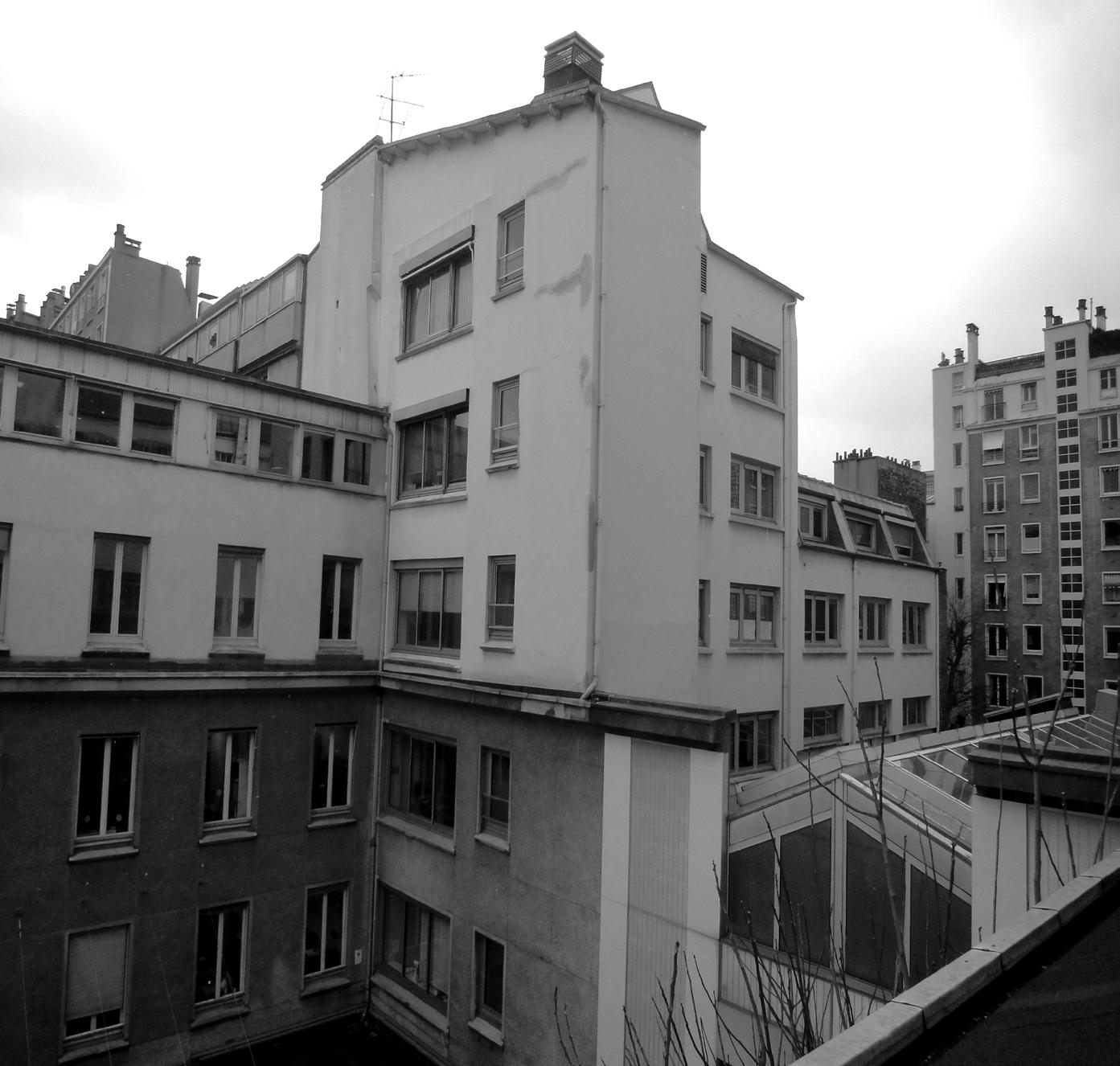
Notre projet du 119-123 boulevard de Grenelle vise à réhabiliter et à valoriser un ensemble immobilier de 11 800 m², nos principaux axes de travail sont : la requalification complète des façades pour une esthétique et une efficacité énergétique améliorées, mais aussi le traitement intégral des patios intérieurs afin d’offrir aux bureaux une meilleure luminosité. L’ensemble du projet profite de la mise en place d’une démarche environnementale, d’une amélioration de l’accessibilité et d’une mise en conformité globale.
Les plans d’étages sont quant à eux entièrement revus et optimisés ainsi que les circulations verticales, et de véritables halls aménagés sont créés. Enfin une attention particulière est portée sur la requalification des espaces libres extérieurs avec notamment la végétalisation des terrasses et des patios.
Our project of 119-123 boulevard de Grenelle aims to rehabilitate and enhance a real estate complex of 11,800 m², our main areas of work are: the complete requalification of facades for improved aesthetics and energy efficiency, but also the integral treatment of interior patios to give offices a better light. The entire project benefits from the implementation of an environmental approach, an improvement of accessibility and a global compliance.
The floor plans are completely revised and optimized as well as the vertical circulations, and real halls are created. Finally, a special attention is paid to the requalification of outdoor open spaces including the revegetation of terraces and patios.

Client / Client : Bleecker • Lieu / Location : Paris, France • Programme / Program : Réhabilitation d’un ensemble de bureaux / Réhabilitation of an office building
• Architectes / Architects : Bechu & Associés • Architecture d’intérieur / Interior architecture : Volume ABC • Superficie / Surface Area : 11 769 m² • Statut / Status : Livré en 2022 / Delivered in 2022
>> Developpement durable / Sustainable developpment : HQE et BREEAM certifié / HQE and BREEAM certified
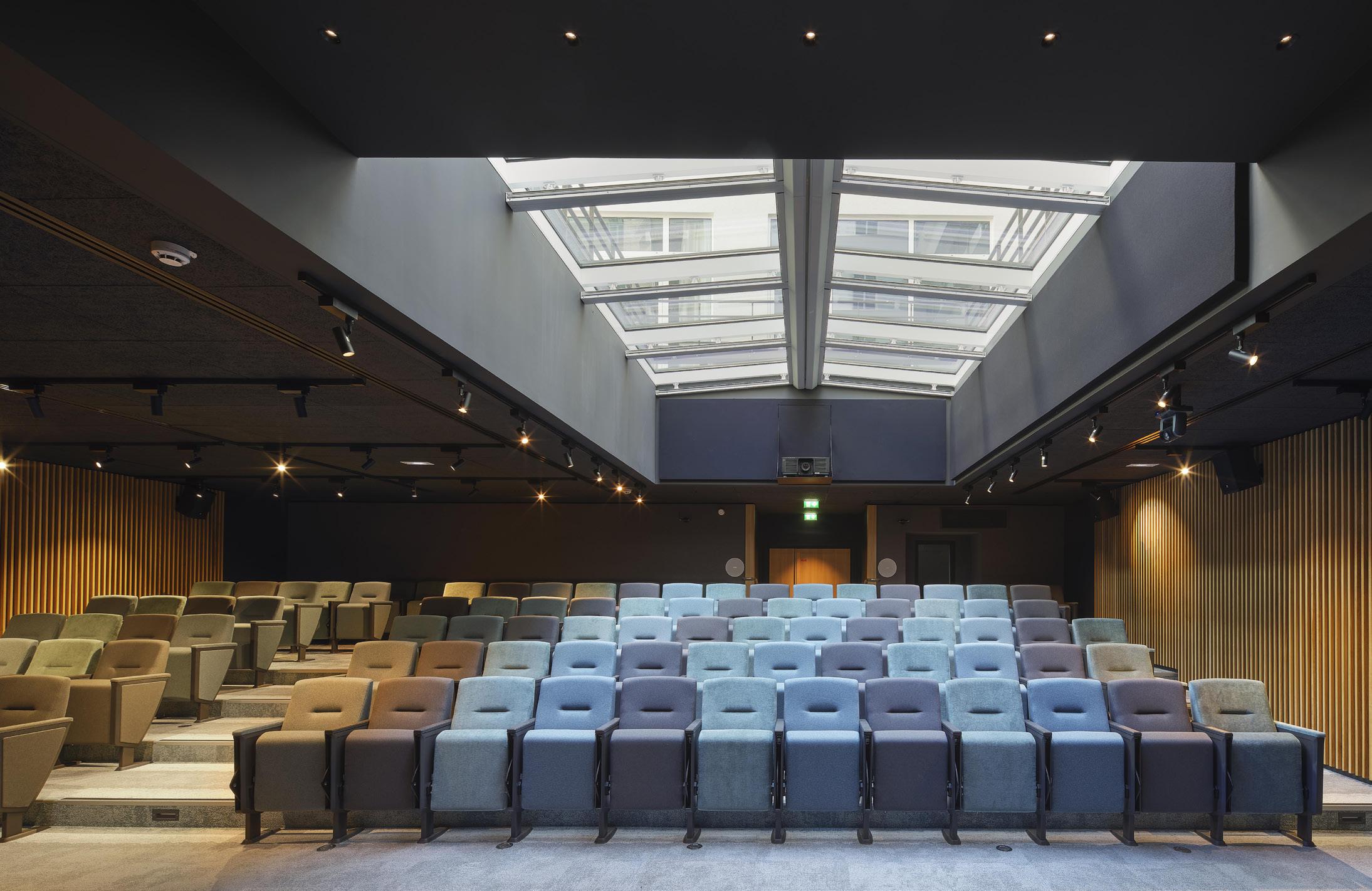



Conserver, adapter, transmettre
Conserve, adapt, transmit

La tour The Circle, élément emblématique urbain située au quai André Citroën Paris a été conçue à la fin des années 80, est aujourd’hui obsolète du point de vue énergétique et environnemental.
Le projet s’inscrit dans un objectif de réhabilitation lourde visant: Sa mise aux normes thermique, acoustique, en terme d’hygiène, mais aussi au niveau de son plan fonctionnel pour répondre aux nouveaux standards des espaces de travail Nous développeons un projet au concept architectural passif « low-tech » accompagné d’outils techniques performants et peu énergivores. C’est l’occasion de développer un projet exceptionnel en bord de Seine qui transforme l’héritage urbain du Paris des années 70 en un bâtiment qui s’ouvre sur la ville et qui inclut son environnement par une refonte de ses abords et de son socle. À ce titre, nous proposons de transformer l’actuelle Tour Cristal en une tour de bureaux à haute performance, avec une dépendance réduite à la consommation d’énergie et des conditions d’éclairage naturel maximisées pour les espaces intérieurs.
The Circle tower, an emblematic urban element located on the Quai André Citroën in Paris, was designed at the end of the 1980s and is now obsolete from an energy and environmental point of view.
The project is part of a major rehabilitation objective aimed at: Its upgrading to thermal and acoustic standards, in terms of hygiene, but also in terms of its functional plan to meet the new standards of workspaces
We are developing a project with a “low-tech” passive architectural concept accompanied by high-performance and energy-efficient technical tools. This is an opportunity to develop an exceptional project on the banks of the Seine which transforms the urban heritage of Paris from the 1970s into a building which opens onto the city and which includes its environment by redesigning its surroundings and its basement. As such, we propose to transform the current Tour Cristal into a high-performance office tower, with reduced dependence on energy consumption and maximized natural lighting conditions for interior spaces.

Client / Client : Tishman Speyer • Lieu / Location : 7-11 Quai André Citroën 75015 PARIS• Programme / Program : Restructuration d’un immeuble de bureaux IGH / Great height offices renovation • Architectes / Architects : Bechu & Associés • Architecte associé / Associate architect : BIG • Superficie / Surface Area : 27 376 m² • Statut / Status : en cours - Livraison 2025 / In process - Delivery 2025 >> Developpement durable / Sustainable developpment : BREEAM RFO 2015 Excellent HQE 2015 Rénovation (Certivea) Exceptionnel WELL CORE 2 Silver (avec études pour passer Gold)WIREDSCORE (institut wired score) Silver (avec études pour passer Gold) / BREEAM RFO 2015 ExcellentHQE 2015 Renovation (Certivea) Exceptional WELL CORE 2 Silver (with studies to pass Gold)
The rebirth of a neighborhood
Le projet est situé à Aubervilliers, à l’articulation entre la voie historique d’accès au centre-ville et deux rues nouvelles. Il constitue la dernière étape de mutation de cette partie de la ville : celle de l’urbanisation progressive des friches industrielles qui barraient le développement du centre-ville.
Le projet redessine le parcellaire et la trame viaire agricole pour répondre à trois grandes attentes du développement urbain :
•Il désenclave le nord du quartier par une promenade plantée qui sépare deux nouveaux îlots clairement identifiables.
•Il révèle des installations industrielles remarquables, actuellement enclavées dans le site.
• Il donne une place majeure à la végétation et organise les espaces verts en cheminements paysagers, deux venelles et une promenade, qui rayonnent à partir de l’ancienne cour de l’usine.
Plusieurs bâtiments patrimoniaux ( le pavillon administratif, la grande halle précédée d’un auvent, la cheminée, deux des trois nefs couvertes en sheds, deux hangars de stockage datant de la fin du XIXème et début du XXème siècles) retrouvent leur aspect initial, sont mis en conformité et aménagés pour accueillir des maisons en bande, des appartements atypiques et des espaces de convivialités.
Le nouveau quartier est imaginé autour de ce cœur historique. 13 immeubles d’habitations collectives complété par des commerces de proximité sont alignés le long de la nouvelle promenade.
L’organisation du nouveau bâti, est modulée pour donner, une réplique adaptée à des visà-vis originaux et variés tout en préservant des continuités.
Tout l’enjeu du projet se trouve dans cette recherche de l’équilibre délicat et indispensable entre la diversité et les continuités des réponses à apporter à un environnement hétérogène qu’il faut fédérer sans trahir.
Le végétal est un élément important de la réponse. Il est omniprésent, structuré par les cheminements. Il domine sur les terrasses où les toitures végétalisées alternent avec les toits pour composer une véritable cinquième façade.
The project is located in Aubervilliers, at the junction between the historic access road to the city center and two new streets. It constitutes the last stage of change in this part of the city: that of the progressive urbanization of industrial wastelands which blocked the development of the city center.
The project redesigns the plot and the agricultural road network to meet three major expectations of urban development:
•It opens up the northern part of the district via a planted promenade which separates two new, clearly identifiable blocks.
•It reveals remarkable industrial facilities, currently enclosed within the site.
• It gives a major place to vegetation and organizes the green spaces into landscaped paths, two alleys and a promenade, which radiate from the old factory courtyard.
Several heritage buildings (the administrative pavilion, the large hall preceded by an awning, the chimney, two of the three naves covered in sheds, two storage sheds dating from the end of the 19th and beginning of the 20th centuries) have regained their initial appearance, are brought into conformity and fitted out to accommodate townhouses, atypical apartments and convivial spaces.
The new district is designed around this historic heart. 13 collective housing buildings supplemented by local shops are lined up along the new promenade.
The organization of the new building is modulated to give a replica adapted to original and varied vis-à-vis while preserving continuity.
The challenge of the project lies in this search for the delicate and essential balance between diversity and the continuities of the responses to be provided to a heterogeneous environment that must be united without betraying.
Plants are an important part of the answer. It is omnipresent, structured by pathways. It dominates on the terraces where the green roofs alternate with the roofs to compose a real fifth facade.
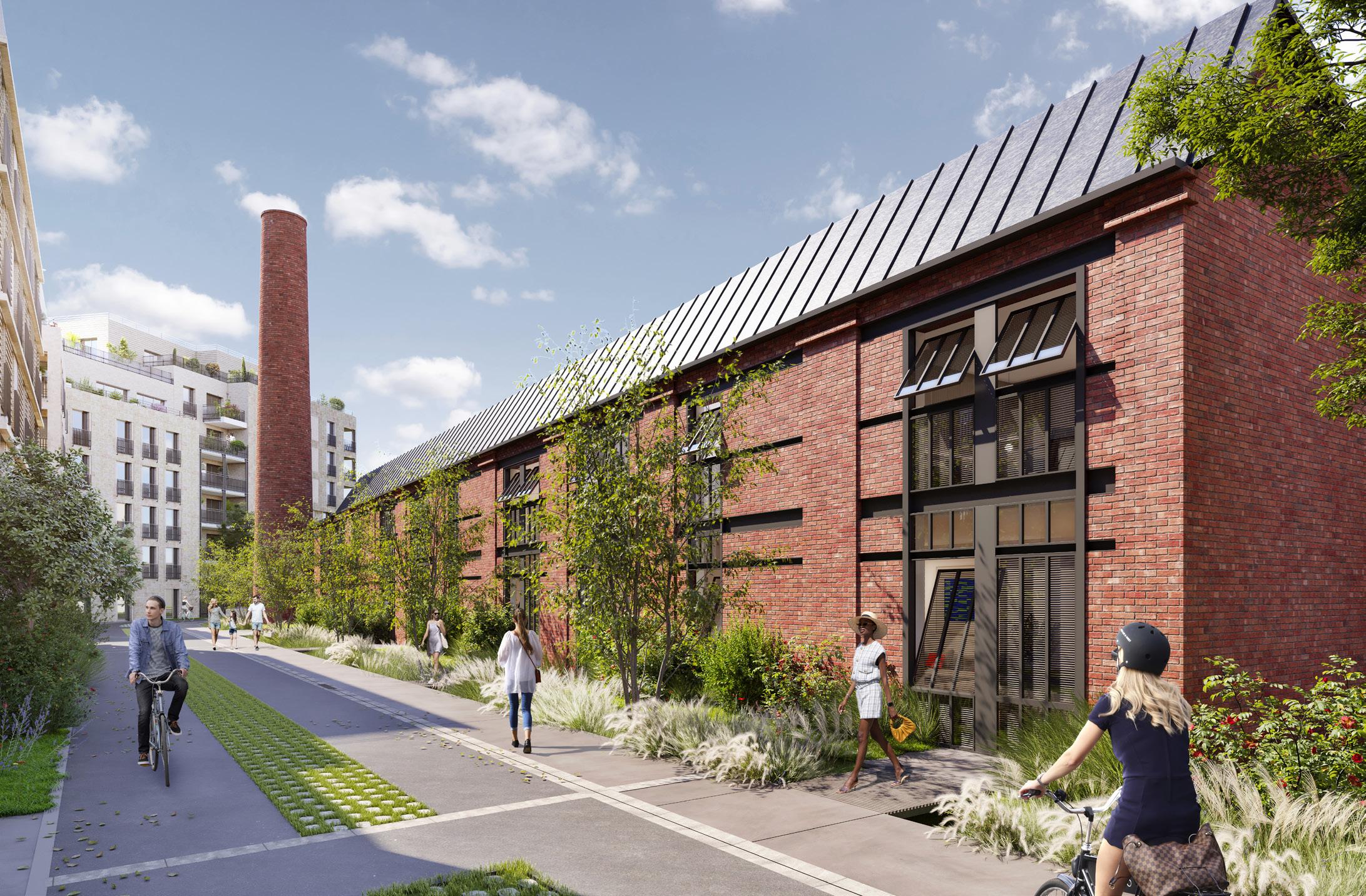

Client / Client : Nexity • Lieu / Location : 49 à 63 avenue de la République / 8-14 rue Guyard Delalain / 117 rue des cites à Aubervilliers • Programme / Program : Logements et commerces 300 lgts dont 13 individuels / Housing and shops
300 lgts including 13 individual • Architectes / Architects : Bechu & Associés • Superficie / Surface Area : 21 700 m² • Statut / Status : En cours - Livraison en 2025 / In progress - delivery in 2025 >> Developpement durable / Sustainable development : RT 2012 -20 % minimum - BBCA pour un immeuble expérimental - Grande opération de dépollution / RT 2012 -20% minimum - BBCA for an experimental building - Major depollution operation
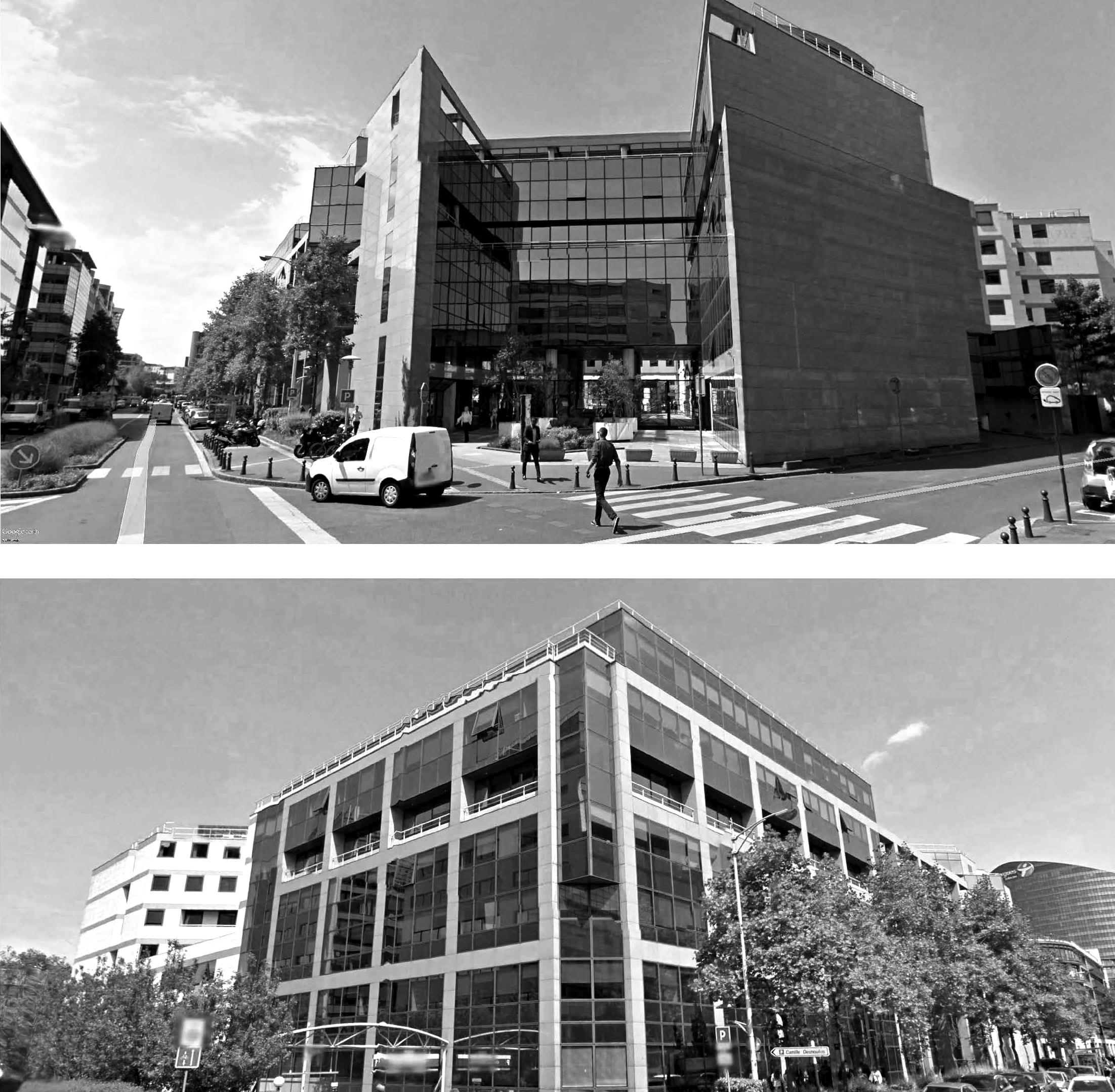
Cette opération de restructuration/extension d’un bâtiment que nous avions construit il y a 10 ans est la suite logique du (re)développement de la ZAC Forum Seine. A l’origine refermé sur lui-même dans un contexte de ZAC encore très industrialisée, nous venons aujourd’hui le transformer en l’agrandissant et en l’ouvrant à la ville par l’installation d’une rue intérieure et de commerces. Ses façades sont végétalisées à l’aide de serres incrustées qui rythment et jouent avec les niveaux.
This project to restructure/extend a building originally constructed by our agency 10 years ago is a logical step in the (re)development of the Forum Seine ZAC (mixed development zone). Originally designed as a closed space within a heavily industrial area, we are now transforming the building by expanding it and opening it up to the city, installing a street running through the complex and retail units. The living facades feature inlaid greenhouse areas that give the building a sense of rhythm and play with levels.

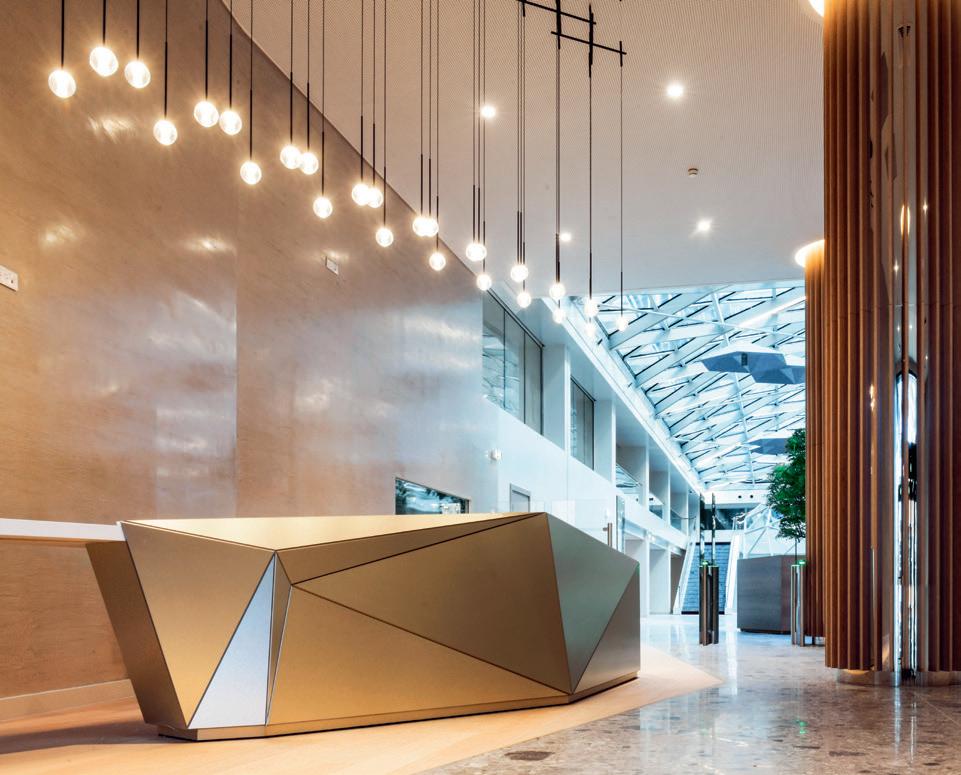
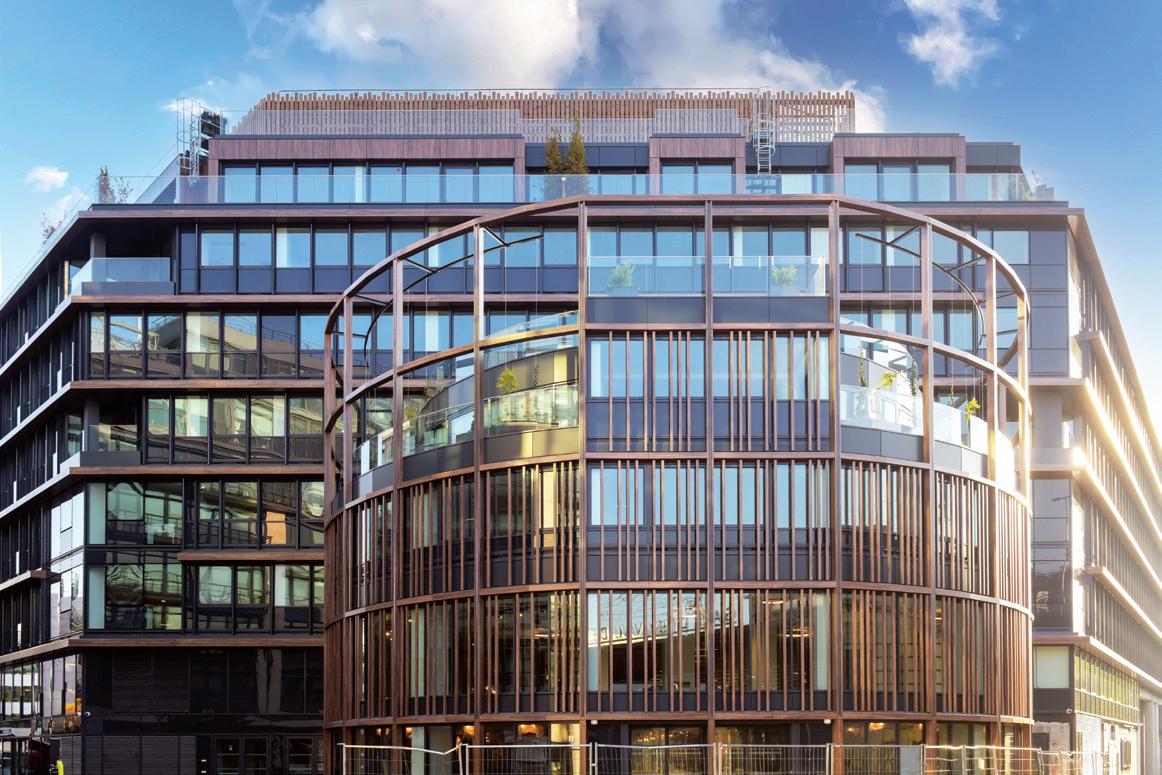

Client / Client : Bouygues Immobilier • Lieu / Location : Issy-Les-Moulineaux, France • Programme / Program : Réhabilitation et extension d’un ensemble de bureaux et commerces / Renovation and extension of an office building with ground floor retail • Architectes / Architects : Bechu & Associés • Superficie / Surface Area : 40 000 m² dont 13 700m² d’extension / 40,000 m² including 13,700m² of extension • Statut / Status : Livré en 2021 / Delivered in 2021 Développement durable / Sustainable developpment : Certifié BREEAM Very good, Wired Score Platinium, R2S, E+C- / BREEAM Very good, Wired Score Platinium, R2S, E+C- Certified


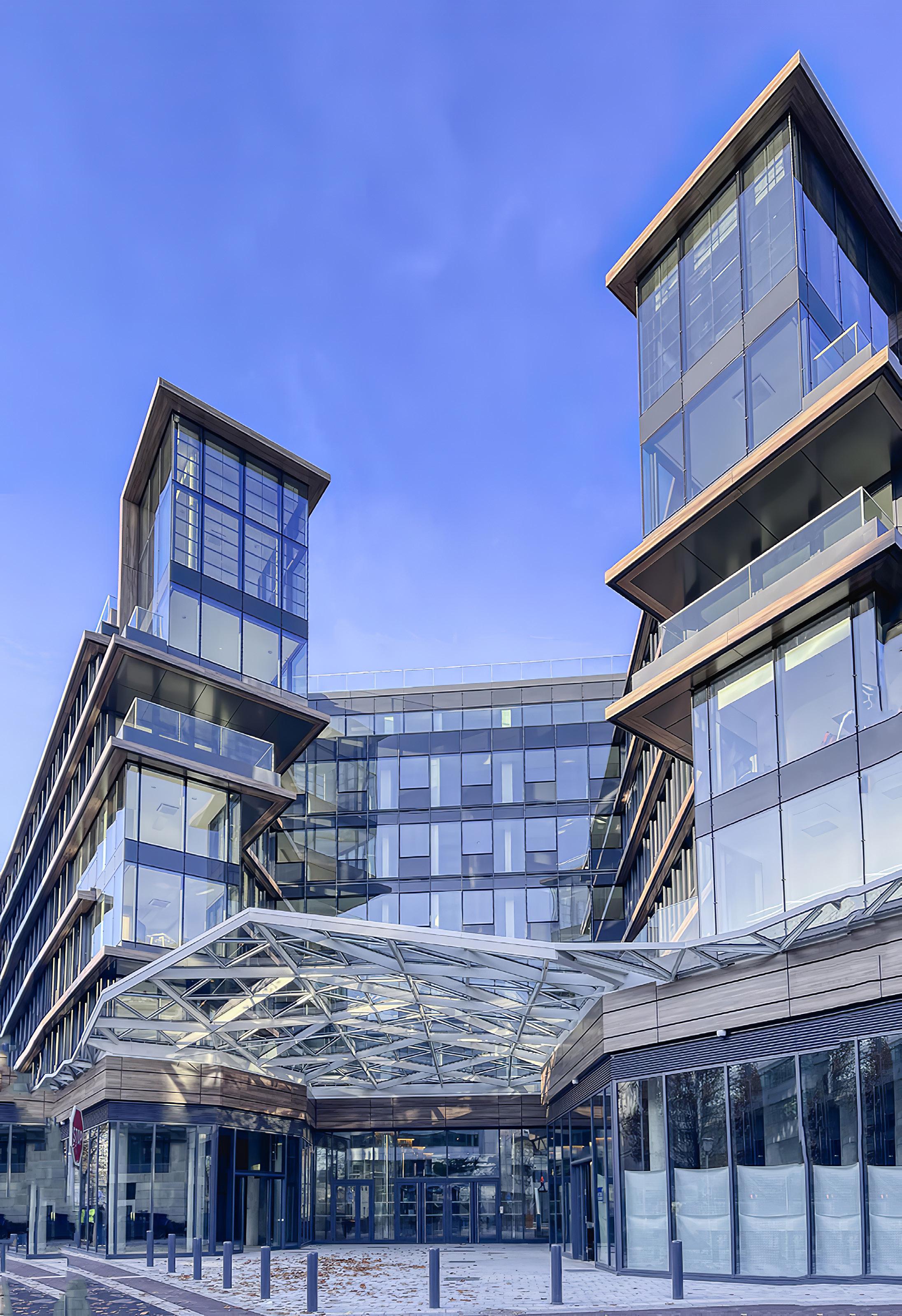
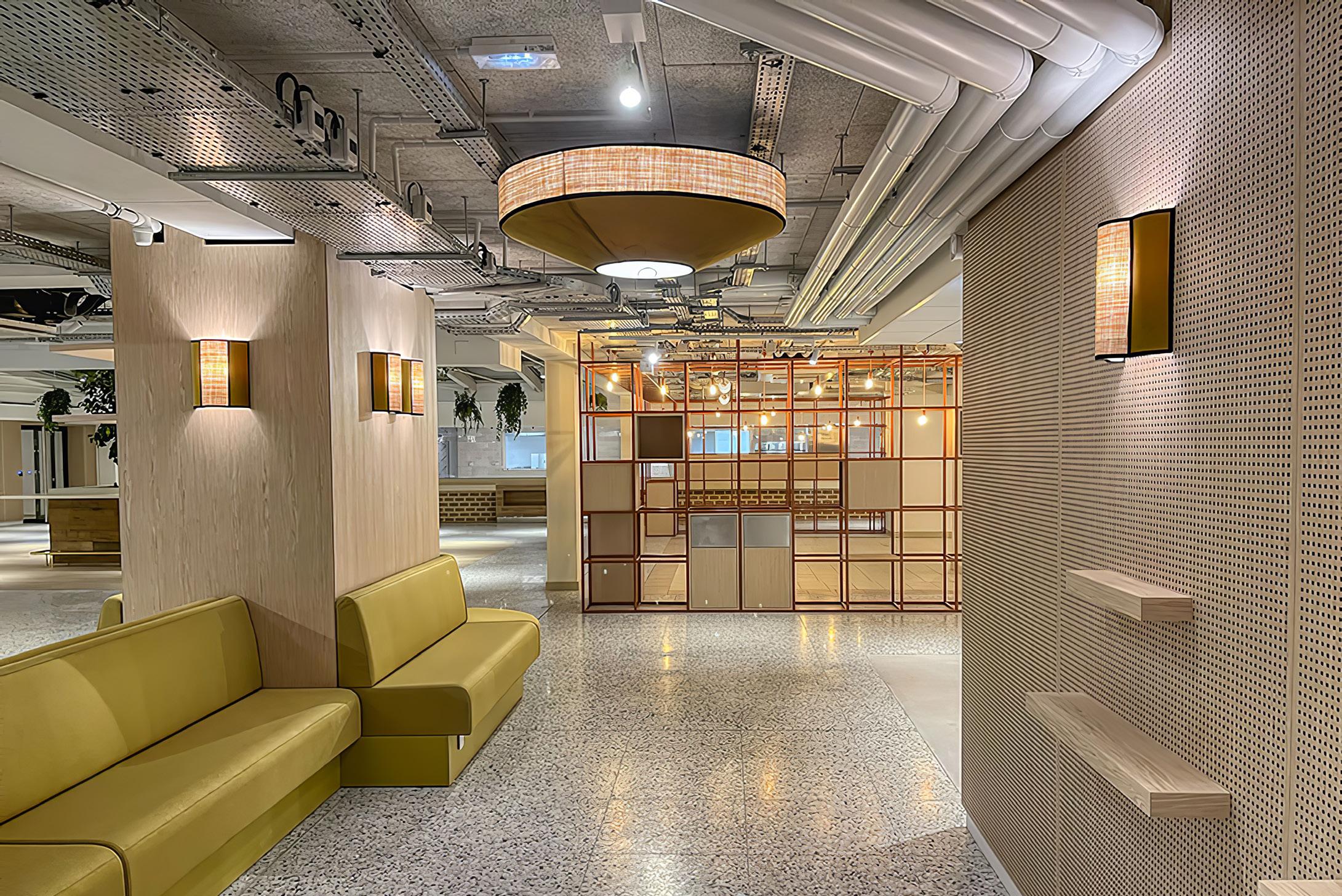


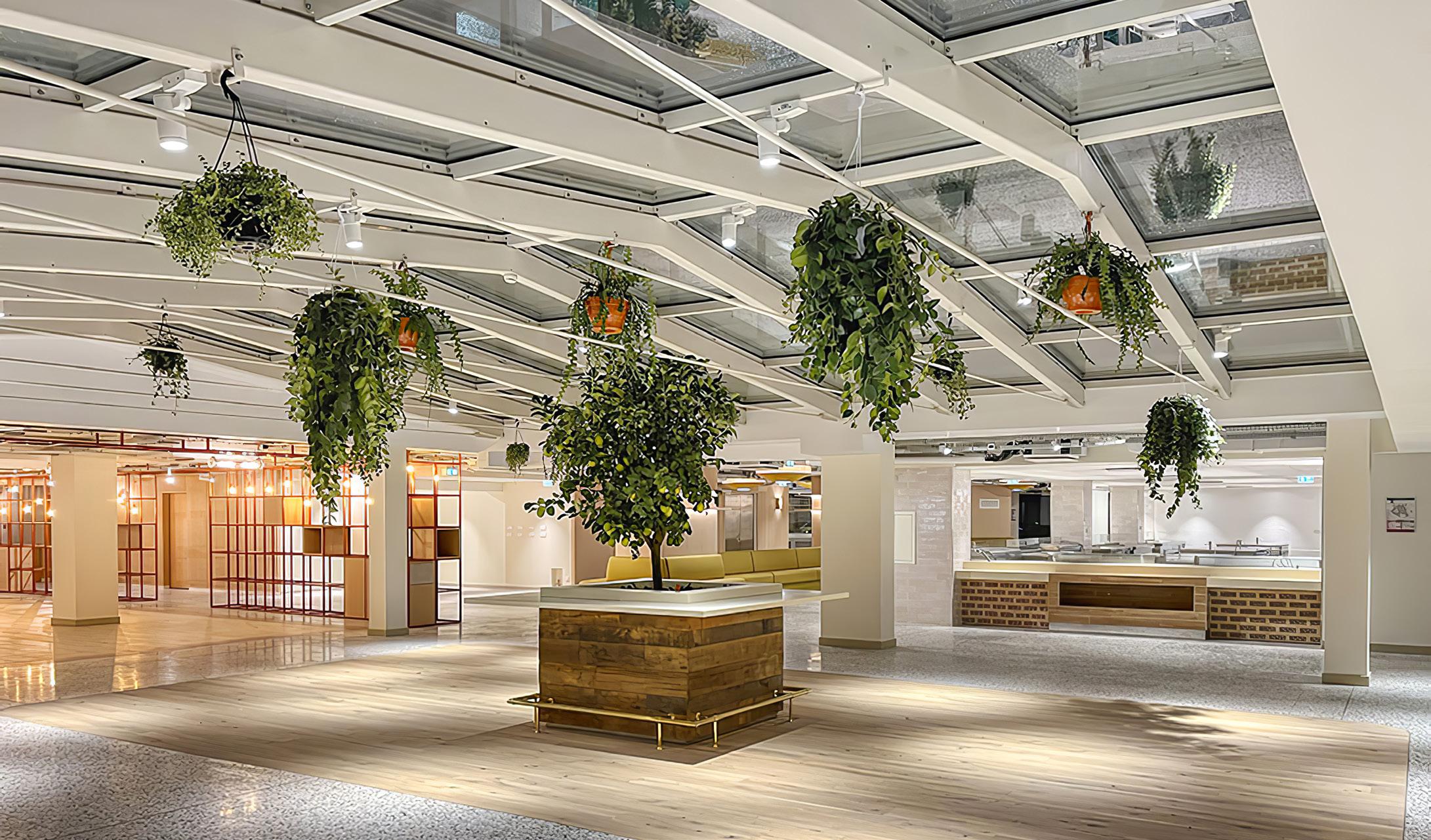
« Un pôle attractif en harmonie avec la ville existante
»
« An attractive pole in harmony with the existing city »
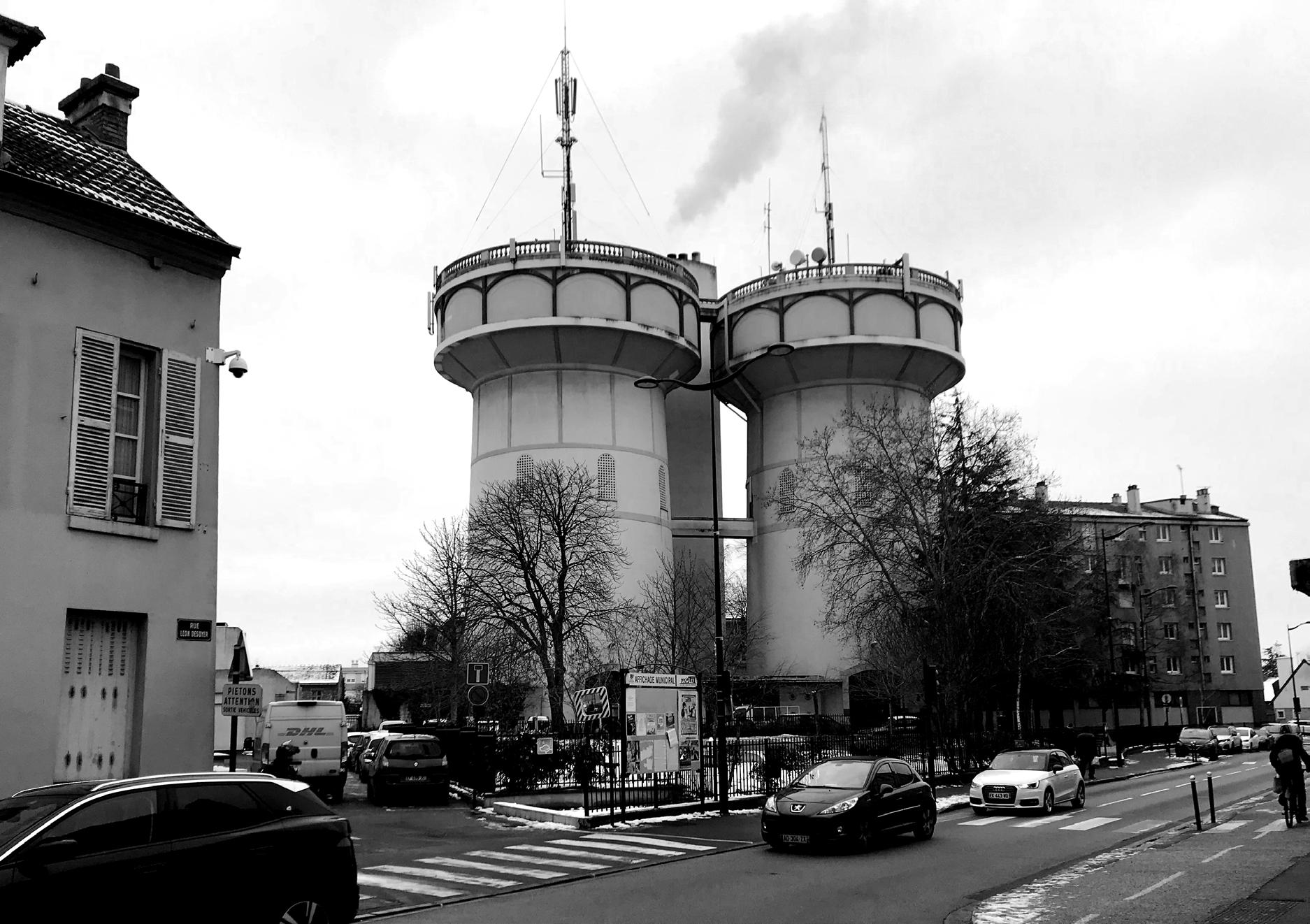
Le projet concerne la reconversion du quartier de l’hôpital de Saint Germain en Laye. Notre réponse est urbaine, architecturale et programmatique. Nous avons travaillé sur la conception d’un nouveau lieu de vie pour toutes les générations de la ville et ses visiteurs internationaux, qui pourront y retrouver “l’esprit Saint-Germain”.
Nous avons pris l’empreinte des rues piétonnes de Saint-Germain, que nous avons transposé sur le quartier pour respecter le tissu, l’échelle, l’ADN de la ville, et révéler son patrimoine. Il en résulte un quartier 100% piéton qui s’organise entre places et placettes, où l’on retrouve le parcours qui existe entre la place du château et la place du marché. Les rues nouvellement créées favorisent les boucles et les rencontres au travers d’une nature en ville désormais très présente qui permet à tous d’y ré-entendre le chant des oiseaux...
The project concerns the reconversion of the district of the Saint-Germain-en-Laye hospital. Our answer is urban, architectural and programmatic. We have worked on the design of a new place of life for all generations of the city and its international visitors, who will find “ the spirit of Saint-Germain”.
We took the footprint of the pedestrian streets of Saint Germain, which we transposed on the neighborhood to respect the fabric, the scale, the DNA of the city, and reveal its heritage. The result is a 100% pedestrian district that is organized between big and little squares, where we find the path that exists between the castle square and the market square. The newly created streets encourage loops and meetings through a nature in the city now very present that allows everyone to hear the song of birds...




Client / Client : Marignan with Ogic, Orpea and Sodes • Lieu / Location : SaintGermain-En-Laye, France • Programme / Program : Logements, commerces, restaurant hôtel, cinéma, pôle santé, crèche, conciergerie, espace culturel / Housing, shops, restaurant hotel, cinema, health center, crèche, concierge, cultural area • Architectes / Architects : Bechu & Associés • Architecte associé / In association with : Atelier Herbez Architectes • Superficie / Surface Area : 53 865 m² • Statut / Status : Lauréat 2018 - Obtention PC Mars 2022 / Winning project 2018 - Building permit march 2022

Developpement durable / Sustainable developpment : NF Habitat HQE très performant, OSMOZ, BREEAM very good, E+C-, HQE Batiment durable niveau excellent / NF Habitat HQE very efficient, OSMOZ, BREEAM very good, E + C-, HQE Sustainable building excellent level
Un projet « couture » entre la ville d’hier et la ville de demain, entre l’histoire passée et celle à venir, la mémoire du lieu comme lien. A « couture » project between the city of yesterday and the city of tomorrow, between past history and that to come, the memory of the place as a link.
Intervenir sur une architecture existante est un acte qui invite toujours à une grande responsabilité. D’autant plus quand il incombe de s’inscrire dans la lignée d’un grand couteau de l’architecture française de la fin du 19ème siècle qu’était Juste Lisch, et quand il s’agit d’une école.
Ainsi, au-delà de l’attention particulière à porter sur la restauration et la revalorisation d’un patrimoine d’exception que l’on verra sans doute un jour protégé au titre des Monuments Historiques, il est également essentiel de réfléchir à la façon de lui faire traverser le temps en préservant sa mission d’intérêt général première.
Pour rouvrir le bâtiment à son quartier, et y faciliter l’intégration d’un projet mixte et vivant, notre première intention a été d’habiller et d’intégrer l’extension intérieure en béton qui avait été placée au centre et «asphyxiait» l’ensemble. Nous y avons accroché une jupeverrière pour recréer de l’espace et organiser différentes typologies de lieux de travail et rencontre au bénéfice des bureaux. Un tel geste résolument contemporain, démontre par ailleurs symboliquement que Paris reste aussi le lieu où l’architecture peut s’affirmer comme un grand couturier.
Logements et crèche viennent se glisser humblement dans les volumes existants de la cour arrière, respectueusement restaurés et surélevés pour assurer leur mise en valeur. Le 39 Trudaine désormais ainsi transformé redevient un cœur battant pour son quartier. Il conserve sa vocation de lieu d’échanges, d’éducation et de transmission de la connaissance, et rend hommage à la célèbre formule de Malraux : « la tradition de naît pas de l’imitation mais de la confrontation ».
Intervening on an existing architecture is an act that always invites great responsibility. All the more so when it is incumbent on us to follow in the footsteps of a great knife of French architecture from the end of the 19th century that was Juste Lisch, and when it comes to a school.
Thus, beyond the particular attention to be paid to the restoration and upgrading of an exceptional heritage that we will undoubtedly see one day protected as Historic Monuments, it is also essential to reflect on the way to carry it through time while preserving its primary mission of general interest.
To reopen the building to its neighborhood, and facilitate the integration of a mixed and lively project, our first intention was to dress and integrate the interior concrete extension which had been placed in the center and “asphyxiated” all. We hung a skirt-canopy on it to recreate space and organize different types of workplaces and meetings for the benefit of the offices. Such a resolutely contemporary gesture also symbolically demonstrates that Paris also remains the place where architecture can assert itself as a great couturier.
Housing and a crèche humbly slip into the existing volumes of the backyard, respectfully restored and raised to ensure their enhancement.
39 Trudaine, now transformed in this way, once again becomes a beating heart for its neighborhood. It retains its vocation as a place of exchange, education and transmission of knowledge, and pays homage to the famous phrase of Malraux: «the tradition of is not born of imitation but of confrontation ».


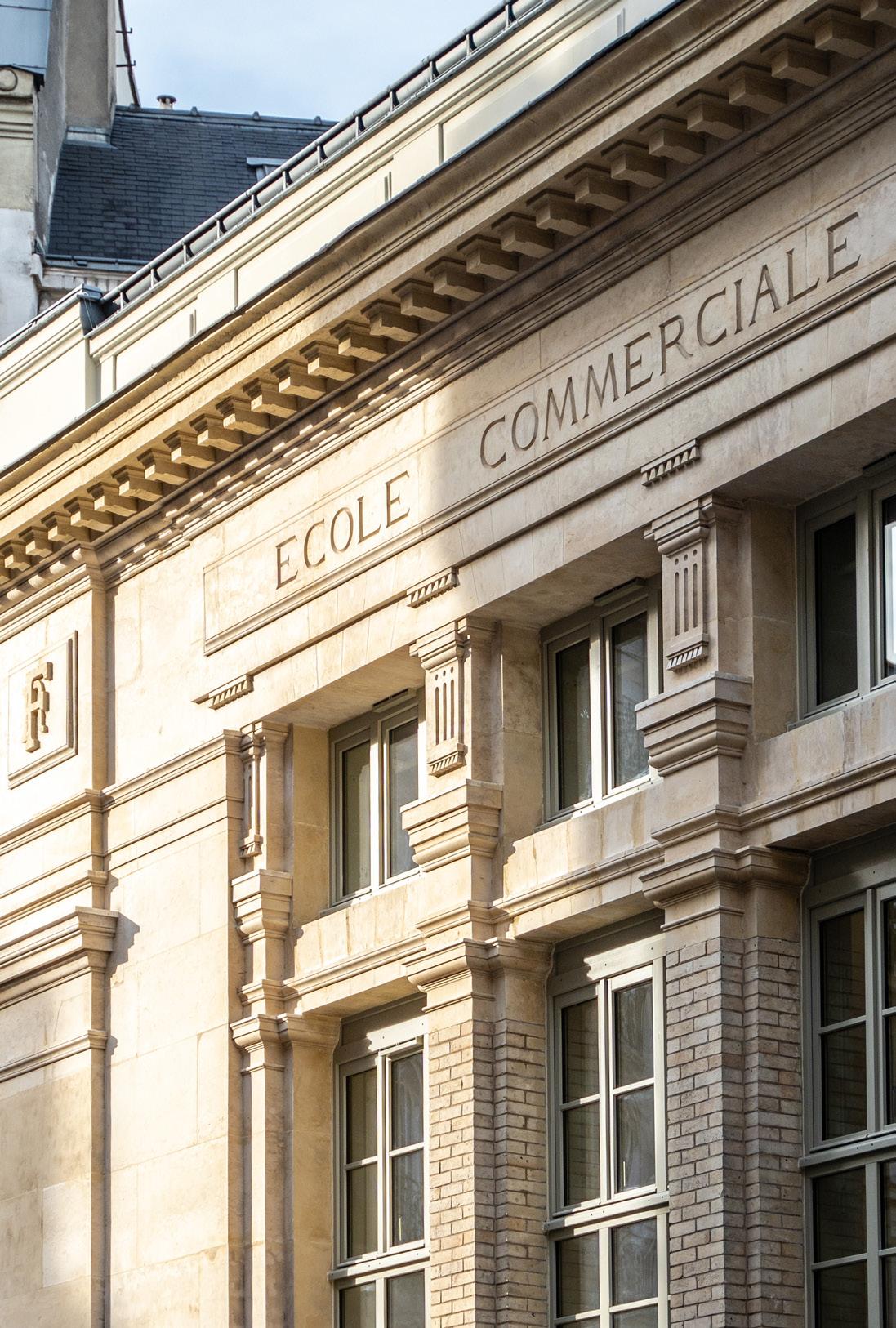

Client / Client : SCCV Paris Trudaine • Lieu / Location : Paris, France • Programme/ Program : Réhabilitation d’un îlot patrimonial en bureaux, logements sociaux et crèche / Rehabilitation of a heritage block in a program of offices, social rental housing and a nursery • Architectes / Architects : Bechu & Associés • Architecte associé / In association with : DVVD (mandataire)• Superficie / Surface Area : 9 200 m² • Montant des travaux / Cost of work : 27 millions d’euros • Statut / Status : Livré 2022 / Delivered 2022

Developpement durable / Sustainable developpment: Certifications visées HQE BREEAM et WIREDSCORE (bureaux), NF Habitat HQE (logements) / Targeted certifications HQE BREEAM and WIREDSCORE (offices), NF Habitat HQE (housing)
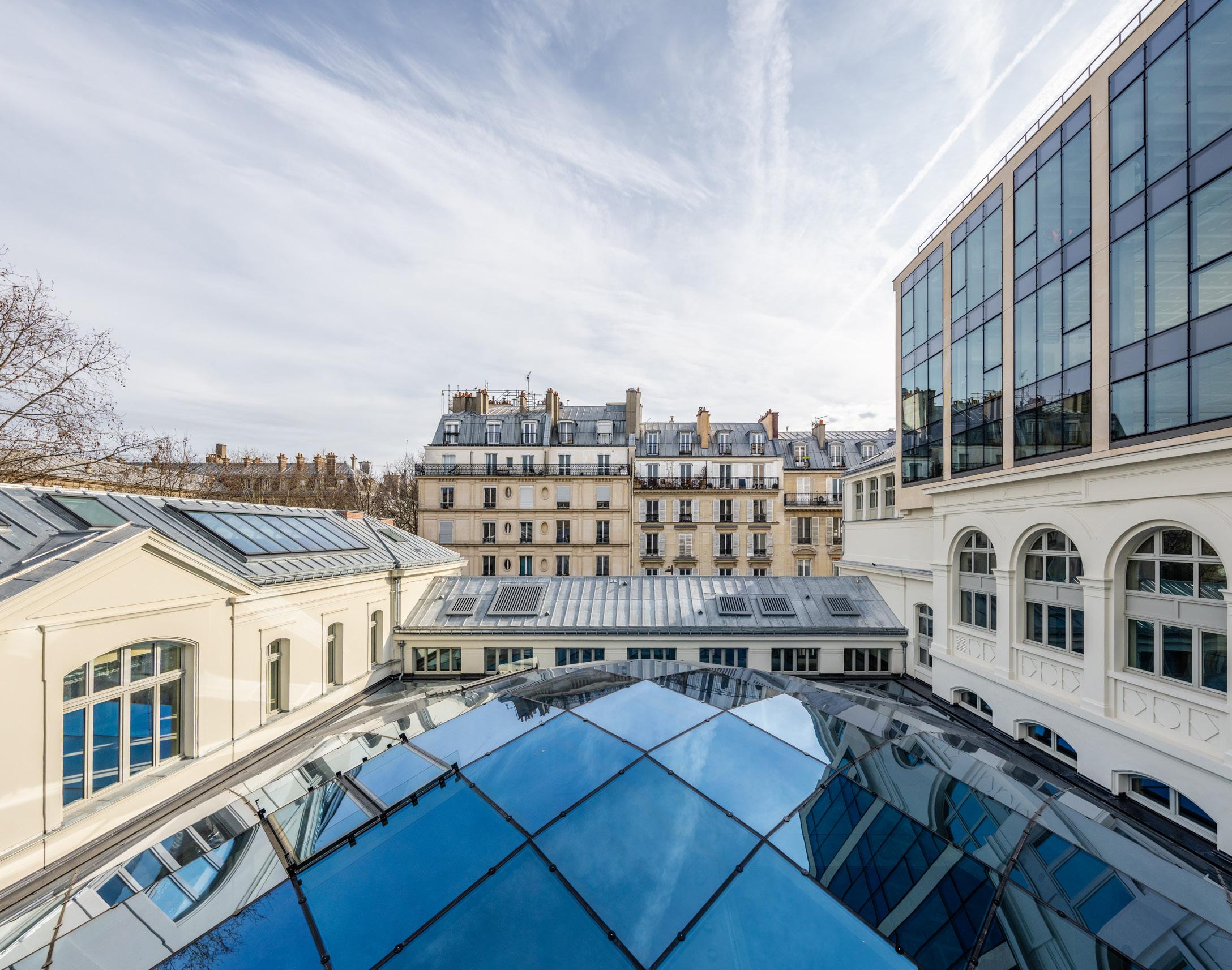
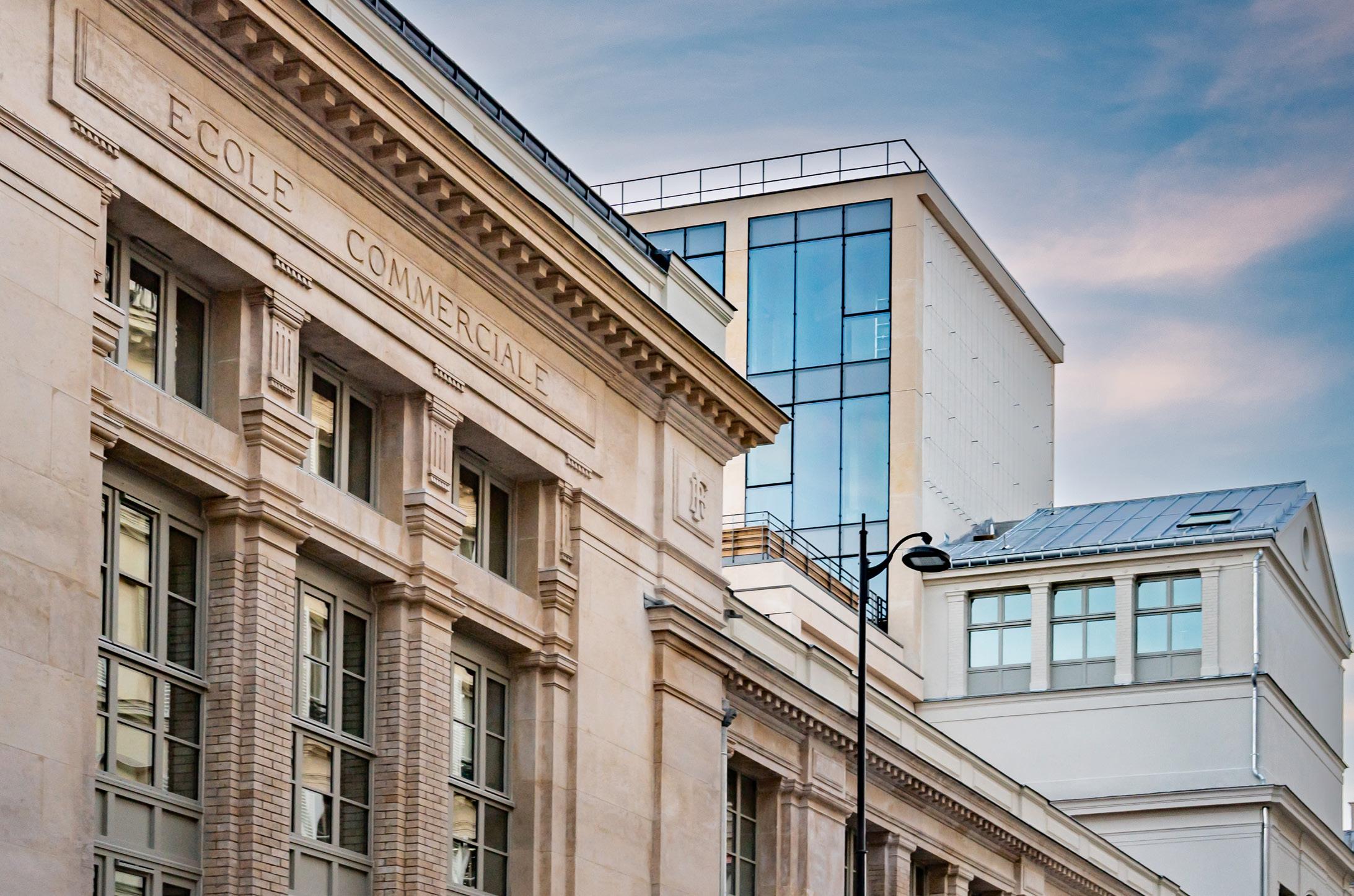









« La lumière et la couleur, source de vie et de connaissance »
« Light and colour, source of life and knowledge »
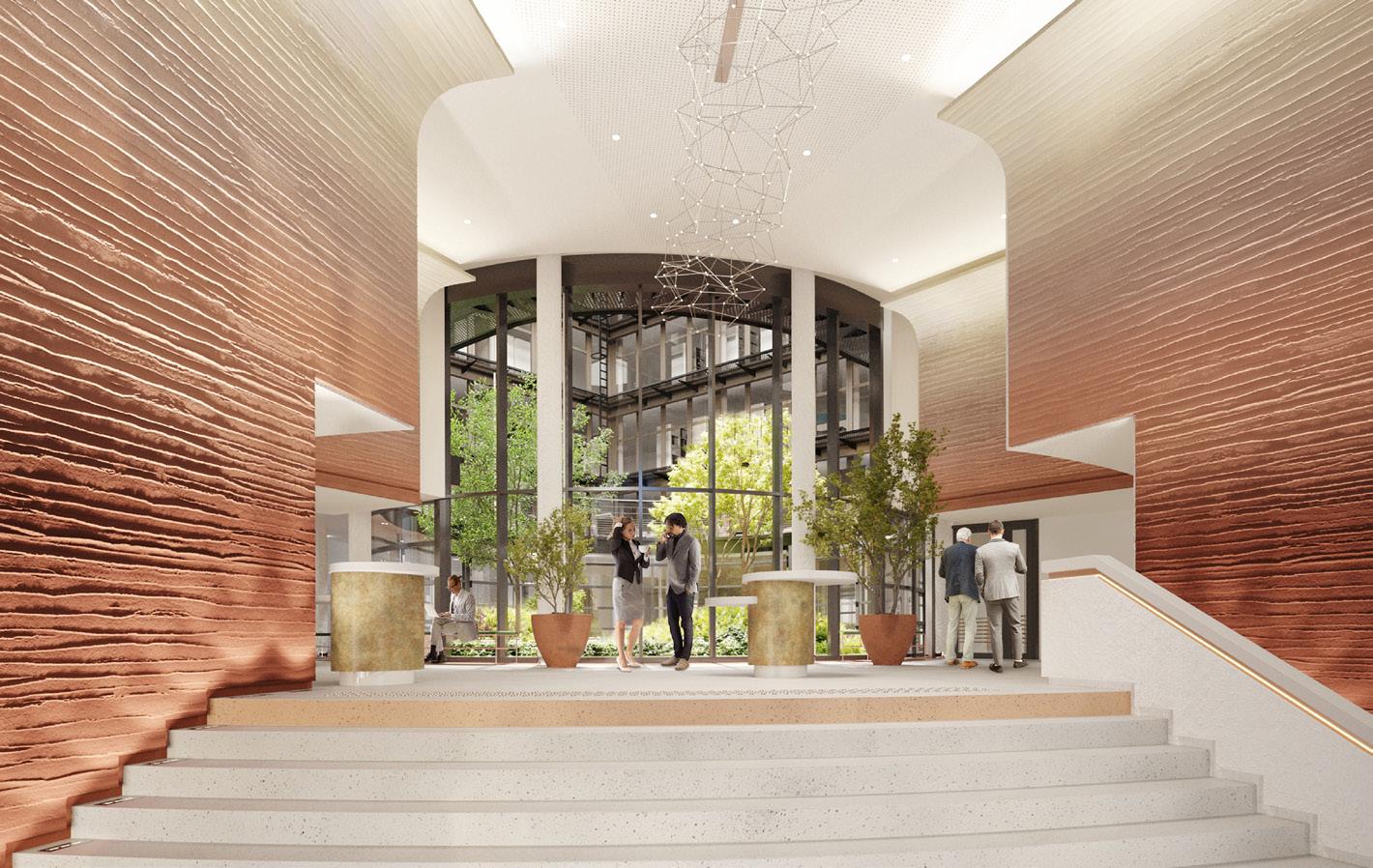
La renaissance de l’immeuble Equilis aspire à créer un refuge urbain exceptionnel, une oasis de partage et d’échange au cœur de la ville. Guidés par le concept architectural, l’objectif est d’intégrer la nature au bâtiment, érigeant ainsi l’immeuble en catalyseur de vie pour le quartier. Le projet débute dès la rue, captant la lumière naturelle et créant un lien visuel avec la nature au cœur du bâtiment.
La démarche architecturale joue avec des jeux de reflets pour infuser la nature et la lumière dans le bâti, tissant un parcours de vie favorisant le bien-être et la vitalité. Les espaces vivants et interactifs s’articulent le long d’un cheminement soigneusement conçu, apportant sobriété et équilibre à l’expérience. L’écriture architecturale d’Equilis se veut dynamqiue, en prise avec son environnement immédiat.
L’utilisation de matériaux naturels tels que le bois, le terrazzo et le grès cérame contribue à une ambiance sereine et sophistiquée. La rénovation se veut être vertueuse et priviligie le réemploi des matériaux, jusqu’à 40% notamment pour réaliser le terrazzo. Sur les paliers, l’acoustistique est gérée par un sol tissé, biosourcé et écoresponsable, traité avec un arrondi pour adoucir les espaces.
The renaissance of the Equilis building aims to create an exceptional urban refuge, an oasis for sharing and exchange in the heart of the city. Guided by the architectural concept, the aim is to integrate nature into the building, making the building a catalyst for life in the neighbourhood. The project begins at the street level, capturing natural light and creating a visual link with nature at the heart of the building.
The architectural approach plays with the play of reflections to infuse nature and light into the building, weaving a living environment that promotes well-being and vitality. The lively, interactive spaces are arranged along a carefully designed path, bringing sobriety and balance to the experience. The architectural style of Equilis is designed to be dynamic and in tune with its immediate environment.
The use of natural materials such as wood, terrazzo and porcelain stoneware contributes to a serene and sophisticated atmosphere. The renovation is intended to be a virtuous circle, giving priority to the re-use of materials, up to 40% in particular for the terrazzo. On the landings, acoustics are managed by a woven, bio-sourced and eco-responsible floor, treated with a rounded shape to soften the spaces.
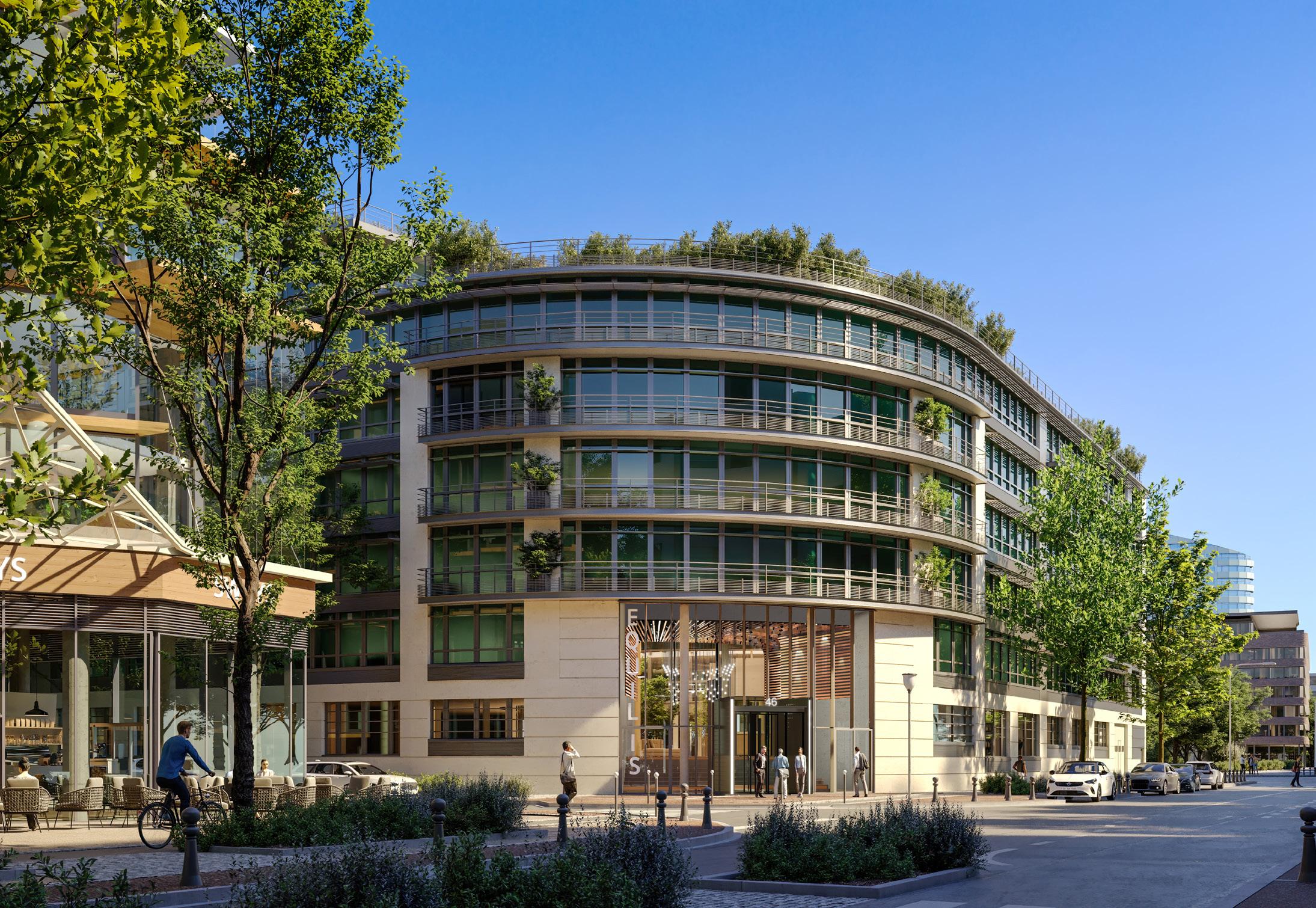
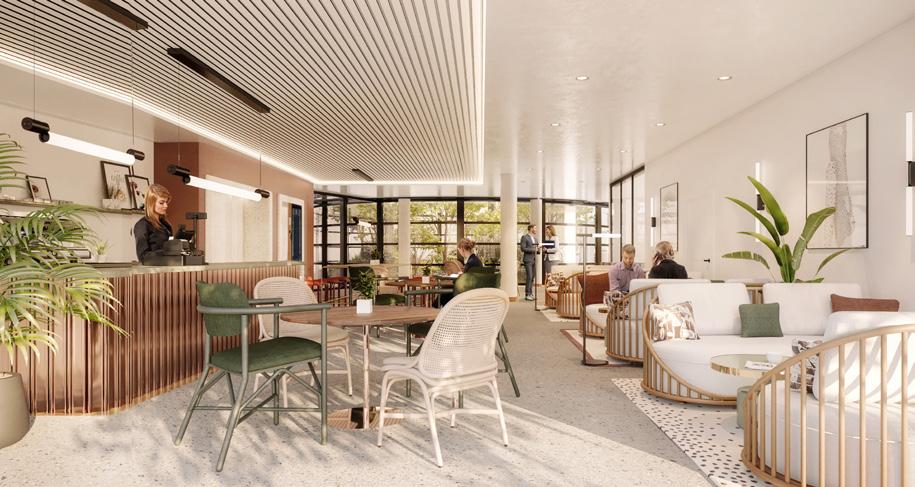
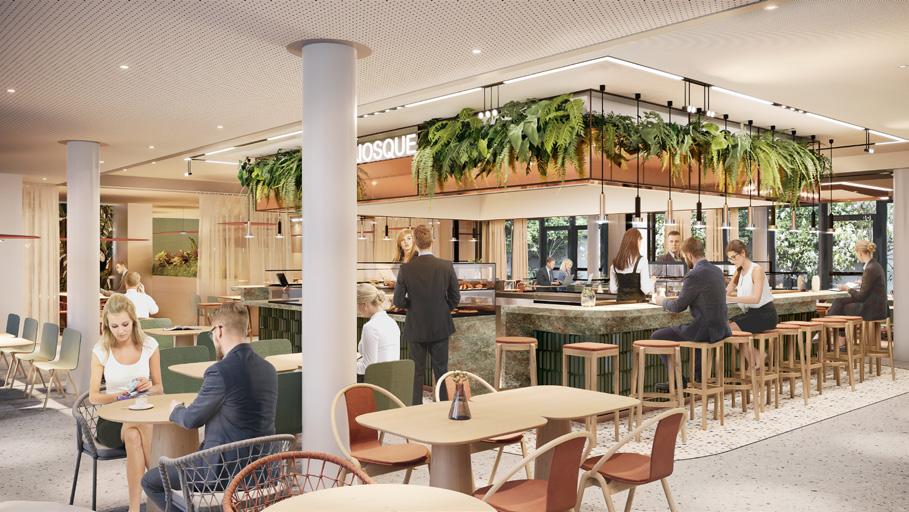
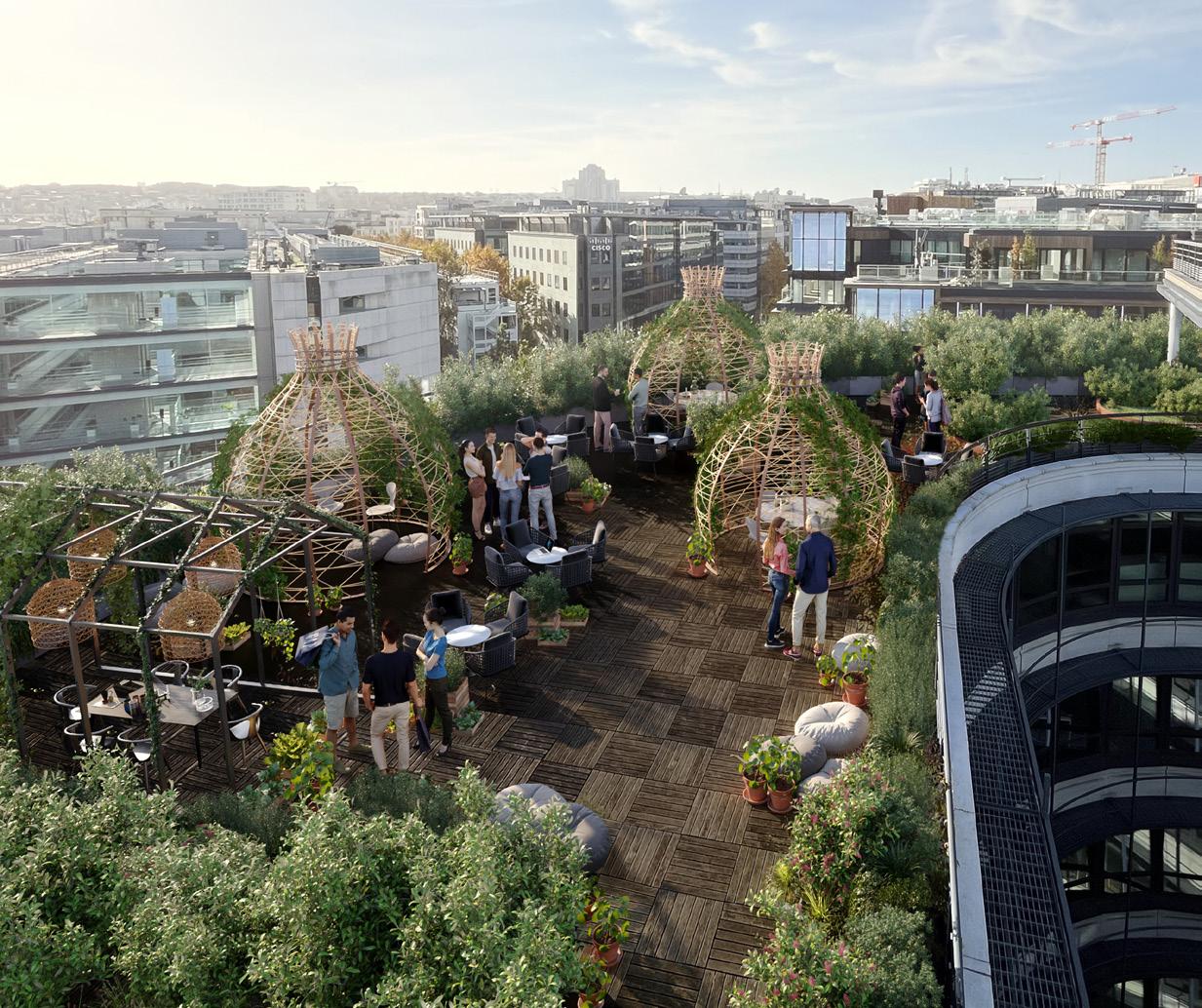
Client / Client : Allianz • Lieu / Location : 43 avenue Camille Desmoulins, Paris, France • Programme / Program : Réhabilitation d’un immeuble de bureaux / Refurbishment of an office building • Architectes / Architects : Agence d’architecture Béchu & Associés • Architecture d’intérieur / Interior architecture : Volume ABC • Superficie / Surface Area : 16 500 m2 • Statut / Status : En cours / In process

Développement durable / Sustainable developpment : BREEAM international niveau Excellent, Labels «Ready to OsmoZ», «BBCA rénovations», «WiredScore V3» niveau gold, «SmartScore» / BREEAM international level Excellent, Label « Ready to OsmoZ», «BBCA rénovations», «WiredScore V3» niveau gold, «SmartScore»
1 - Salle de repoS
2 - local SMart
3 - eSpace d’écHangeS
4 - patio central
5 - eSpace lounge
6 - Food Bar
7 - KioSque
8 - terraSSeS-JardinS
9 - Salle polyvalente
10 - creative laB
11 - veStiaireS
12 - clicK and collect

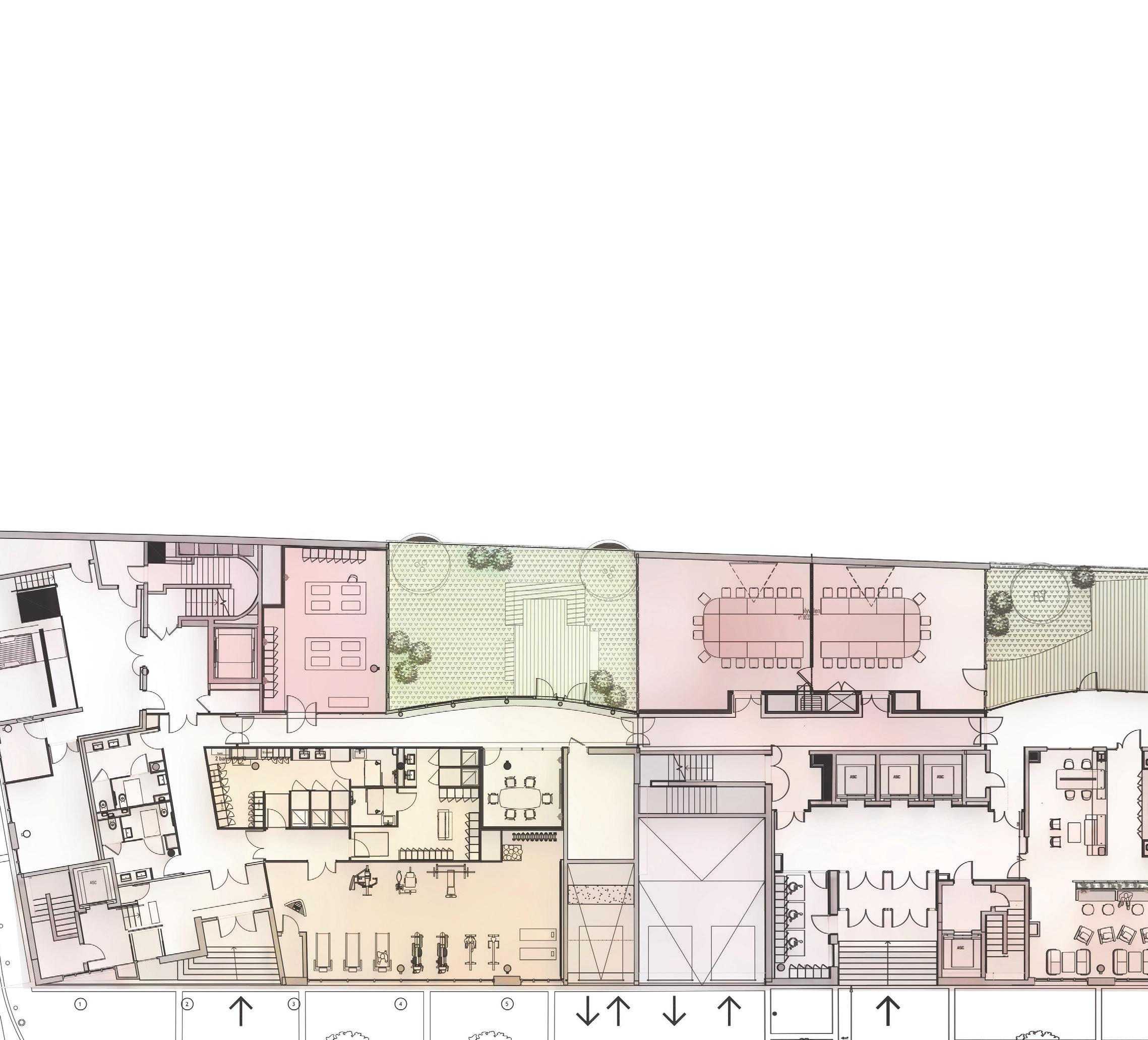
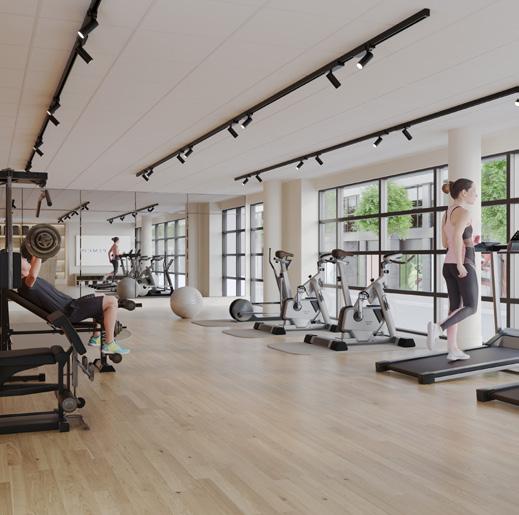
SanitaireS Hall


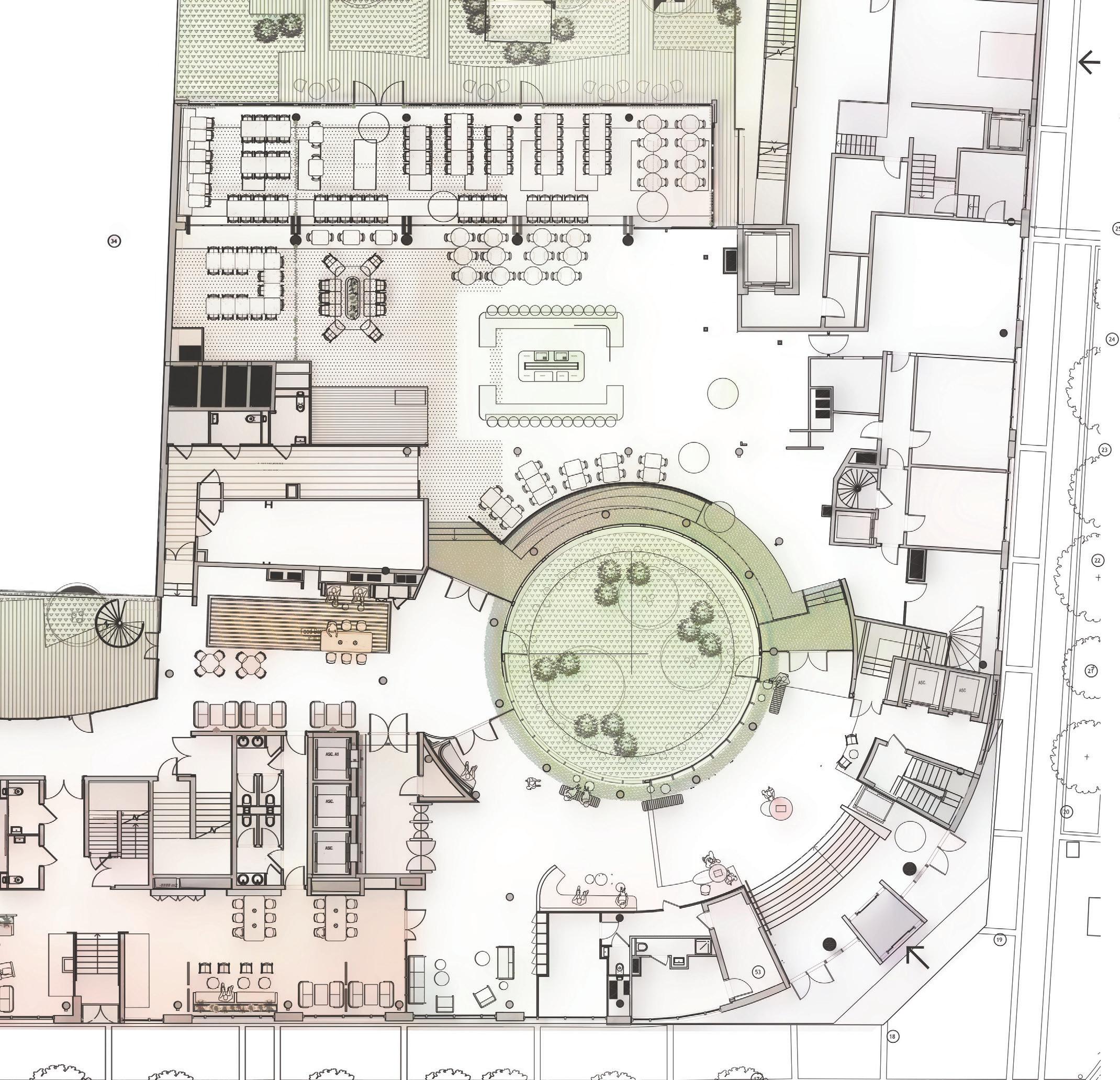



Un projet imgp avec une école des Arts Culinaires pour redynamiser le cœur de ville Témoin de l’Histoire, le Château de l’Amiral, deviendra le cœur d’un campus urbain du 21ème siècle: un laboratoire d’innovation du « Slow Food »
An Invent the Metropolis of Grand Paris project for the Culinary Arts School to revitalize the heart of the city.
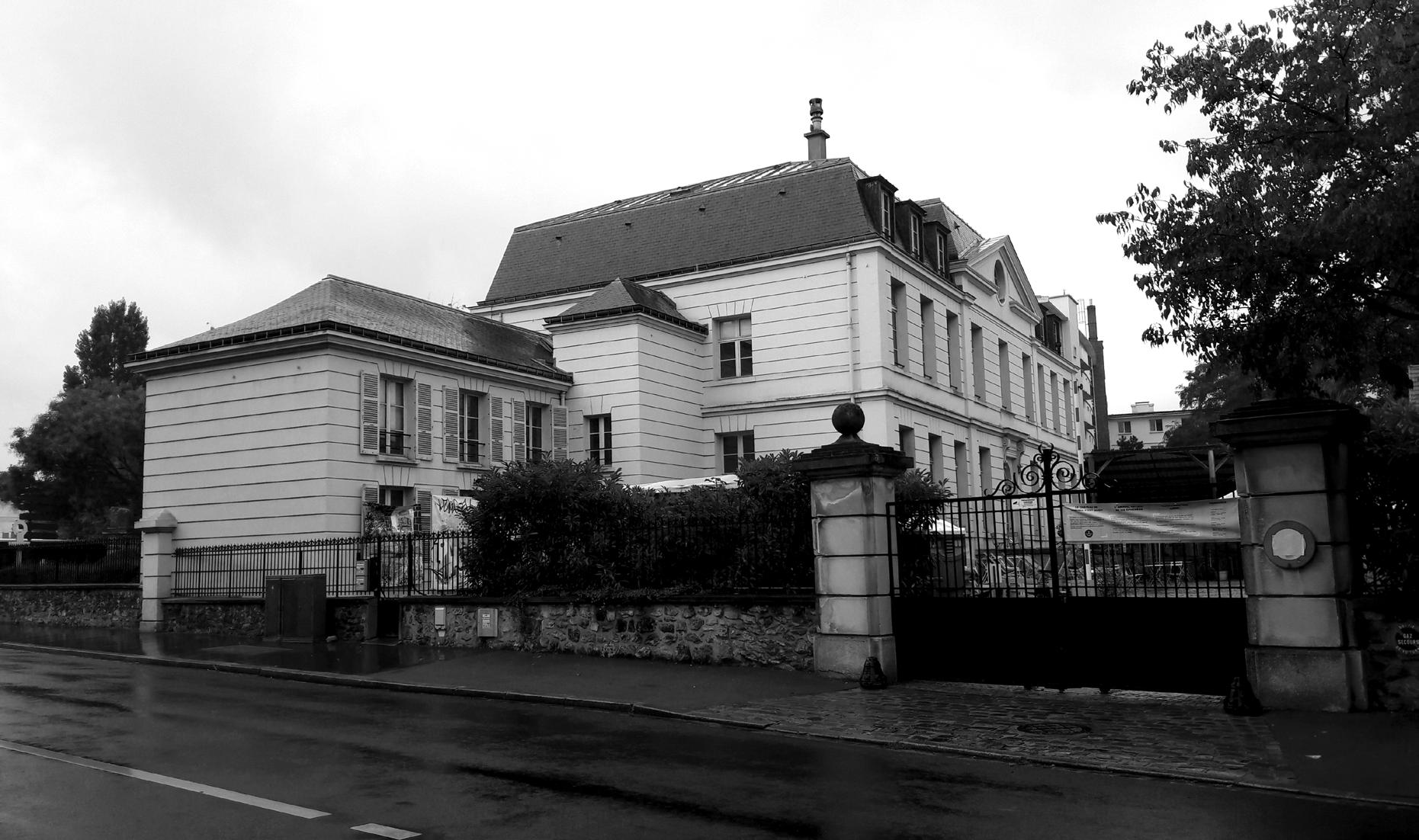
L’ambition portée par le projet SO.good est de mettre en avant les valeurs de la ville de Sceaux et de redynamiser le cœur de ville en intégrant une forte dimension environnementale et paysagère. S’inscrivant dans un schéma directeur d’envergure, l’immeuble de logements dont il est question ici est caché dans la végétation et est conçu comme un arbre habité, pour marquer la fluidité et amorcer le parcours vers un jardin urbain.
Les 4 axes principaux du concept :
• Jardins surélevés
• Une façade végétalisée, nouveau jalon du parcours commerçant en écho à la place nouvellement créée.
• Innover dans les modes d’habiter : vivre dans un paysage tout en ayant une situation géographique clé dans la ville de Sceaux.
• Reconstruire un « poumon vert » au cœur de la ville.
The ambition carried by SO.good project is to highlight the values of the city of Sceaux and to revitalize the heart of the city by integrating a strong environmental and landscape dimension. As part of a large-scale master plan, the housing building in question here is hidden in the vegetation and is designed like an inhabited tree, to mark the fluidity and start the journey towards an urban garden.
The 4 main axes of the concept:
• Elevated gardens
• A green facade - a new milestone on the shopping route echoing the newly created square.
• Innovate in ways of living: living in a landscape while having a key geographic location in the town of Sceaux.
• Reconstruct a “green lung” in the heart of the city.
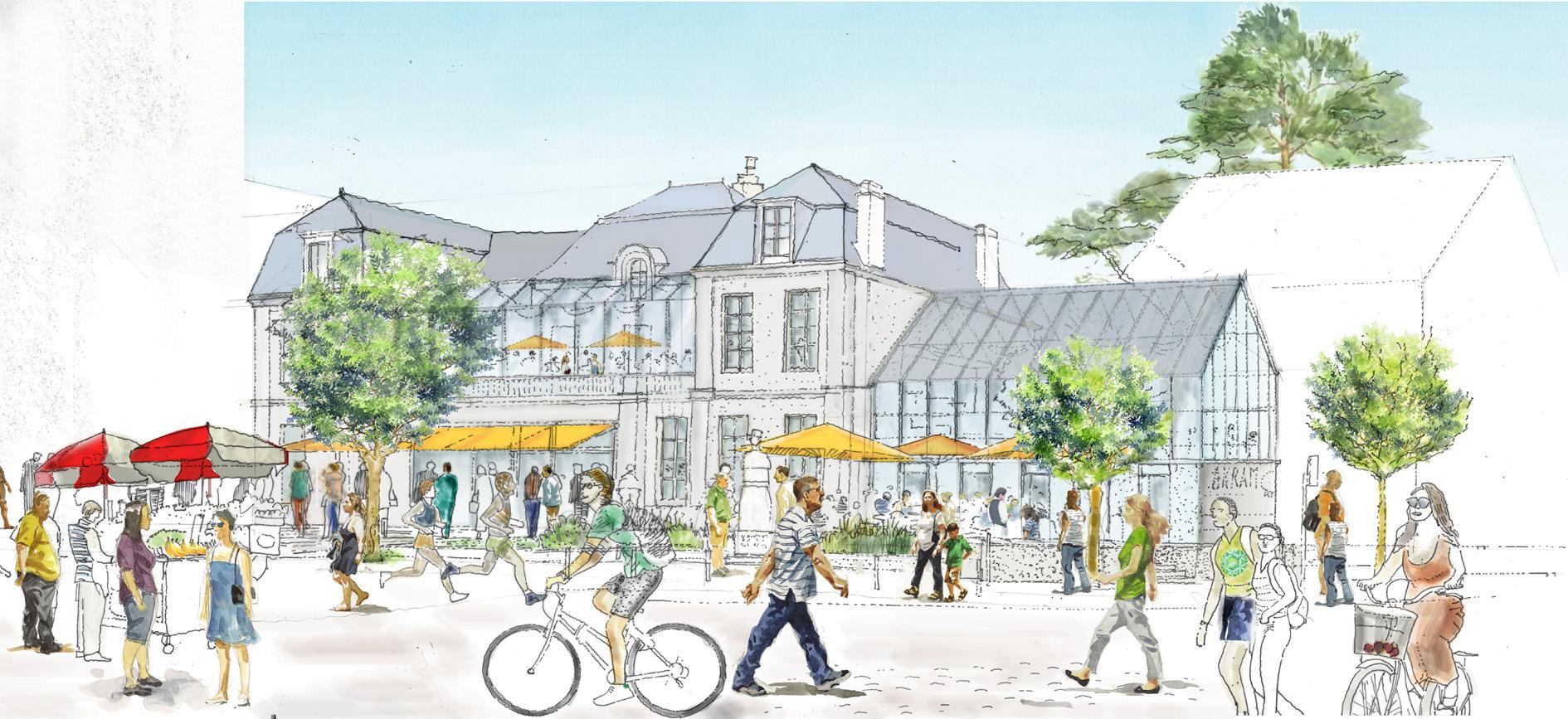

Client / Client : Pitch promotion et Nacarat • Lieu / Location : Sceaux, France • Programme / Program : Ecole des Arts culinaires, Logements et commerces / School of Culinary Arts, Housing and shops • Architectes / Architects : Bechu & Associés • Superficie / Surface Area : Superficie du plan d’urbanisme : 11 000 m² dont logements 800 m² et 250 m² de commerces / Area of the town plan: 11,000 sqm of which dwellings 800 sqm and 250 sqm of shops • Statut / Status : Lauréat 2017 sur 2 lots / Winner 2017 on 2 lots >> Developpement durable / Sustainable developpment : BEPOS, Effinergie+ 2017, biodiverCity / BEPOS, Effinergie+ 2017, biodiverCity
Seconde partie d’un ensemble de 4 opérations d’envergure au coeur de Paris dans le quartier de l’Europe près de la gare Saint-Lazare. Ce bâtiment est certifié « HQE Exceptionnel » et « BREEAM very good », ainsi que de la labellisation « BBC Effinergie-Rénovation »
Second part of a set of 4 large-scale operations in the heart of Paris in the Europe district near the Saint-Lazare station. This building is certified “Exceptional HQE” and “BREEAM very good”, as well as the “BBC Effinergie-Rénovation” label.

Situé à l’angle de la rue de Londres et de la place de Budapest, l’immeuble Intown, acquis par Scor en 2013, a fait l’objet d’une restructuration, menée par notre agence en association avec François Leclerq, et avec l’équipe Réhagreen de Bouygues Immobilier. L’immeuble a été entièrement repensé pour s’ouvrir sur la ville et offrir tous les services et usages nécessaires au confort et à l’efficience de la future entreprise à s’y installer.
La réorganisation de l’immeuble a permis un gain de plus de 3 000 m² de surface utile, et accueillera prochainement le nouveau siège de La Banque de France.
Located at the corner of rue de Londres and place de Budapest, the Intown building, acquired by Scor in 2013, underwent a restructuring, led by our agency in association with François Leclerq, and with the Réhagreen team from Bouygues Immobilier. The building has been completely redesigned to open onto the city and offer all the services and uses necessary for the comfort and efficiency of the future company to settle there.
The reorganization of the building has led to a gain of more than 3,000 m² of floor space, and will soon house the new headquarters of La Banque de France.

Client / Client : SCOR AUBER • Lieu / Location : Paris, France • Programme / Program : Restructuration d’un immeuble de bureaux / Restructuring of an office building • Architectes / Architects : Bechu & Associés • Superficie / Surface Area : 22 110 m² • Statut / Status : Livré en 2016 / Delivered in 2016 >> Developpement durable / Sustainable developpment: HQE Exceptionnel, BREEAM Very Good, BBC Effinergie-Rénovation / HQE Exceptional, BREEAM Very Good, BBC Effinergie-Renovation

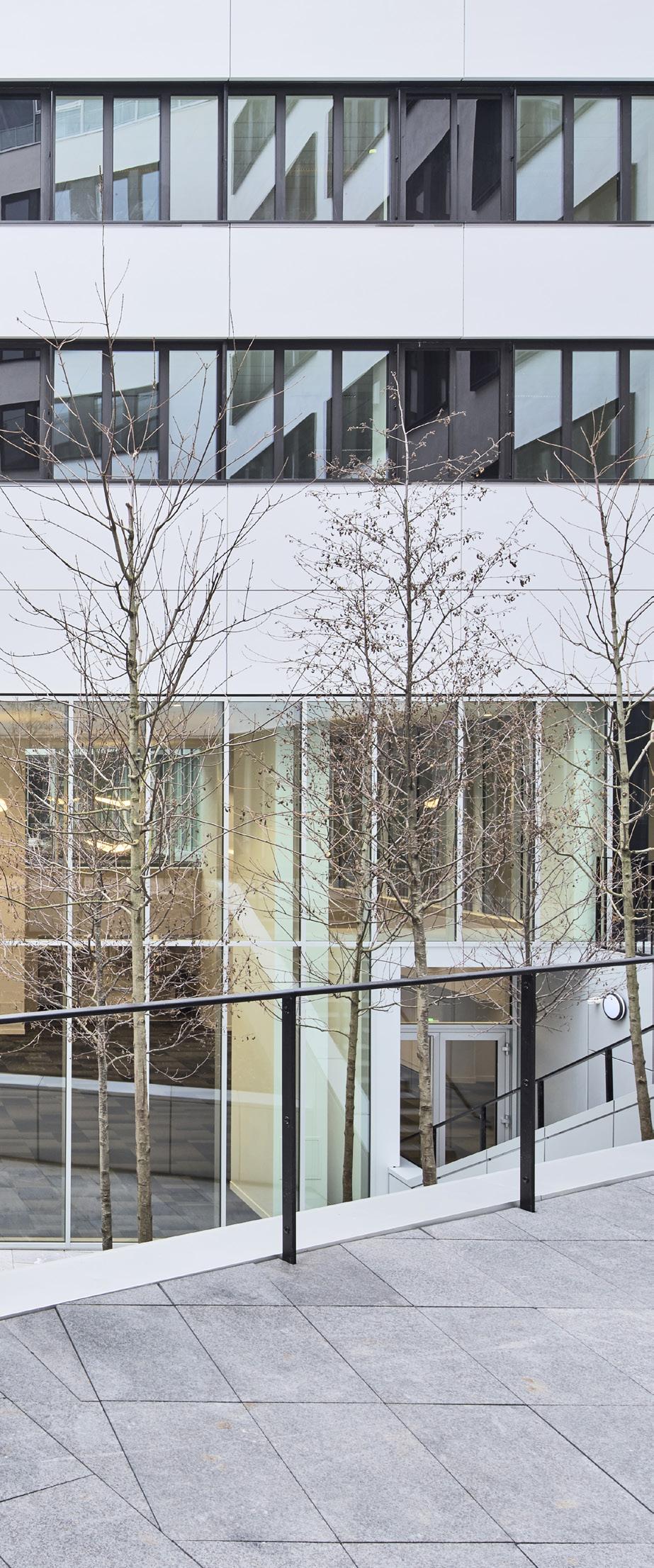
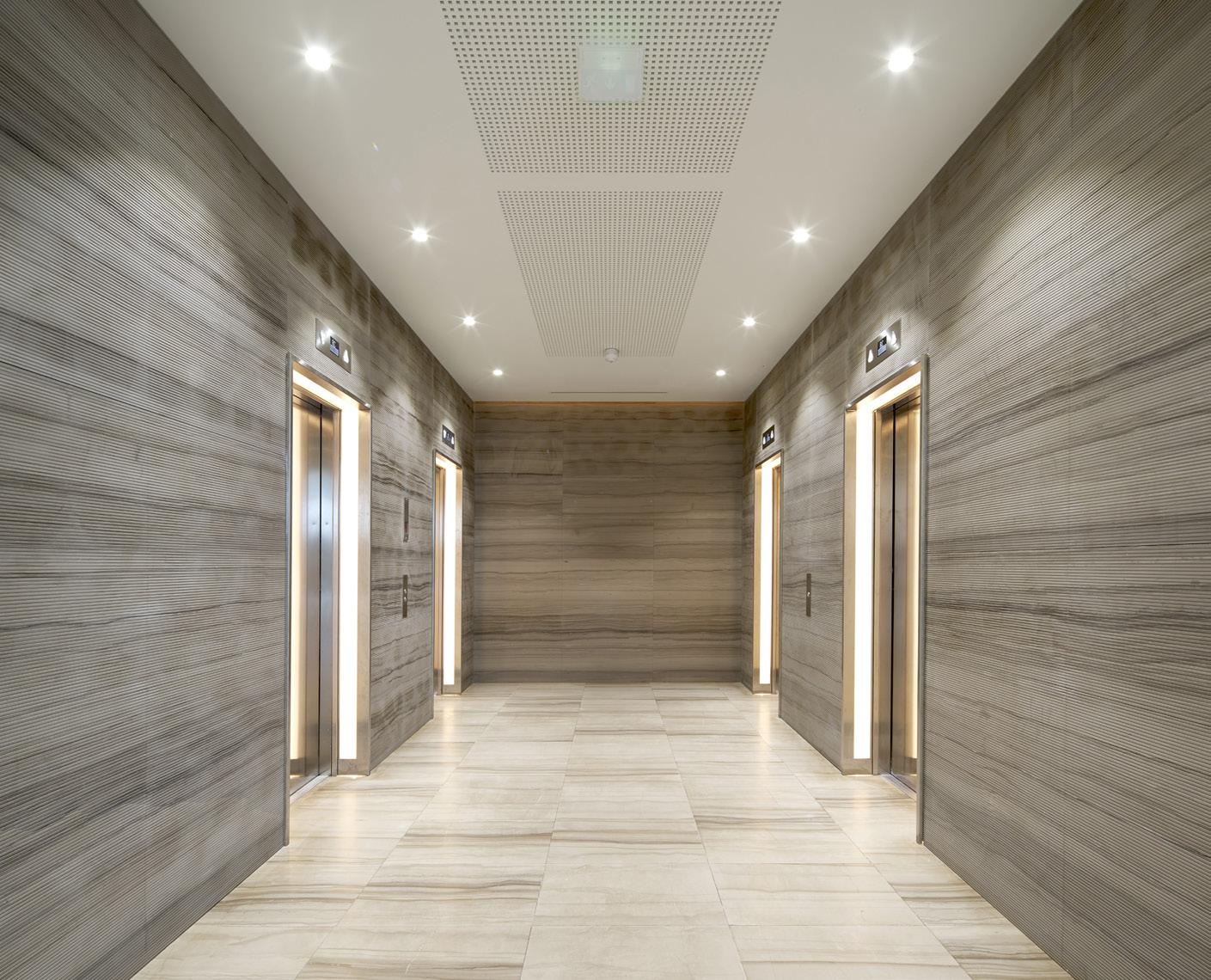

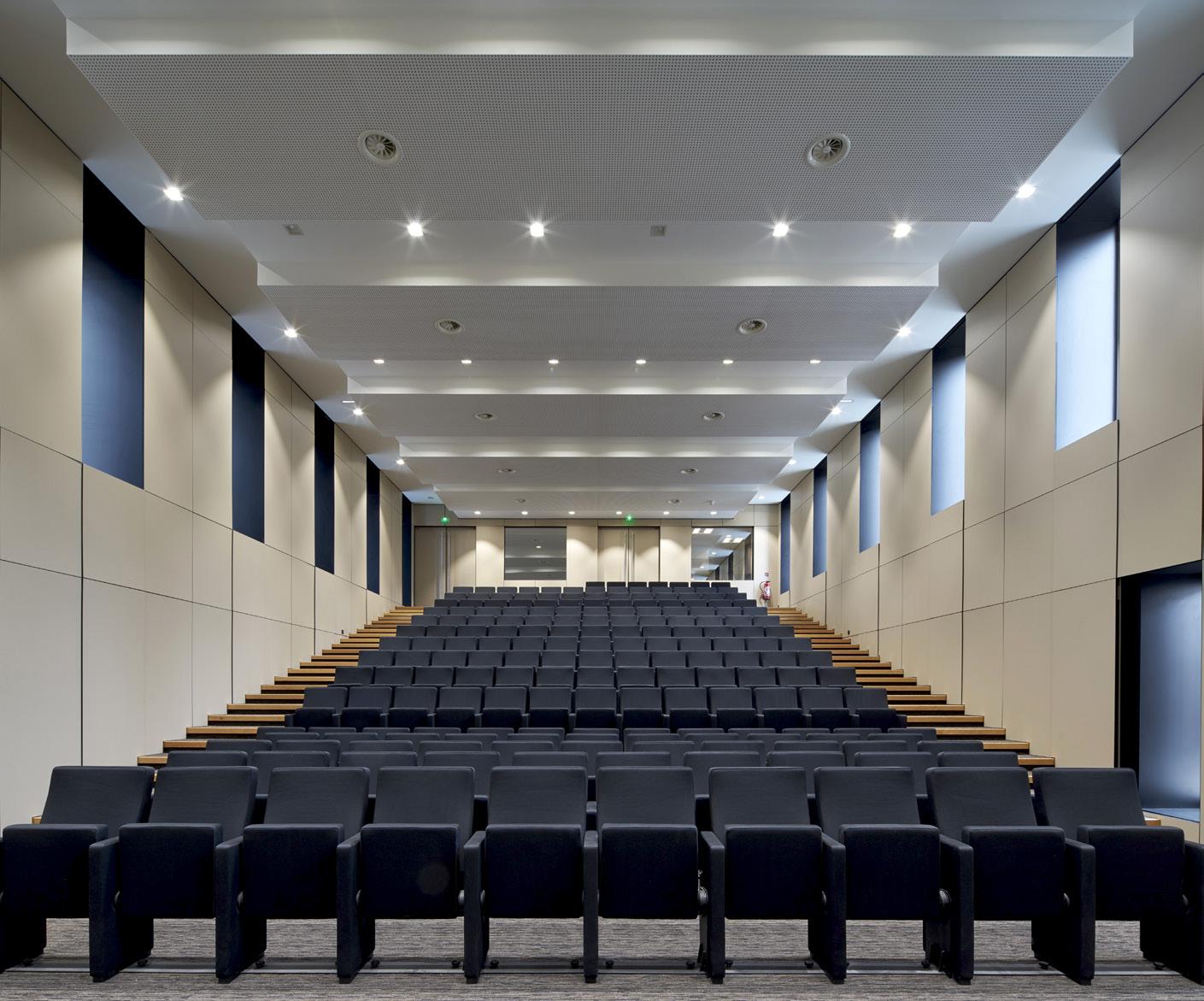
rénovation
The renovation of a historic district

Dans le prolongement de l’axe Nord/Sud de la cité interdite, à l’opposé de la place Tien an Men, la rue Qian Men s’est assoupie durant la période maoïste. Notre projet vise à renouveler la lecture du site à travers un retour de l’art urbain mis au service de la cité et de ses habitants ; il prévoie la restauration de son patrimoine architectural, l’édification de constructions modernes mais respectueuses de l’héritage mandarin.
Créer un centre ville alliant lieux de rencontres, cultures, luxe et animations favorisant l’implantation de shopping center et d’enseignes internationales.
In the extension of the North/South axis of the forbidden city, opposite Tianan Men Square, Qian Men Street fell asleep during the Maoist period. Our project aims to renew the reading of the site through a return to urban art put at the service of the city and its inhabitants; it provides for the restoration of its architectural heritage, the construction of modern buildings that respect the Mandarin heritage.
Create a city center combining meeting places, cultures, luxury and entertainment promoting the establishment of shopping centers and international brands.



Client / Client : Imperial Gates LTD et Tian Jie • Lieu / Location : (Qianmen Street and Dong Ce Lu Street) Beijing, Chine• Programme / Program : Rénovation d'un quartier historique / Renovation of the historical district • Architectes / Architects : Bechu & Associés • Superficie / Surface Area : 36 Ha • Statut / Status : Projet 2005 / Project 2005
Faire renaître l’œuvre d’un grand maître
Reviving the work of a great master
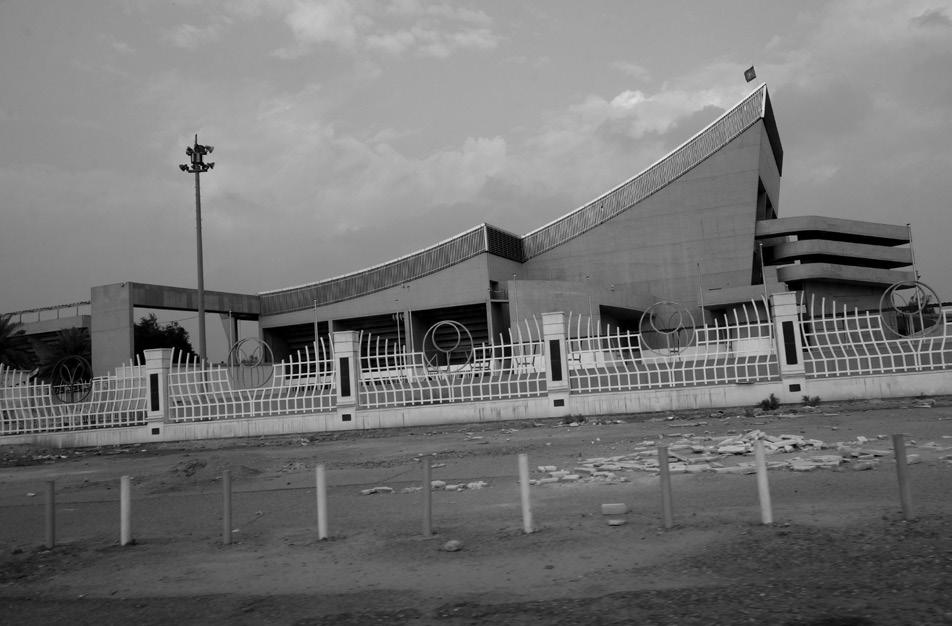

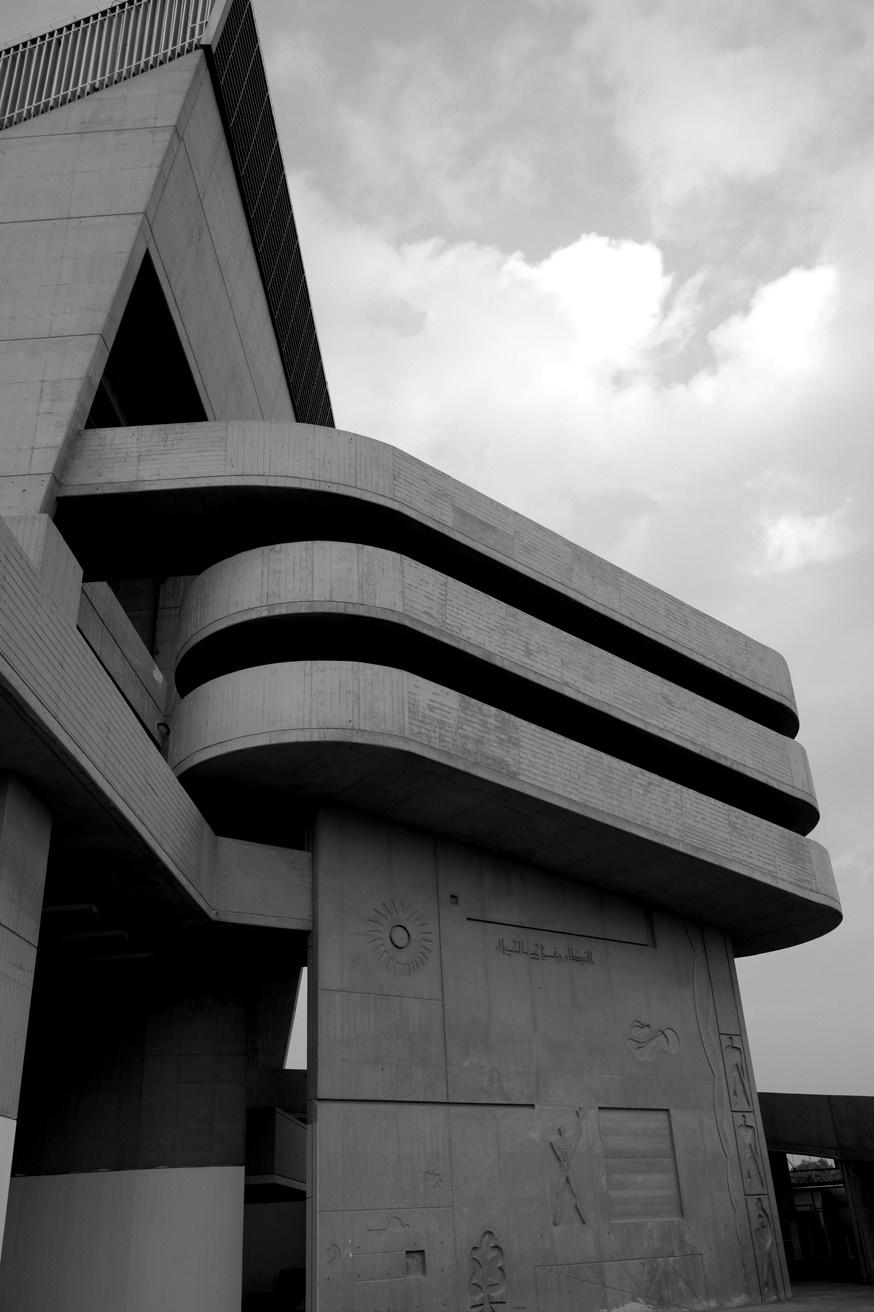
L’agence a été appelée par le Ministère de la Jeunesse et des Sports d’Irak pour restaurer le gymnase dessiné par Le Corbusier et réalisé par des architectes japonais en 1980, afin d’en couvrir les gradins extérieurs et d’y ajouter un programme multifonctions : bureaux, séminaires, terrains de sports couverts, pour un ensemble capable d’accueillir 5 000 personnes.
La géométrie guidée par le nombre d’or et par les tracés retrouvés permet de respecter l’œuvre de Le Corbusier.
The Iraqi Ministry of Youth and Sports asked our agency to restore the gymnasium designed by Le Corbusier and built by Japanese architects in 1980. The project includes the outdoor stands and incorporates a multi-purpose programme of offices, meeting rooms, and covered sports pitches as part of a complex capable of accommodating up to 5,000 people.
The geometry of the building, guided by the Golden Ratio and rediscovered plans, allows the work of Le Corbusier to be respected.
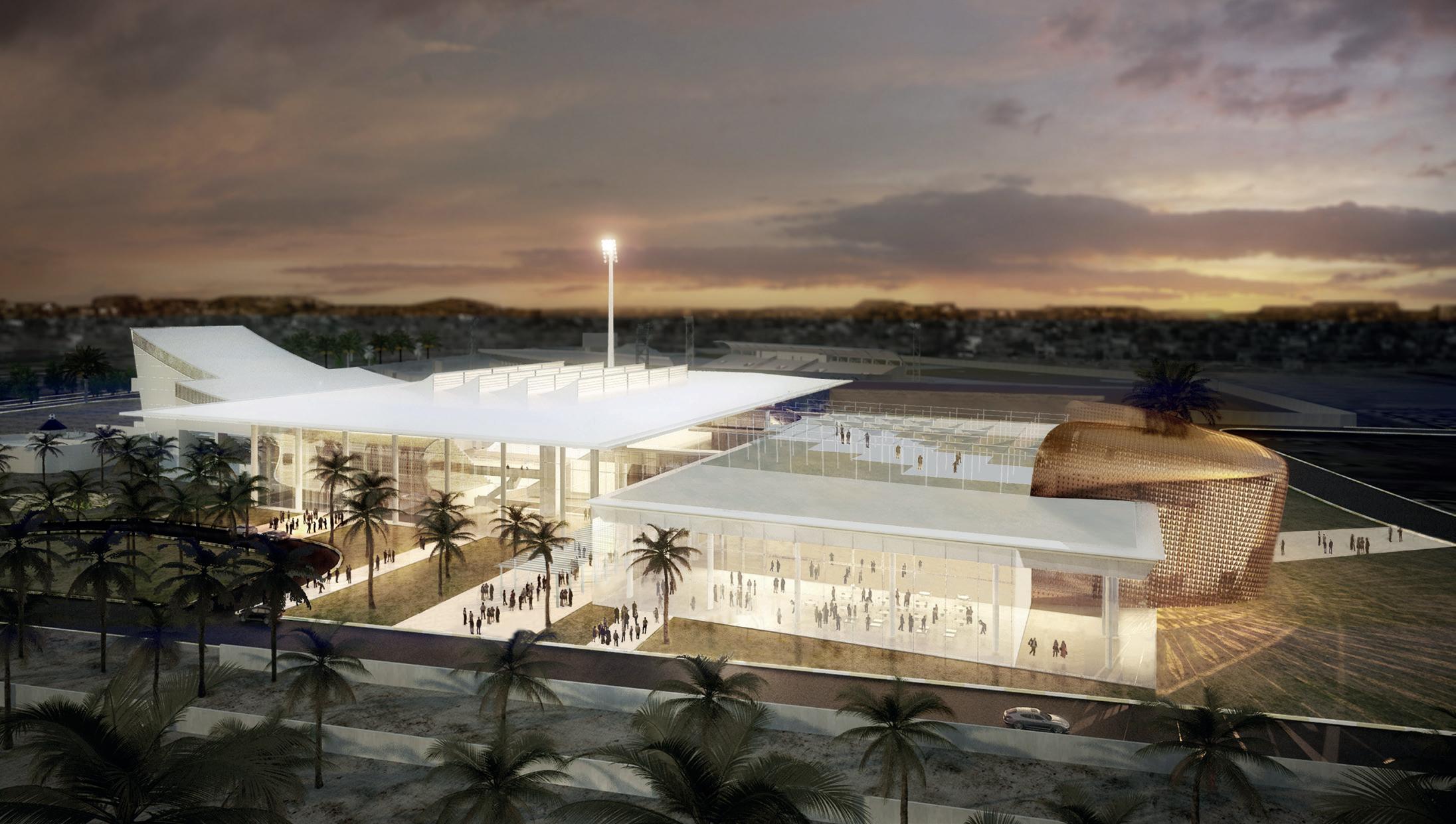

Client / Client : Ministry of Youth and Sports of Bagdad • Lieu / Location : Bagdad, Irak • Programme/ Program : Rénovation d’un stade construit par Le Corbusier / Renovation of a stadium built by Le Corbusier • Architectes / Architects : Bechu & Associés • Architectes associés / Associate Architects : A.-C. Perrot & F. Richard, French Company SARL UR • Superficie / Surface Area : 80 000 m² • Statut / Status : Livré 2013 / Completed in 2013
Métamorphose d’un bâtiment remarquable inscrit MH qui fut construit par Jacques Hardouin-Mansart de Sagonne en 1753.
Metamorphosis of a remarkable building registered MH which was built by Jacques Hardouin-Mansart de Sagonne in 1753.


Depuis sa fondation dès 1188 l’Hôtel-Dieu a veillé sur la santé des Marseillais. Ce phare urbain ouvert sur le Vieux-Port vient de substituer à ses allures de vaisseau fantôme les fastueux habits d’un navire amiral de l’hôtellerie haut de gamme battant pavillon InterContinental.
Le challenge de ce nouveau dessein pour l’HôtelDieu se double d’un défi de recomposition urbaine devant retisser le lien entre l’ex-enclos hospitalier et la ville, entre le Vieux-Port et le quartier du Panier, entre l’histoire et l’avenir, le patrimoine et la modernité. Sans renoncer à aucune des attentes légitimes de ses hôtes à venir, le cinq étoiles s’est humblement glissé dans les volumes existants respectueusement restaurés qu’il valorise et dont l’histoire lui lègue un paysage et une architecture intérieurs propices à l’émerveillement permanent des visiteurs.
Since its foundation in 1188, the Hôtel-Dieu has watched over the health of the people of Marseille. This urban beacon overlooking the Old Port has just replaced its ghost ship appearance with the sumptuous attire of a flagship of the high-end hotel industry flying the InterContinental flag.
The challenge of this new design for the Hôtel-Dieu is coupled with a challenge of urban recomposition that must re-establish the link between the former hospital enclosure and the city, between the Old Port and the Panier district, between the history and the future, heritage and modernity. Without renouncing any of the legitimate expectations of its future guests, the five-star hotel has humbly slipped into the respectfully restored existing volumes that it values and whose history bequeaths to it an interior landscape and architecture conducive to permanent wonder. visitors
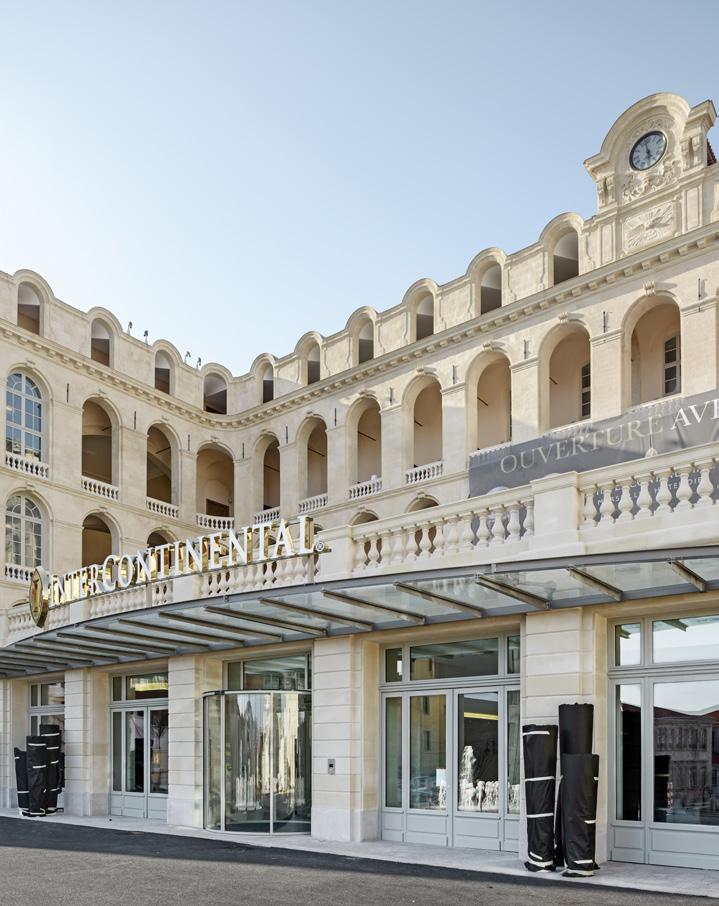

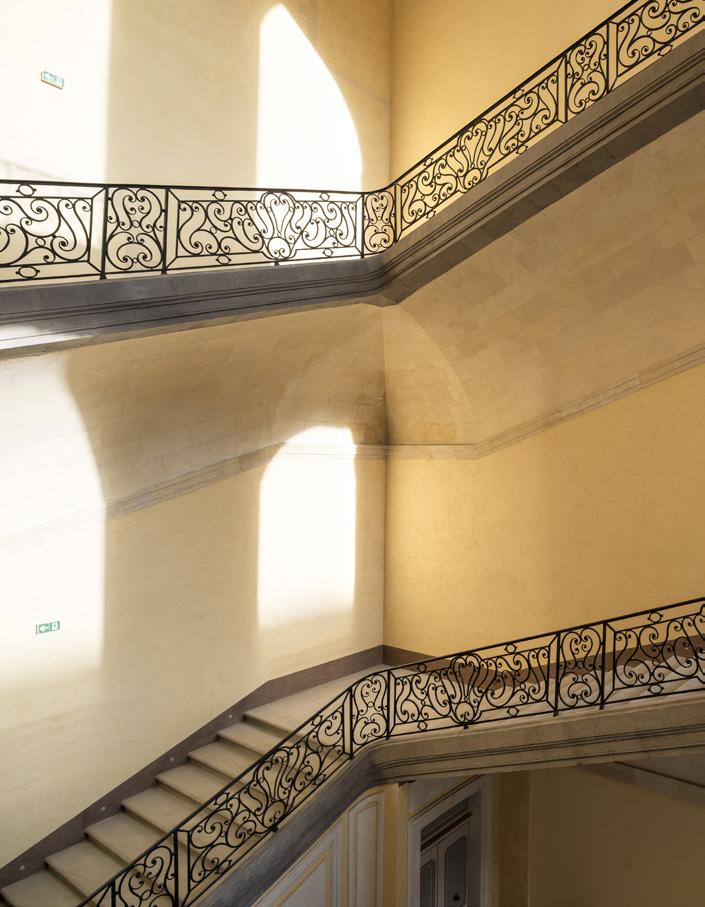
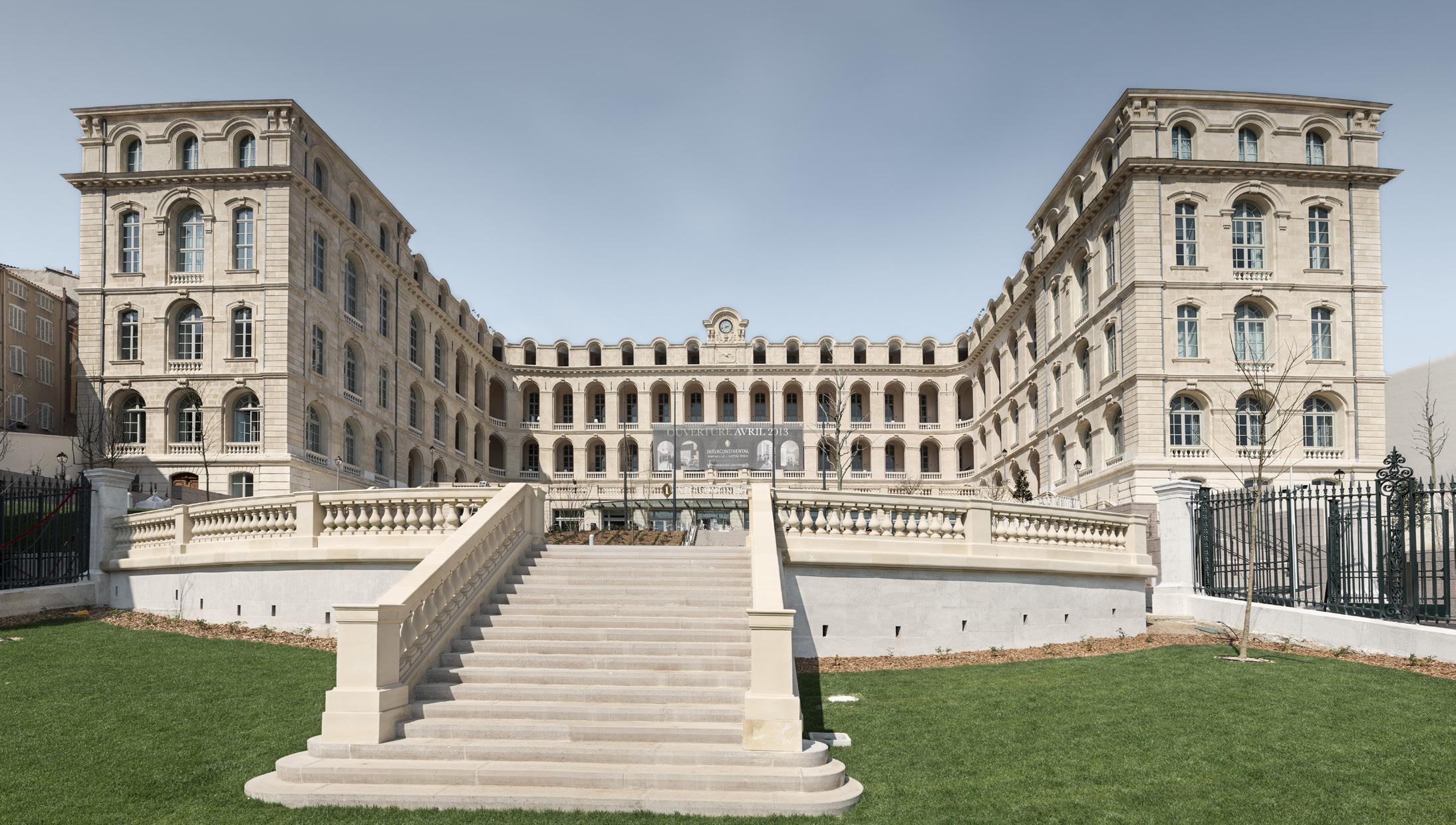
Client / Client : Cogédim • Lieu / Location : Marseille, France • Programme / Program : Transformation de l’Hôtel-Dieu de Marseille en hôtel intercontinental 5* / Transformation of the Hotel-Dieu of Marseille in a Interncontinetal hotel 5* • Architectes / Architects : Bechu & Associés • Superficie / Surface Area : 22 000 m² • Architecte d’interieur / Interior architecture : Volume ABC & Ocre Bleu • Statut / Status : Livré 2013 / Delivered in 2013 >> Classé MH, MIPIM Award 2014 / Registered historical monument, MIPIM Award 2014



La rénovation et l’extension d’un château et de ses dépendances
Renovation and extension of a chateau and its outbuildings
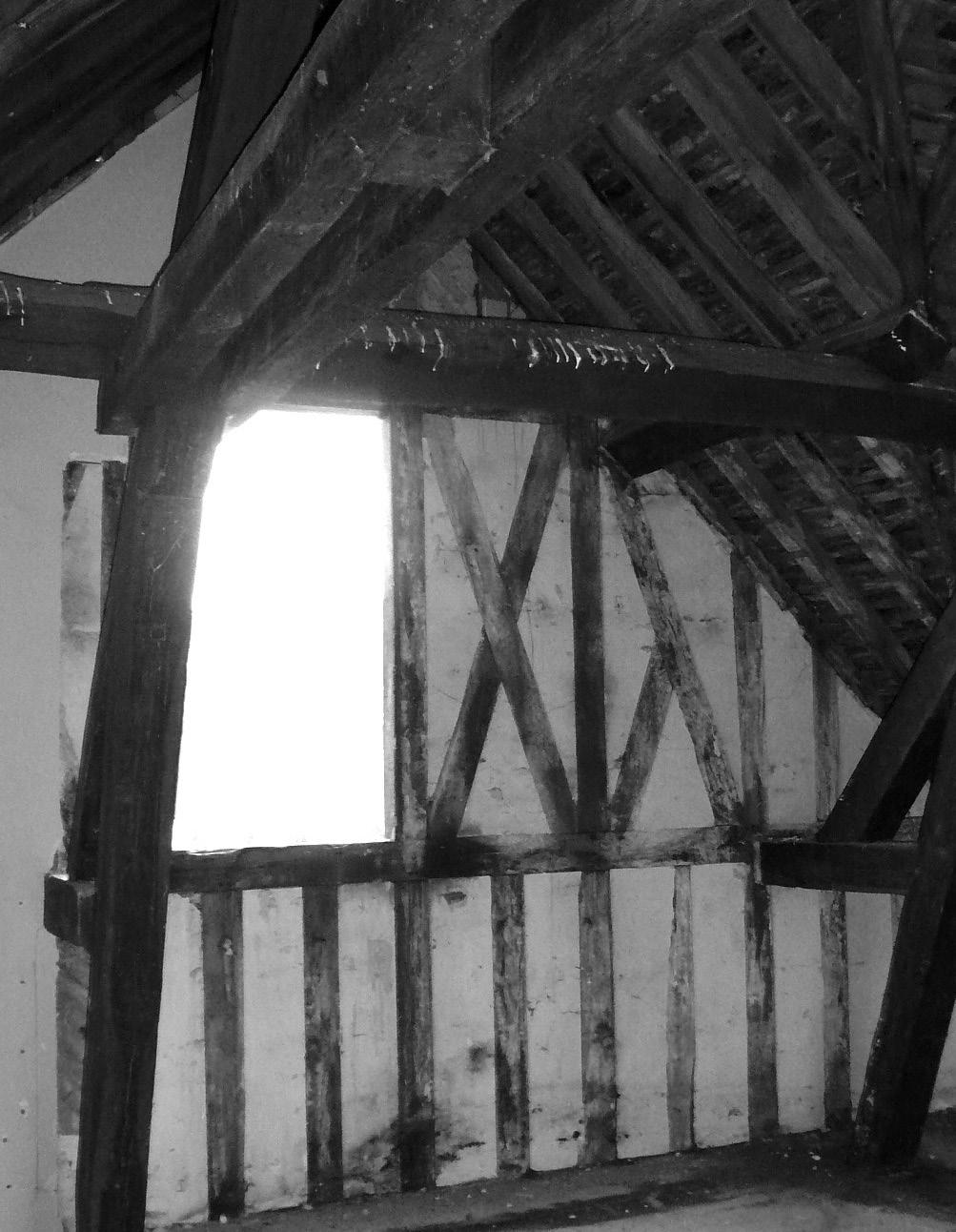


Datant des 17ème et 19ème siècles, le château du domaine des Pins a été pourvu d’un certain nombre d’extensions notamment au début du 20ème siècle. Celles-ci ont été enlevés lors des travaux de réhabilitation par l’Agence d’Architecture A. Bechu qui a pu recréer une aile ainsi qu’un escalier généreux. Une structure en forme de fer à cheval ainsi que la cour du château ont été reconstruites pour répondre aux exigences du propriétaire (chambres, cave, salle de chasse et salons d’accueil).
Les quartiers de service ont été transformés en spa et une piscine intérieure donnant sur le paysage a été ajoutée. La ferme voisine a été restaurée pour héberger le personnel de maintenance.
Dating from the 17th and 19th centuries, the castle of Domaine des Pins has been provided with a number of extensions, particularly at the beginning of the 20th century. These were removed during rehabilitation work by the A. Bechu Architecture Agency, which was able to recreate a wing as well as a generous staircase. A horseshoe-shaped structure as well as the castle courtyard have been rebuilt to meet the owner’s requirements (bedrooms, cellar, hunting room and reception rooms).
The service quarters have been transformed into a spa and an indoor swimming pool overlooking the landscape has been added. The neighboring farmhouse has been restored to house maintenance staff.



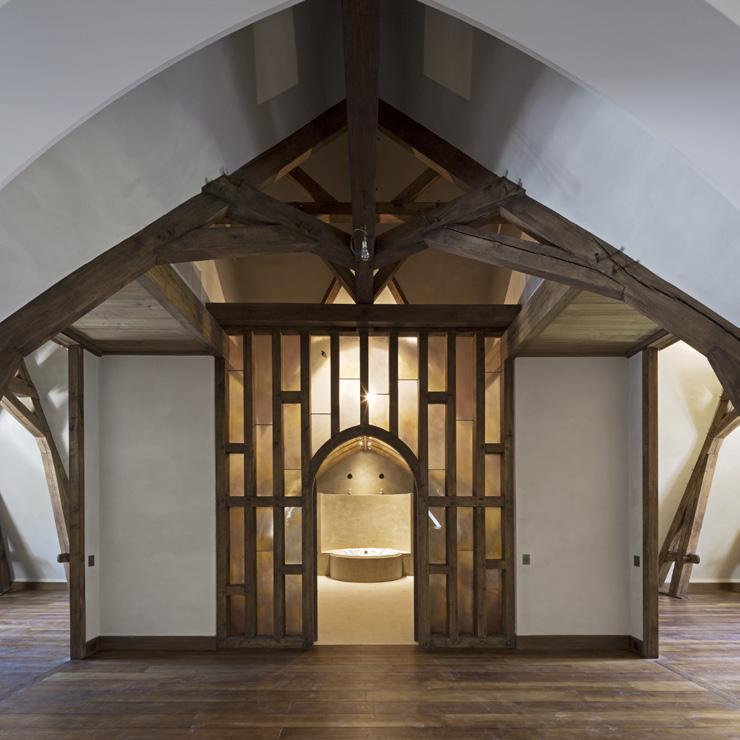
Client / Client : Privé • Lieu / Location : Soing-en-Sologne France • Programme / Program : Aménagement intérieur d’un château / Interior design of a castle • Architectes / Architects : Bechu & Associés • Architecture d’intérieur / Interior architecture : Volume ABC • Superficie / Surface Area : 6 864 m² • Statut / Status : Livré 2014 / Completed in 2014
Extension et rénovation d’un hôtel, centre thalassothérapie et SPA. L’hôtel
5* Miramar la Cigale ne laisse personne indifférent.
Extention and renovation of a hotel, Thalassotherapy center, and spa. The 5* Hotel Miramar la Cigal leaves a lasting impression.
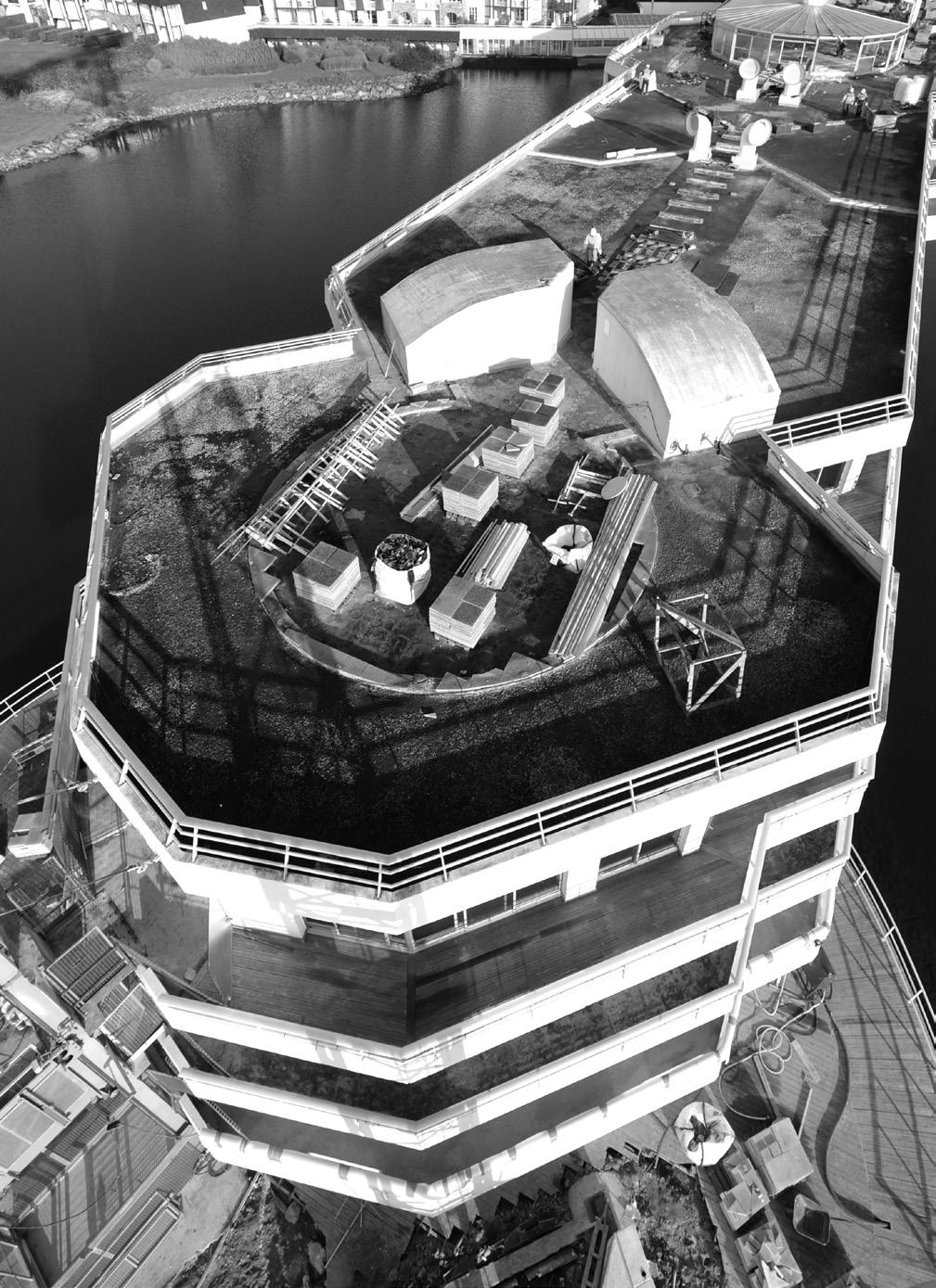
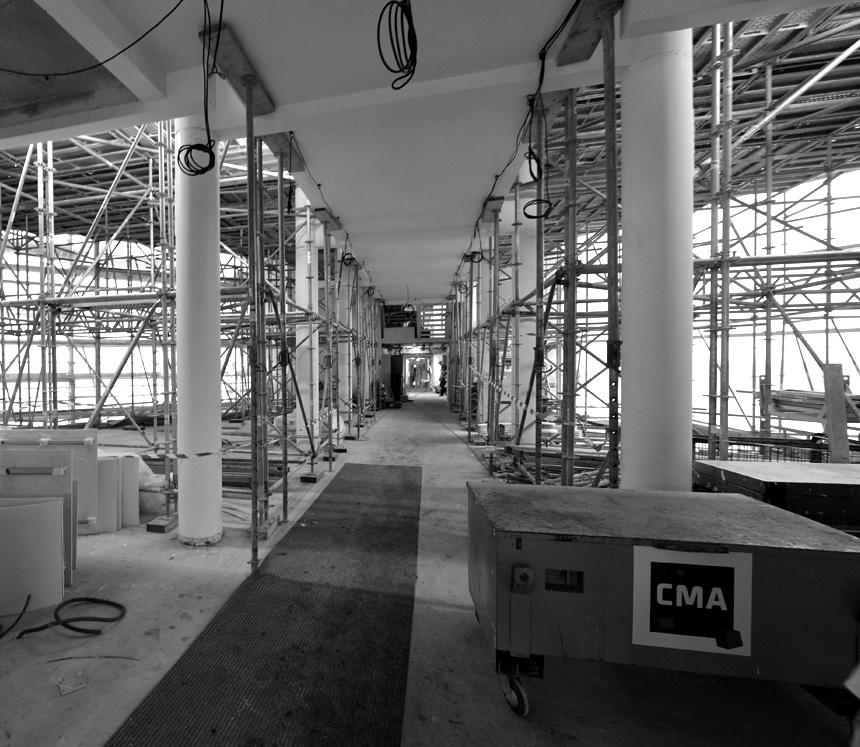

With its astonishing and unique architecture, which looks like an docked cruise ship with its decks and cabins, the hotel is anchored in the middle of a lake of retained sea water.
The sea itself is visible on the horizon 300 meters in front of the hotel. The original hotel and spa were built 20 years ago, but were renewed in an extensive project of extension and renovation, including the complete redecoration of the interiors. This ambitious project was completed in only 6 months in 2015.
With its astonishing and unique architecture, which looks like an docked cruise ship with its decks and cabins, the hotel is anchored in the middle of a lake of retained sea water.
The sea itself is visible on the horizon 300 meters in front of the hotel. The original hotel and spa were built 20 years ago, but were renewed in an extensive project of extension and renovation, including the complete redecoration of the interiors. This ambitious project was completed in only 6 months in 2015.

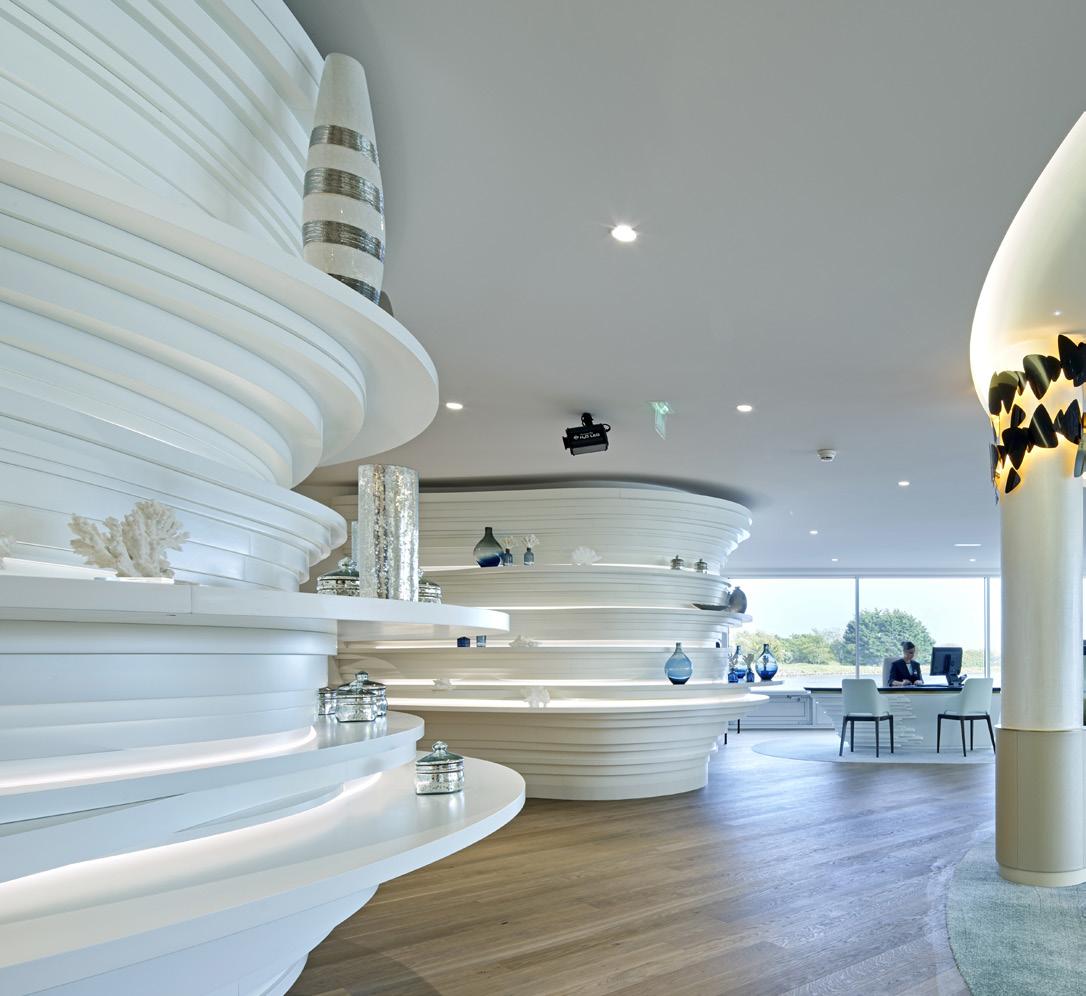

Client / Client : SAS Miramar Immobilier • Lieu / Location : Arzon, France • Programme / Program : Extension et rénovation d’un hôtel, centre thalassothérapie et SPA / Extension and renovation of a hotel, thalassotherapy center and SPA • Architectes / Architects : Bechu & Associés • Constructeur / Contractor : Vinci • Architecture d’intérieur / Interior Architecture: Volume ABC • Superficie d’origine/ Original surface Area : 14,255 m²• Superficie / Surface Area : 15,000 m² • Statut / Status : Livré 2015 / Completed in 2015
Réhabilitation du château de Berchères et création d’un espace de séminaire résidentiel de 50 chambres
Rehabilitation of the Château de Berchères and creation of a residential seminar space with 50 rooms
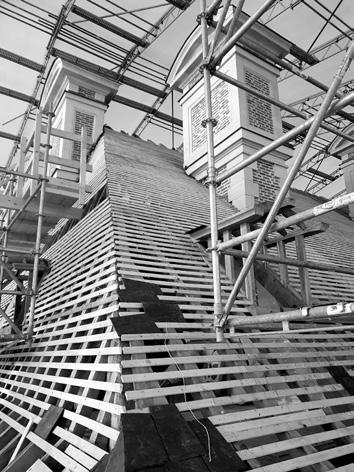

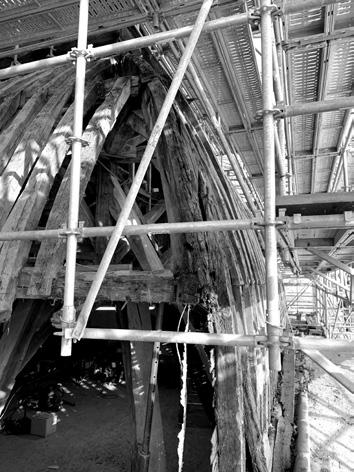
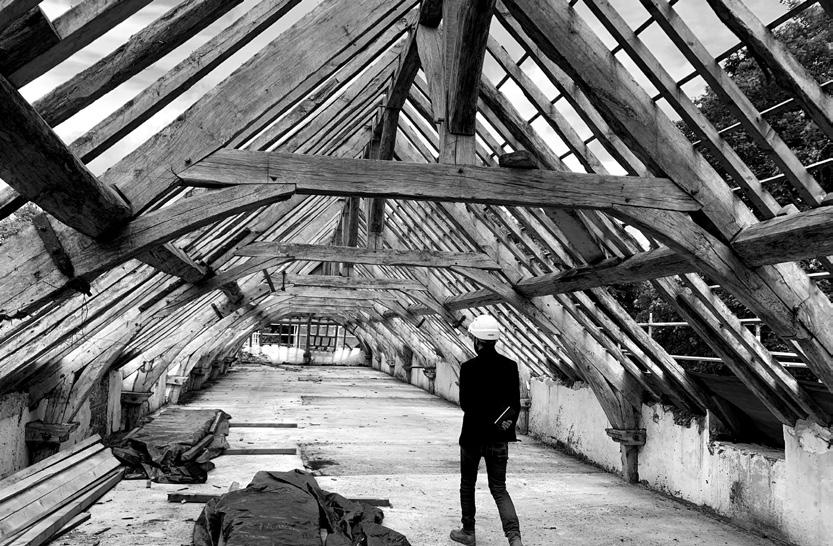




Notre intervention est répartie dans plusieurs bâtiments ( le château, sa chapelle et ses douves, le pavillon de l’intendant, les anciennes écuries, La ferme avec sa grange et son poulailler) l’ensemble se situe sur un parc de 16 hectare sa pièce d’eau, La Vesgre, sa forêt, ses prairies caulicoles, ses vergers et son potager.
Our intervention is spread over several buildings (the castle, its chapel and its moats, the steward’s pavilion, the old stables, the farm with its barn and its henhouse) the whole is located on a 16 hectare park its room of water, La Vesgre, its forest, its caulicole meadows, its orchards and its vegetable garden.

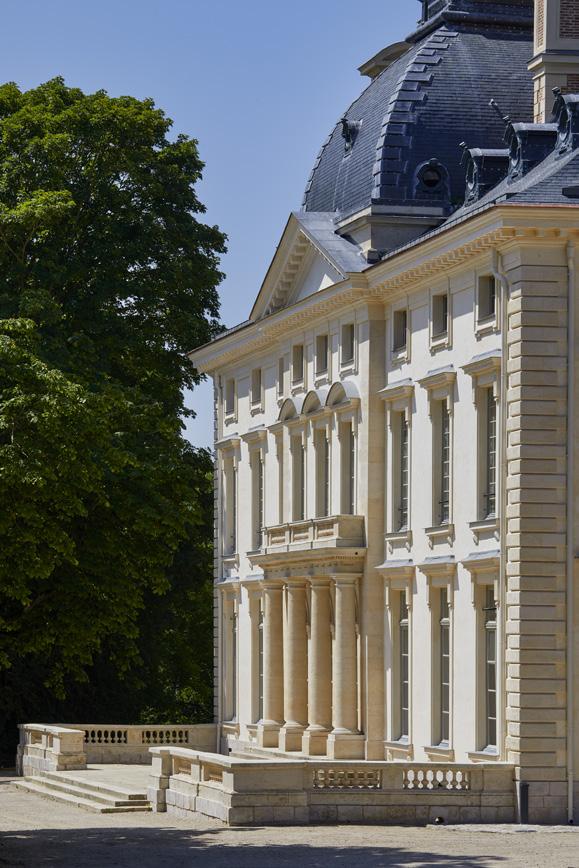

Client / Client : SCI Château de Berchères • Lieu / Location : Berchères-surVesgre, France • Programme / Program : Espace de Séminaires résidentiel ( 50 chambres ) / Residential Seminar Space (50 rooms) • Architectes / Architects : Bechu & Associés • Superficie / Surface Area : 3500 m² dans un parc de 16 ha / 3500 m² in a 16 ha park • Montant des travaux / Cost of work : 14 millions d’euros • Statut / Status : Livré 2022 / Delivered in 2022
>> Developpement durable / Sustainable developpment : Classé MH, Inscrit MH / Classified historical monument, registered historical monument
Un projet d’envergure au coeur du quinzième arrondissement
A major project in the heart of the fifteenth arrondissement



Ouverture d’un Ilôt urbain et construction d’un immeuble de 17 étages en 1970, actuellement, en 2021, rénovation des façades. Dans un ensemble de 700 logements, de plus de 20 000 m2 de bureaux et de commerces, se trouvait l’Institut National de la Consommation et le siège de l’Union Immobilière de France, à la place de la firme N.C.R. Cette opération d’envergure rééquilibrait le 15» arrondissement de Paris avec l’opération du Front de Seine, réalisée entre 1960 et 1970 et offrait la possibilité de construire un bâtiment de 17 niveaux dont les deux derniers étages sont occupés par l’agence d’architecture.
Opening of an urban island and construction of a 17-storey building in 1970, currently, in 2021, renovation of the facades. In a complex of 700 dwellings, with more than 20,000 square metres of offices and shops, was the National Institute of Consumer Affairs and the headquarters of the Real Estate Union of France, in place of the firm N.C.R. This major operation rebalanced the 15th arrondissement of Paris with the operation of the Front de Seine, carried out between 1960 and 1970 and offered the possibility of building a 17-level building whose top two floors are occupied by the architectural agency.
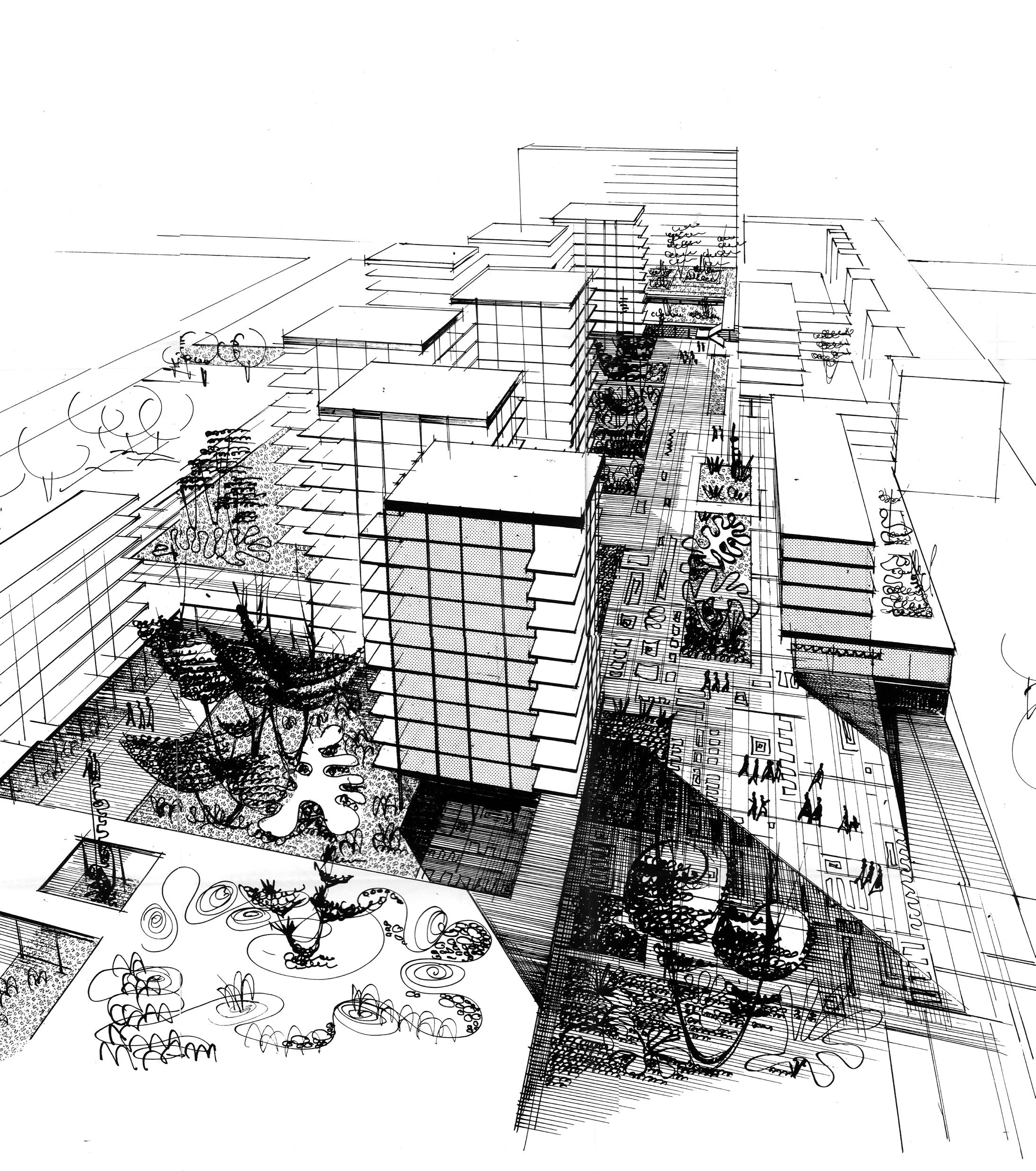
Client / Client : Gecina • Lieu / Location : Paris, France • Programme / Program: construction d’un immeuble de 17 étages en 1970, actuellement, en 2021, rénovation des façades. / construction of a 17-storey building in 1970, currently, in 2021, renovation of the facades. • Architectes / Architects : Bechu & Associés • Superficie / Surface Area : 20 000 m² • Statut / Status : Livraison 1970, actuellement 2022, rénovation des façades / Delivery 1970, currently 2022, renovation of facades
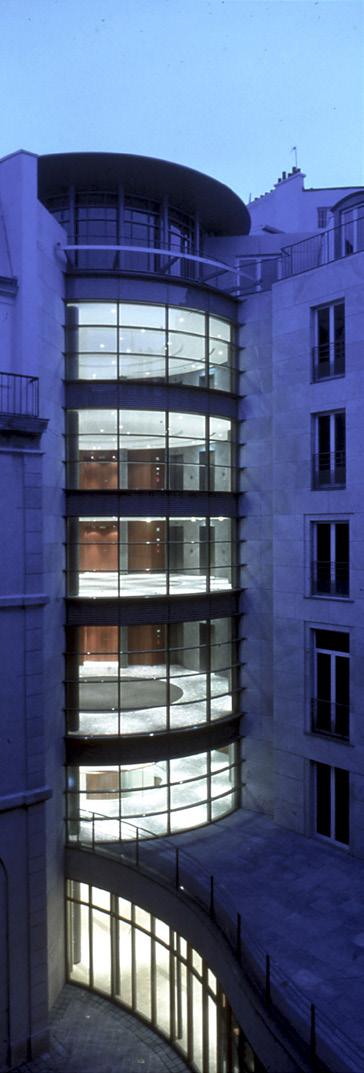
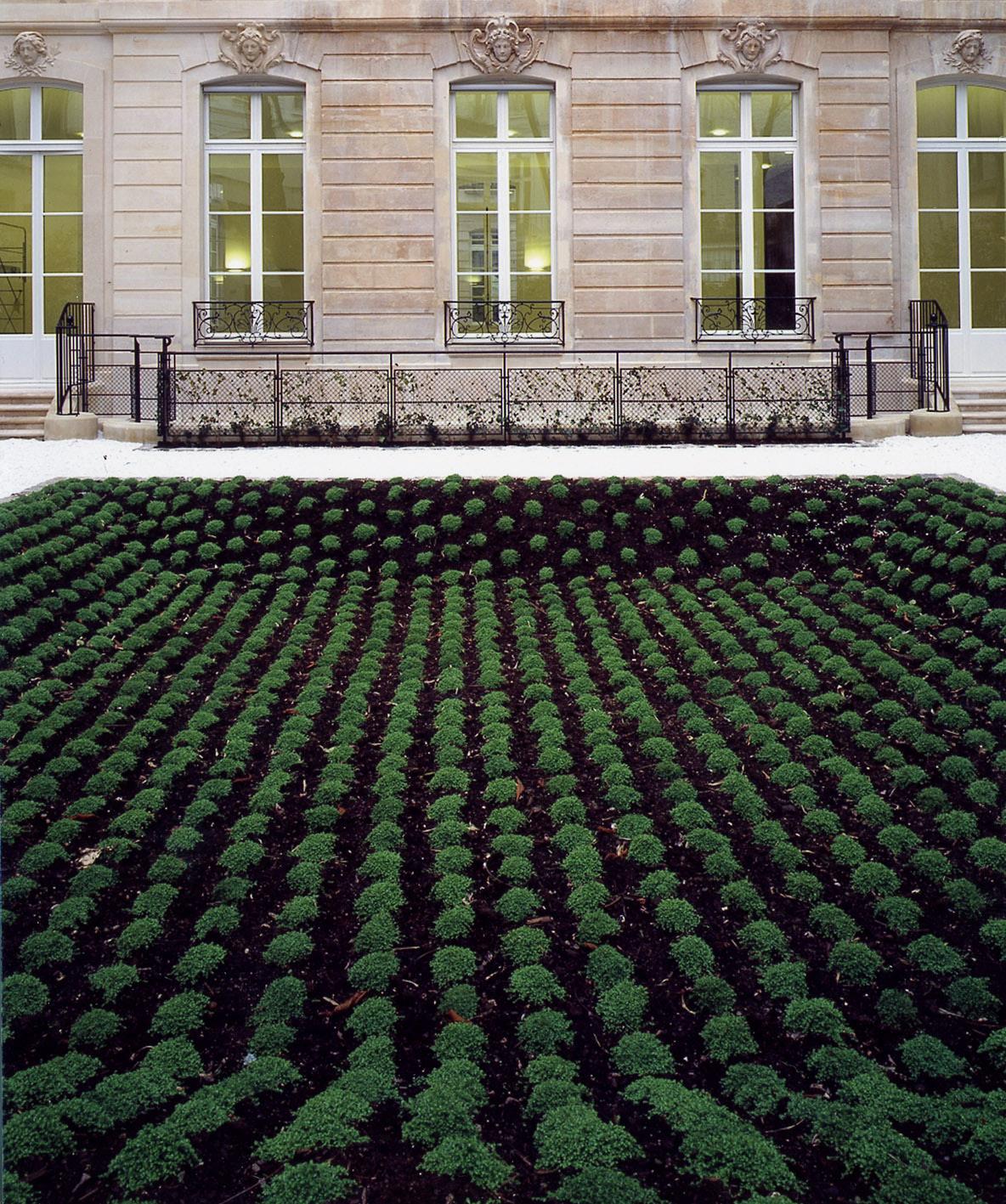
Les quatre hôtels particuliers ayant loti entre 1750 et 1866 les différentes parcelles de l’îlot Madeleine Cambon ont considérablement été altérés depuis.Leur affectation tertiaire au profit du Crédit foncierd’Algérie et de Tunisie au début du XXe siècle et les multiples campagnes de travaux d’adaptationsuccessives ont achevé de consommer le divorceentre le bâti, son contenu et ses usages. Le projet de réhabilitation a su mettre à profit lesnouveaux usages tertiaires en espaces ouverts pourfaire réapparaître la géométrie, les modénatures, les ambiances et vestiges du bâti ancien et redonnercohérence à l’ensemble. Ainsi, tandis que les refendssignificatifs et les trois niveaux de planchers deshôtels étaient conservés, toutes les façades sur rueet la plupart de celles sur cours et jardin ont étérestaurées dans leur état originel tout comme deuxescaliers et des décors authentiques. Les partiesneuves viennent harmonieusement s’inscrire dans cet historique tissu urbain rénové qu’elles articulenttout en le hiérarchisant. À ce titre, la rotule– crééeau point de convergence des tracés XVIIIesiècle de la rue Cambon et XIXesiècle du boulevard de la Madeleine –absorbe élégamment le choc de cesdeux géométries conflictuelles.
The four town houses built on the various Madeleine-Cambon block plots from 1750 to 1866 underwentconsiderable changes for the worse over the years.Converted into offices when taken over by the CréditFoncier d’Algérie et de Tunisie at the start of the 20thcentury, their innumerable successive conversionworks ended up sealing the divorce between thebuilding, its contents and usage. The project to transform and refurbish the blocksuccessfully uses new tertiary open space practicesto highlight the old buildings’ geometry, façadecompositions, ambiances and vestiges again, thereby giving them new coherence. The mansions’considerable partition walls and three floor levelshave thus been conserved, and all the frontages andmost of the façades on the courtyard and gardensides restored in their original state, along with twostaircases and the original decors. The new additionsfit harmoniously in with this renovated historic urbanfabric that they both articulate and hierarchicallystructure. The ball jointcreated where the lines ofthe 18th-century rue Cambon and the 19thcenturyboulevard de la Madeleine converge similarly helpsto absorb the shock of these two conflictinggeometries.
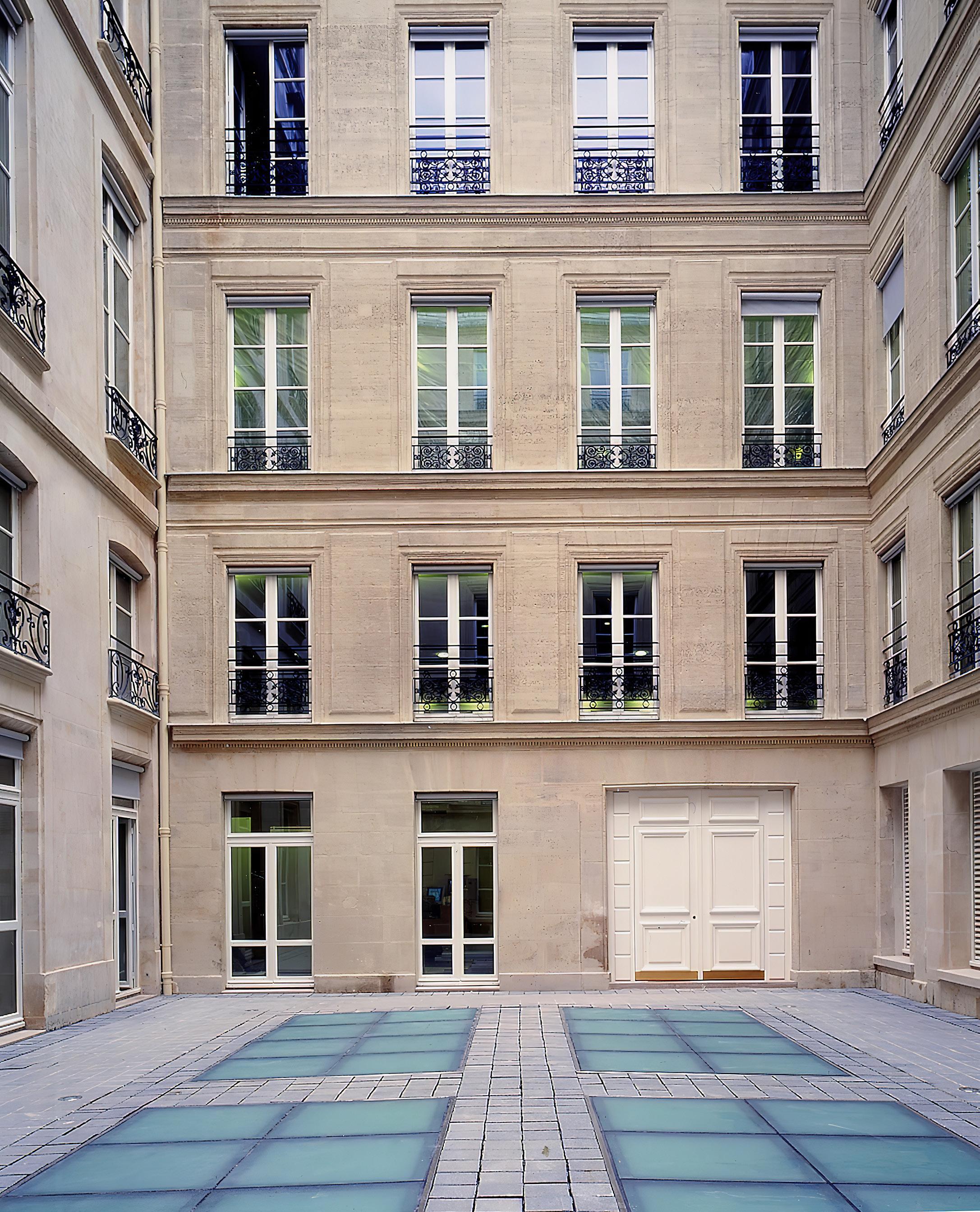
Client / Client : VINCI Immobilier • Lieu / Location : 75001 PARIS • Programme / Program : Réhabilitation d’un immeuble de bureaux. / Rehabilitation of an office building • Architectes / Architects : Bechu & Associés • Superficie / Surface Area : 16 000 m² • Statut / Status : Livré 2005 / Delivery 2005
Un nouvel écosystème rayonnant aux performances environnementales exemplaires: Leed Gold, HQE référentiel 2016 Excellent, Well gold, Label BiodiverCity, Label Wiredscore Gold. A new living ecosystem that radiates outward with high environmental performances: LEED Gold, HQE référentiel 2016 Excellent, WELL Gold, Label BiodiverCity, Label Wiredscore Gold.

L’ensemble immobilier, objet de cette réhabilitation d’envergure, est actuellement composé de deux parties : La première, appelée le Banville et située Rue Pierre Demours fut construite en 1925 et la seconde, située Rue de Courcelles en 1961.
Notre projet consiste à proposer un seul établissement de bureaux comportant un hall principal situé rue de Courcelles et un hall secondaire situé rue Pierre Demours, un parc de stationnement, un RIE, et un centre de formation indépendant.
L’ensemble du projet vise à transformer ce site vieillissant en une nouvelle adresse parisienne attractive. Il prévoit une ouverture généreuse sur la ville, largement vitrée et ponctuée de loggias végétalisées ; son écriture architecturale en damier de blocs vitrés propose une seconde échelle d’avantage en rapport à celle de l’humain.
La forte présence de la végétalisation sera également un facteur d’amélioration par rapport aux immeubles voisins (notamment sur la rue Pierre Demours, qui est très étroite).
Les poches végétalisées seront autant d’écrins de végétation grimpante qui formeront des jardins suspendus.
The property complex that is the subject of this major renovation project currently has two components. The first, called Le Banville and situated on Rue Pierre Demours, was built in 1925, while the second was built on Rue de Courcelles in 1961.
Our design features a single office building with a main lobby on Rue de Courcelles and a secondary lobby on Rue Pierre Demours, a car park, a shared company cafeteria, and an independent training centre.
As a whole, the design aims to transform this ageing site into an attractive new Parisian hotspot. The building has a generous street-side facade, principally glass and punctuated by green loggias; its architectural narrative, a checkerboard of glass slabs, gives the project a second scale beyond its human dimension.
The extensive planting will also be a factor in improving the building with respect to the neighbouring constructions (especially on Rue Pierre Demours, which is very narrow). These green pockets will take the form of numerous boxes of climbing plants that create hanging gardens.

Client / Client : Gecina • Lieu / Location : Paris, France • Programme / Program : Restructuration d’un immeuble de bureaux et commerces / Offices and retail
• Architectes / Architects : Bechu & Associés • Architecture d’intérieur / Interior architecture : Volume ABC • Superficie / Surface Area : 32 000 m² • Statut / Status
: Début contrustruction en 2021 - Livraison en septembre 2024 / Construction started in 2021 - Delivery in september 2024
>> Developpement durable / Sustainable developpment : Leed Gold, HQE référentiel 2016 Excellent, Well gold, Label biodiversity, Label Wiredscore Gold / Leed Gold, HQE référentiel 2016 Excellent, Well gold, Label biodiversity, Label Wiredscore Gold
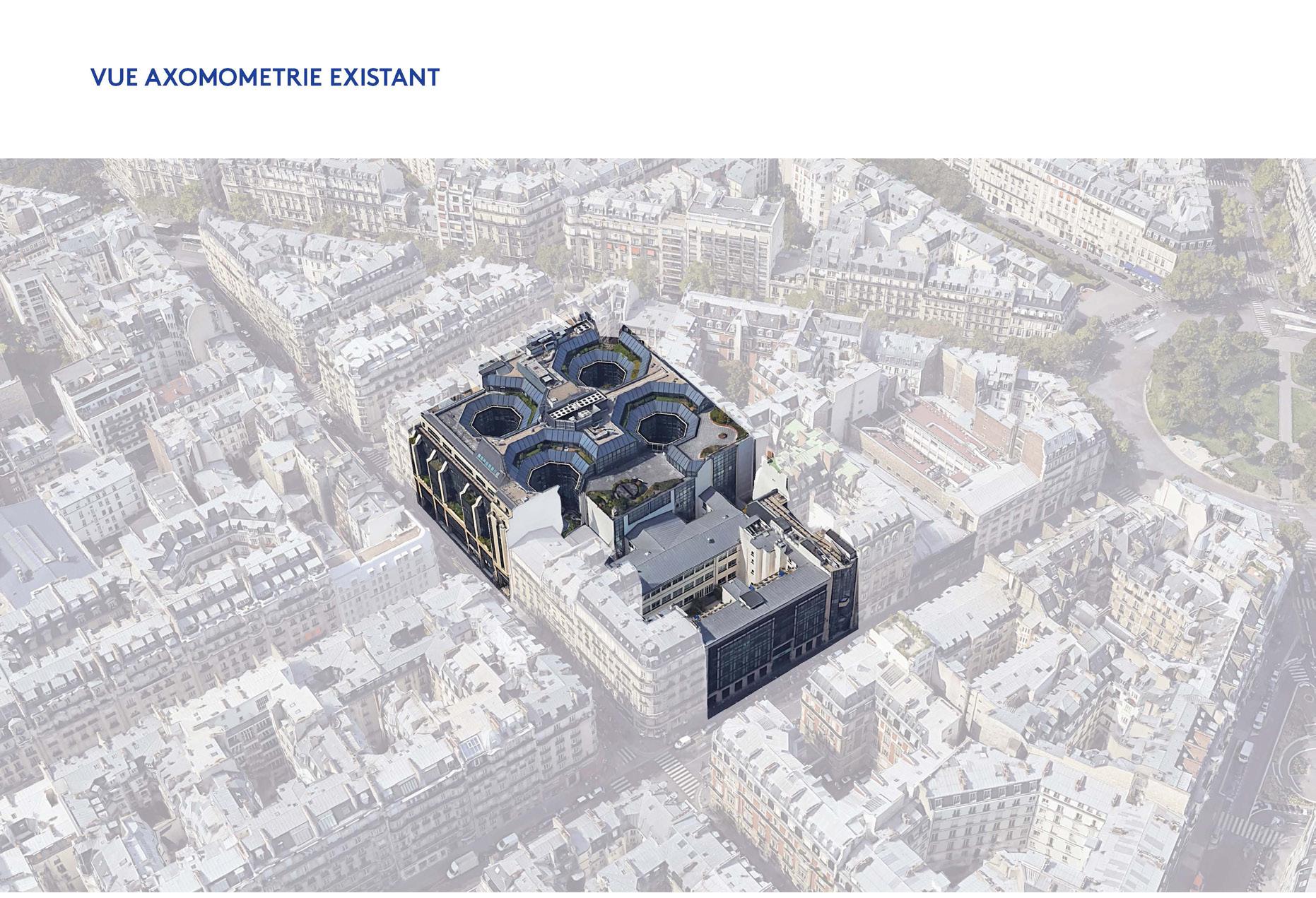
Ce projet s’inscrit dans une démarche durable qui vise à « reconstruire la ville sur la ville ».
Il sera un démonstrateur de la capacité d’une équipe de concepteurs à réinventer entièrement un bâtiment en fonction de l’évolution de son écosystème, de l’évolution des techniques pour optimiser sa valorisation patrimoniale et des usages, ainsi garantir une meilleure qualité de vie aux êtres qui y évoluent.
« Mutualisation », « Communication », « Mobilité », « Partage » et « Qualité de vie » guident le monde d’aujourd’hui et la nouvelle génération de bureaux qui en émane.
Plus que d’un « life style » nous parlons d’un « work style » qui assurera aux entreprises locataires la performance et l’esprit d’équipe de leurs collaborateurs.
Pour faire de cet immeuble de bureau un outil de management et de performance pour les entreprises, il doit se transformer et s’adapter aux nouveaux modes de travail de ses futurs occupants. Notre intention est de donner l’élan à l’immeuble de bureau de demain au sein de la ville classique, vivante, ouverte et mixte en faisant de cet ensemble un véritable outil de travail innovant, flexible et adapté aux normes environnementales, par l’aménagement d’espaces de qualité qui favoriseront le bien-être au travail et la performance des salariés des futures entreprises locataires...

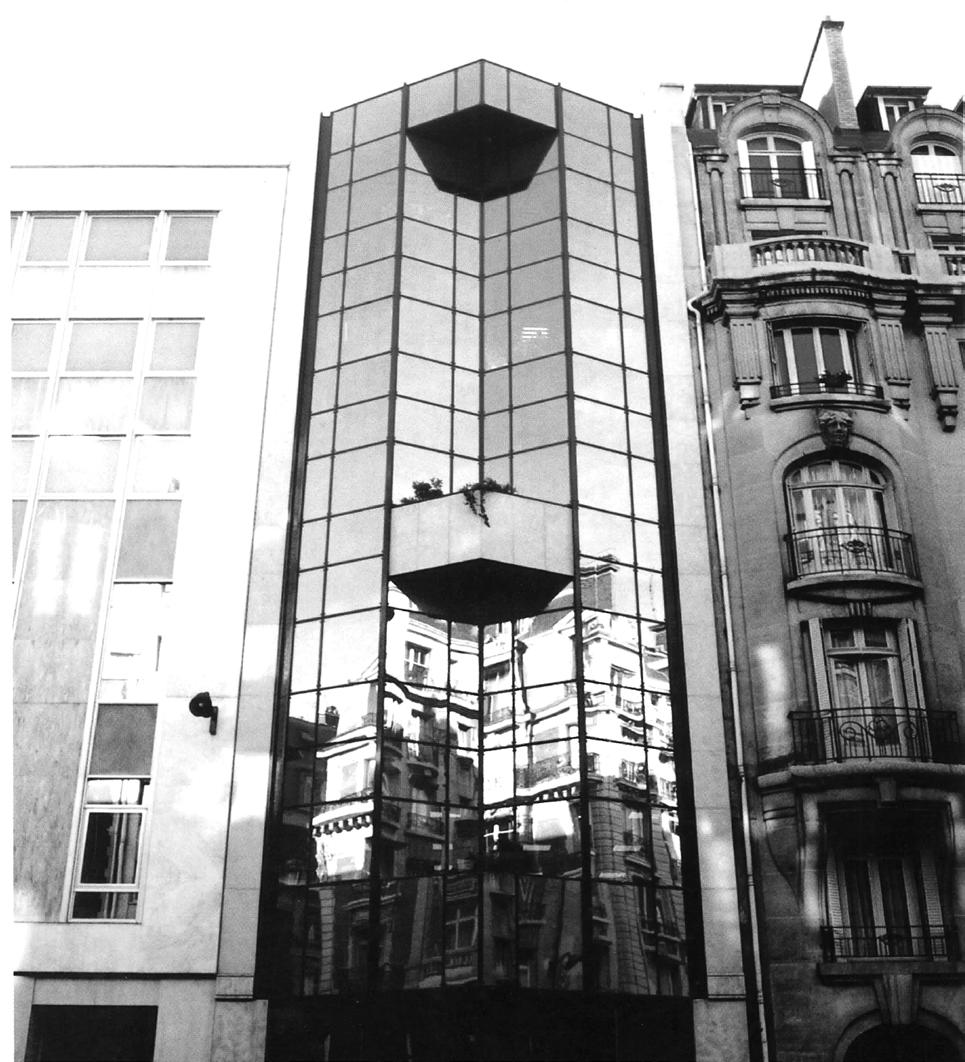
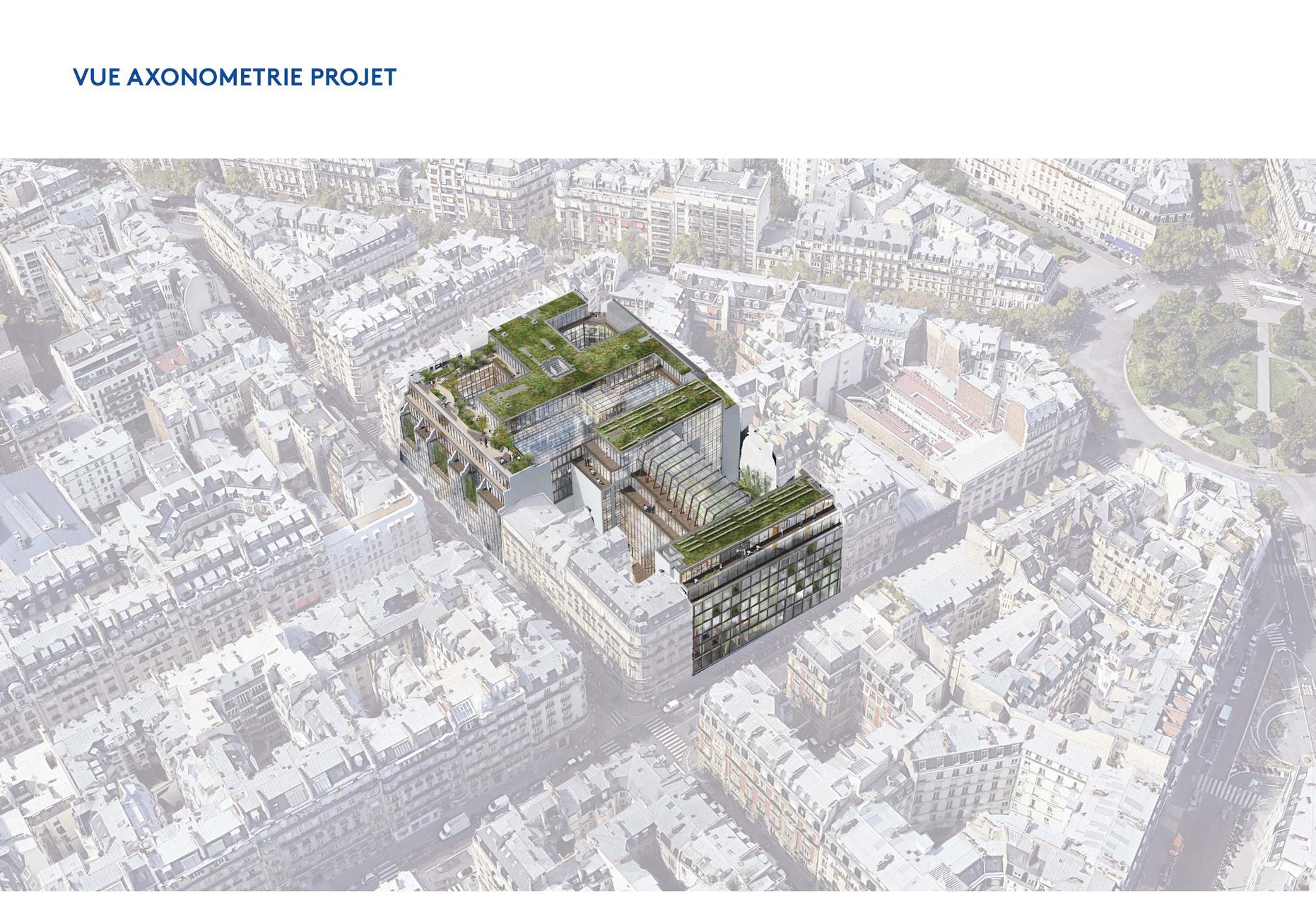
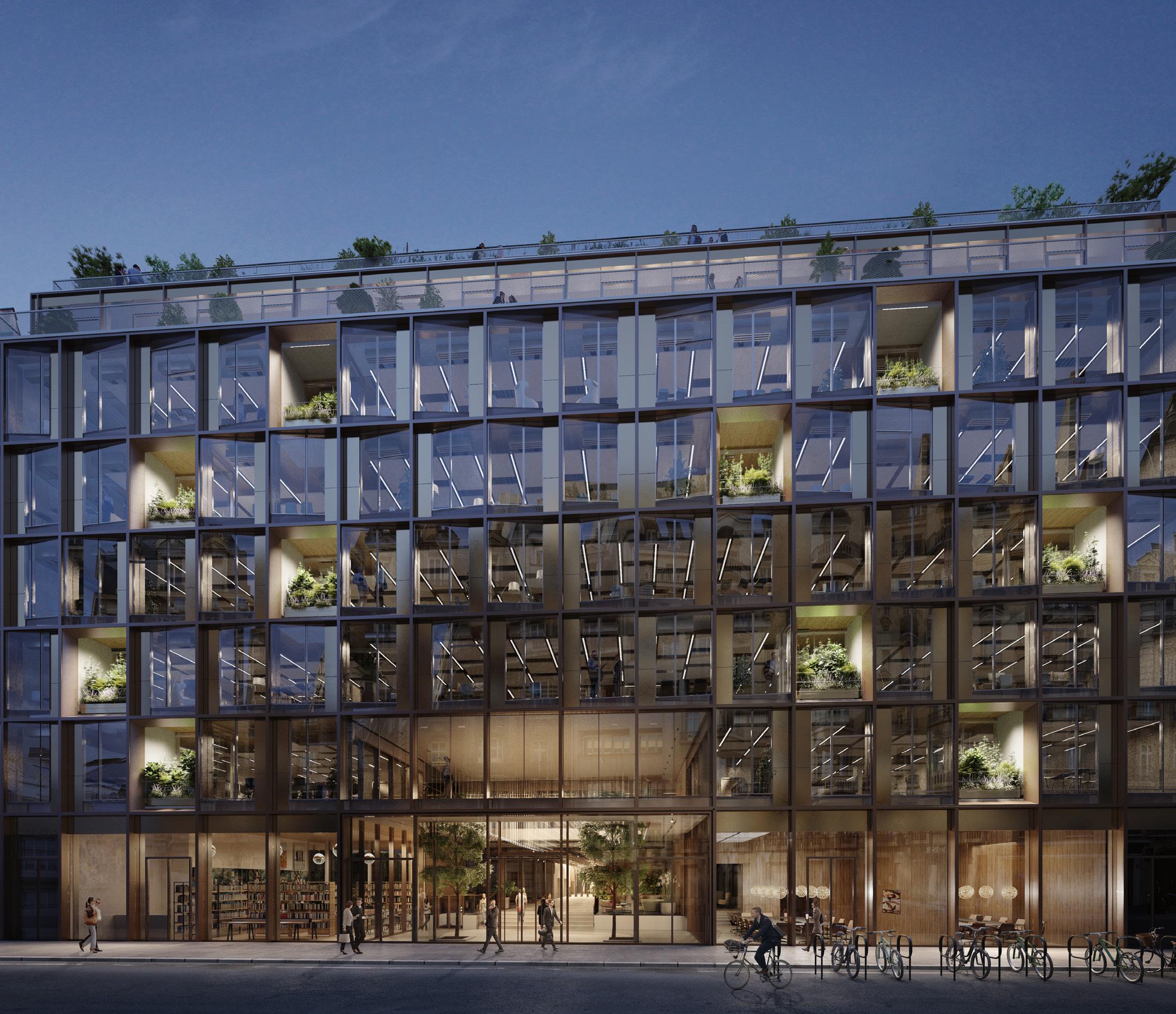
La renaissance d’un héritage architectural
The revival of an architectural heritage
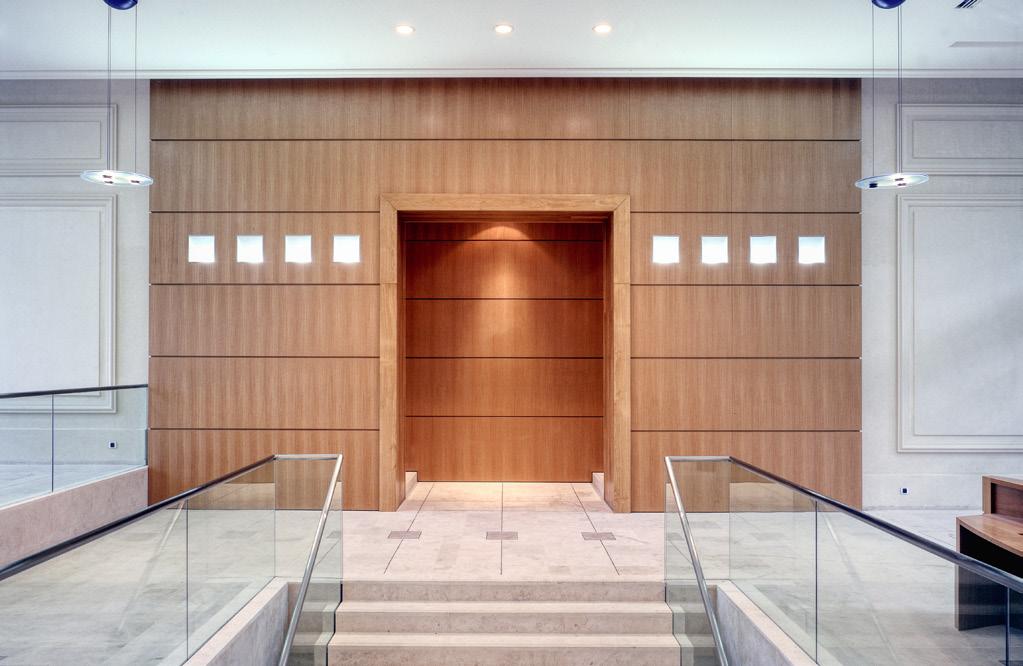
À proximité immédiate de l’Opéra Garnier et des Galeries Lafayette, les immeubles occupés jusqu’alors par le groupe bancaire Natexis entremêlaient des constructions Directoire sur la rue de la Chaussée d’Antin et du Second Empire sur le boulevard Haussmann, hélas fortement remaniées depuis. Leur rachat par Artemis en 2001 a permis la renaissance de cet héritage architectural tout en faisant naître un complexe tertiaire performant et contemporain. L’hôtel Moreau – en arrière-cour – retrouve, une fois débarrassé de ses surélévations intempestives, son intégrité fin XVIIIe et les joyaux décoratifs de ses salles à manger et de réception à rezde-chaussée, de ses salons et chambres du premier étage. Ses ailes et avant-corps en hémicycle récupèrent leur assise originelle. De part et d’autre, les immeubles de la rue de la Chaussée d’Antin voient restaurées leurs façades et toitures classées tandis qu’est sauvé à l’intérieur ce qui peut encore l’être afin de témoigner que conservation et modernité peuvent se côtoyer dans la restructuration d’un tel ensemble. Dénaturé et inadapté, le bâti à l’arrière des façades conservées des immeubles du boulevard Haussmann a été entièrement refondu pour créer sur rue des boutiques à rez-de-chaussée et entresol renouant avec la typologie commerciale des Grands Boulevards, des circulations verticales innervant au mieux les plateaux de bureaux en étages. La cour intérieure refaçonnée développe une façade très contemporaine en métal et verre en vis-àvis de l’ancien, à nouveau révélé, qui conforte par ses racines et sa poésie la destination de ce bel ensemble tertiaire, très parisien et techniquement parfait.
Situated in the immediate proximity of the Opéra Garnier and Galeries Lafayette, the buildings hitherto occupied by the Natexis banking group were a mix of Directoire constructions on rue de la Chaussée d’Antin, and Second Empire buildings on boulevard Haussmann that had unfortunately been considerably altered since. Their 2001 takeover by Artemis made it possible to revive this architectural heritage whilst creating an efficient, contemporary tertiary complex at the same time. Once rid of its inopportune rooftop extensions, the Hôtel Moreau (to the back of the courtyard) was also given back its late18th-century integrity and the decorative gems of its ground-floor dining and reception rooms and its first-floor lounges and rooms. Set in a hemicycle, its wings and projecting parts were given back their original base. The buildings on the Chaussée d’Antin had their listed façades and roofs restored in places, and all that could still be saved on the inside was, proving that conservation and modernity can go hand-inhand when transforming such an ensemble. Denatured and unsuitable, the construction behind the boulevard Haussmann’s conserved façades was entirely rebuilt, creating boutiques on the ground-floor and entresols that reconnect with the commercial typology of the Grands Boulevards, and vertical circulations to innervate the office spaces in the upper floors as much as possible. The reshaped interior courtyard offers a highly contemporary metal and glass façade in vis-à-vis to the newly restored ancient features, whose roots and poetry consolidate the future of this fine, highly Parisian, technically-perfect tertiary ensemble.
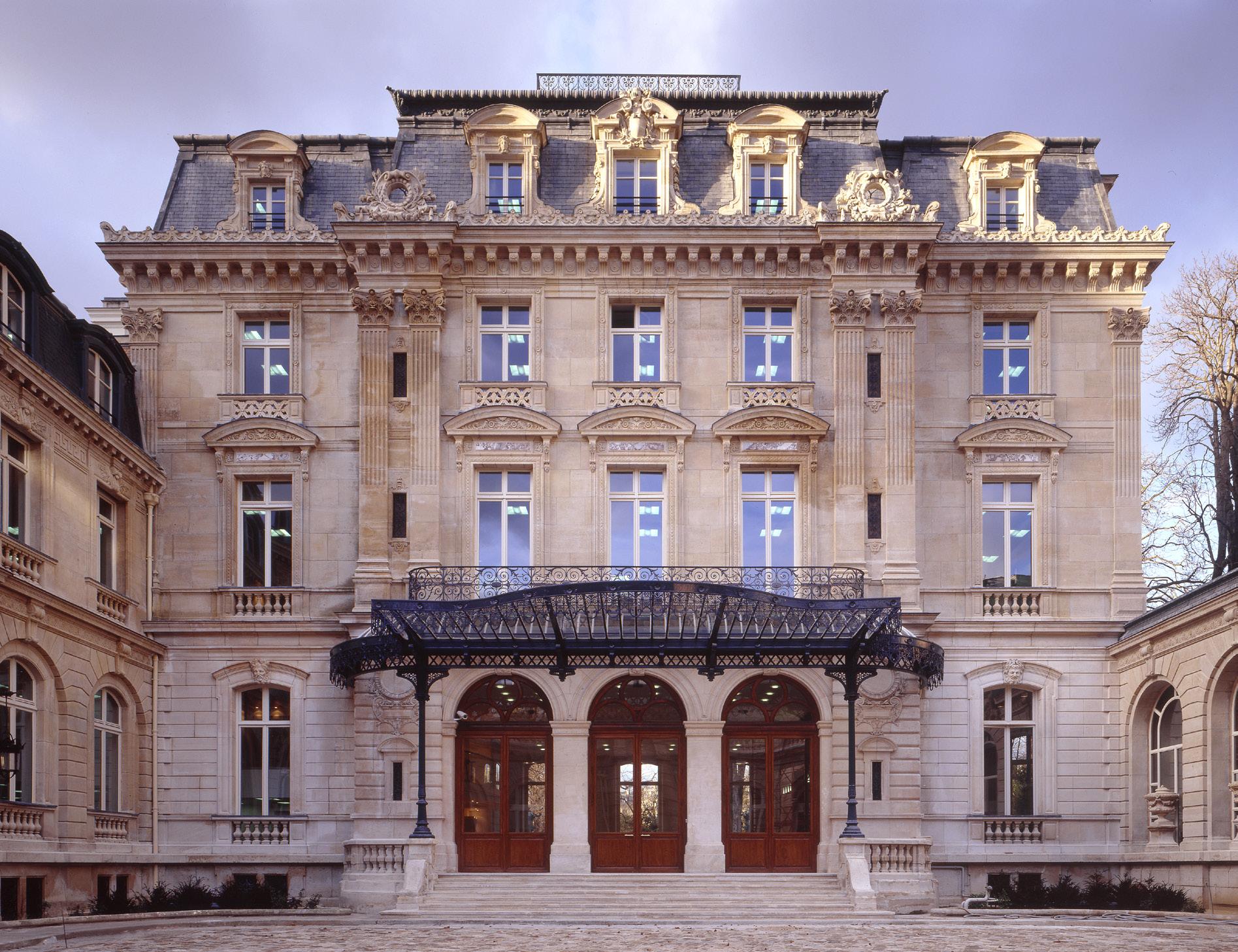

Client / Client : SODEARIF • Lieu / Location : 21 Boulevard Haussmann, 16-26 Rue de la Chaussée d’Antin - 75009 Paris • Programme / Program : Réhabilitation d’un immeuble de bureaux, commerces, logements / Rehabilitation of an office building, shops, housing • Architectes / Architects : Bechu & Associés • Superficie / Surface Area : 15 000 m² • Statut / Status : Livré 2005 / Delivered 2005
impressive and delicate renovation
Six années seront nécessaires pour livrer les 100 000 m²; de cette impressionnante et délicate rénovation. C’est en s’appuyant sur l’histoire que sera redessiné le cœur d’îlot où les nouveaux espaces verts, cours et places feront revenir la lumière pour les réoxygéner.
Tandis que les hôtels de la rue Caumartin et les façades haussmanniennes du boulevard seront restaurés, la rue Édouard VII – retrouvant l’esprit des grands boulevards – sera rendue à la ville en devenant un axe de communication protégé des nuisances urbaines. La superposition raisonnée des tracés géométriques d’Aubert (XVIIIe siècle), d’Haussmann (XIXe siècle) et de Nénot (1911) réordonne l’espace en le hiérarchisant pour engendrer une ville dans la ville. Passages cochers et cours parisiennes assurent la transition temporelle et spatiale entre styles, patrimoine et modernité, domaines public et privé, chacun glissant l’un sur l’autre, de l’un à l’autre.
Dans le même esprit, les constructions neuves intérieures complètent et poursuivent l’histoire en retranscrivant dans un langage actuel les éléments architecturaux hérités du passé : lits de pierres, avant-corps, ordonnancement des socle, entresol, étages et couronnements (plus contemporains).Modénature et corniches horizontales réinterprétées en négatif ; hauteur sous plafond diminuant des étages nobles jusqu’à ceux d’attique plus libres puisqu’en retrait ; toitures à galbe elliptique s’ornant de lucarnes de souffleur ; rotonde récupérant un ancien escalier... Abritant dorénavant 70 logements et une résidence hôtelière, 36 000 m²; de bureaux et 8 000 m²; de commerces, un centre de conférences et un restaurant interentreprises, un théâtre et un music-hall, 560 places de stationnement et un parking pour autocars souterrains, ce projet démontre que conserver c’est aussi transformer !
Six years will be needed to deliver the 100,000 m²; of this impressive and delicate renovation. It is by relying on history that the heart of the block will be redesigned where the new green spaces, courtyards and squares will bring back the light to re-oxygenate them.
While the hotels on rue Caumartin and the Haussmann facades of the boulevard will be restored, rue Édouard VII – rediscovering the spirit of the grand boulevards – will be returned to the city by becoming a communication axis protected from urban nuisances. The reasoned superimposition of the geometric lines of Aubert (18th century), Haussmann (19th century) and Nénot (1911) reorders the space by prioritizing it to create a city within the city. Passageways and Parisian courtyards ensure the temporal and spatial transition between styles, heritage and modernity, public and private domains, each sliding one over the other, from one to the other.
In the same spirit, the new interior constructions complete and continue the story by transcribing in a current language the architectural elements inherited from the past: stone beds, avantcorps, ordering of the base, entresol, floors and crownings (more contemporary). Molding and horizontal cornices reinterpreted in negative; height under ceiling decreasing from the noble floors to those of the attic which are freer since they are set back; elliptical curved roofs adorned with skylights; rotunda recovering an old staircase... Now housing 70 apartments and a hotel residence, 36,000 m²; of offices and 8,000 m²; of shops, a conference center and an inter-company restaurant, a theater and a music hall, 560 parking spaces and an underground coach park, this project demonstrates that conserving is also transforming !
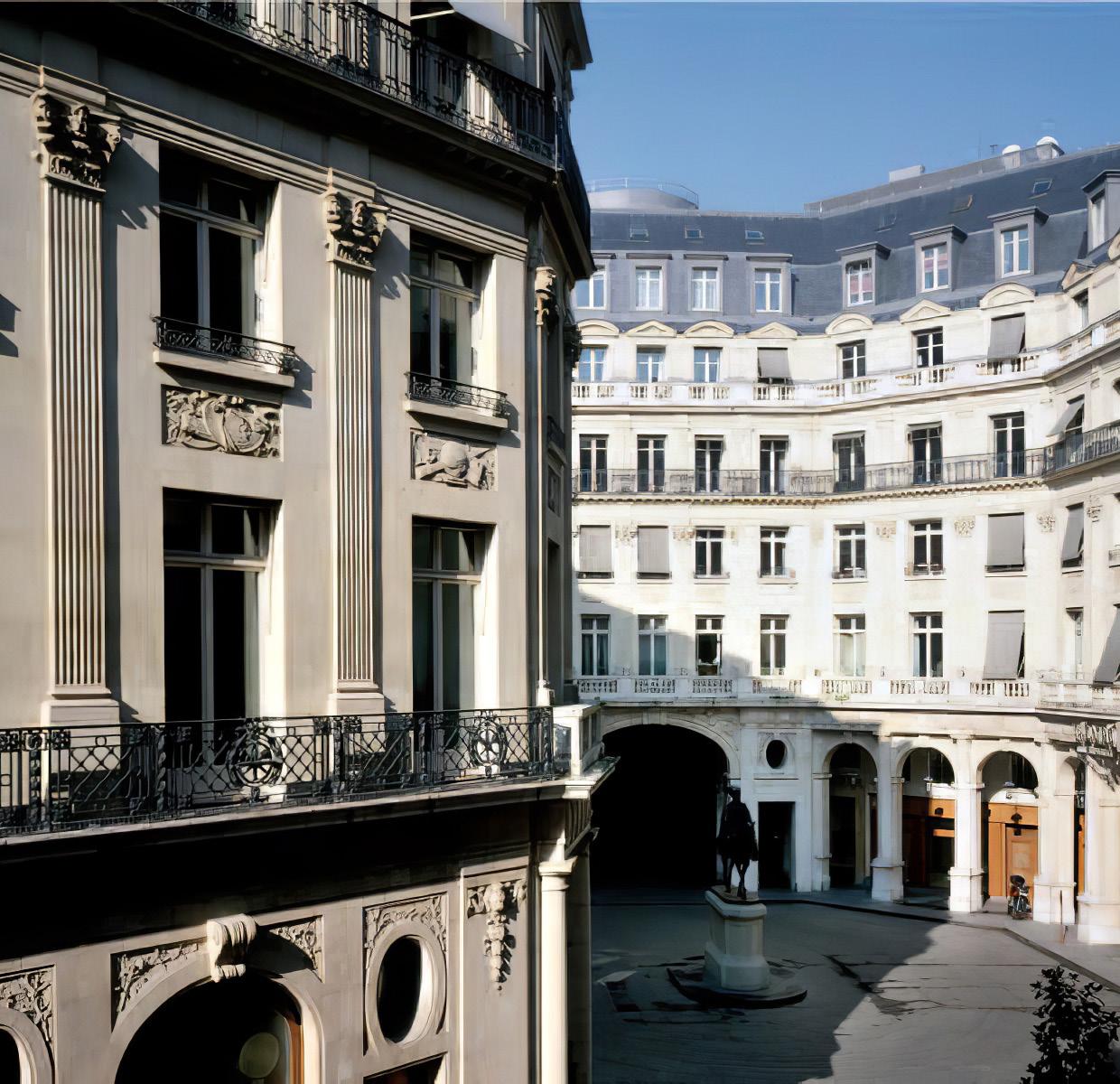
Client / Client : Sogeprom • Lieu / Location : Paris 9°, France • Programme / Program : Restructuration d’immeubles de bureaux, logements, théâtres. Réalisation d’un centre de conférences, de résidences hôtelières et de commerces / Restructuring of office buildings, housing, theaters. Realization of a conference center, hotel residences and shops • Architectes / Architects : Bechu & Associés • Architecte associé / In association with : Urquijo/Macola/Valle • Superficie / Surface Area : 100.000 m² • Statut / Status : Livré 1999 / Delivered in 1999

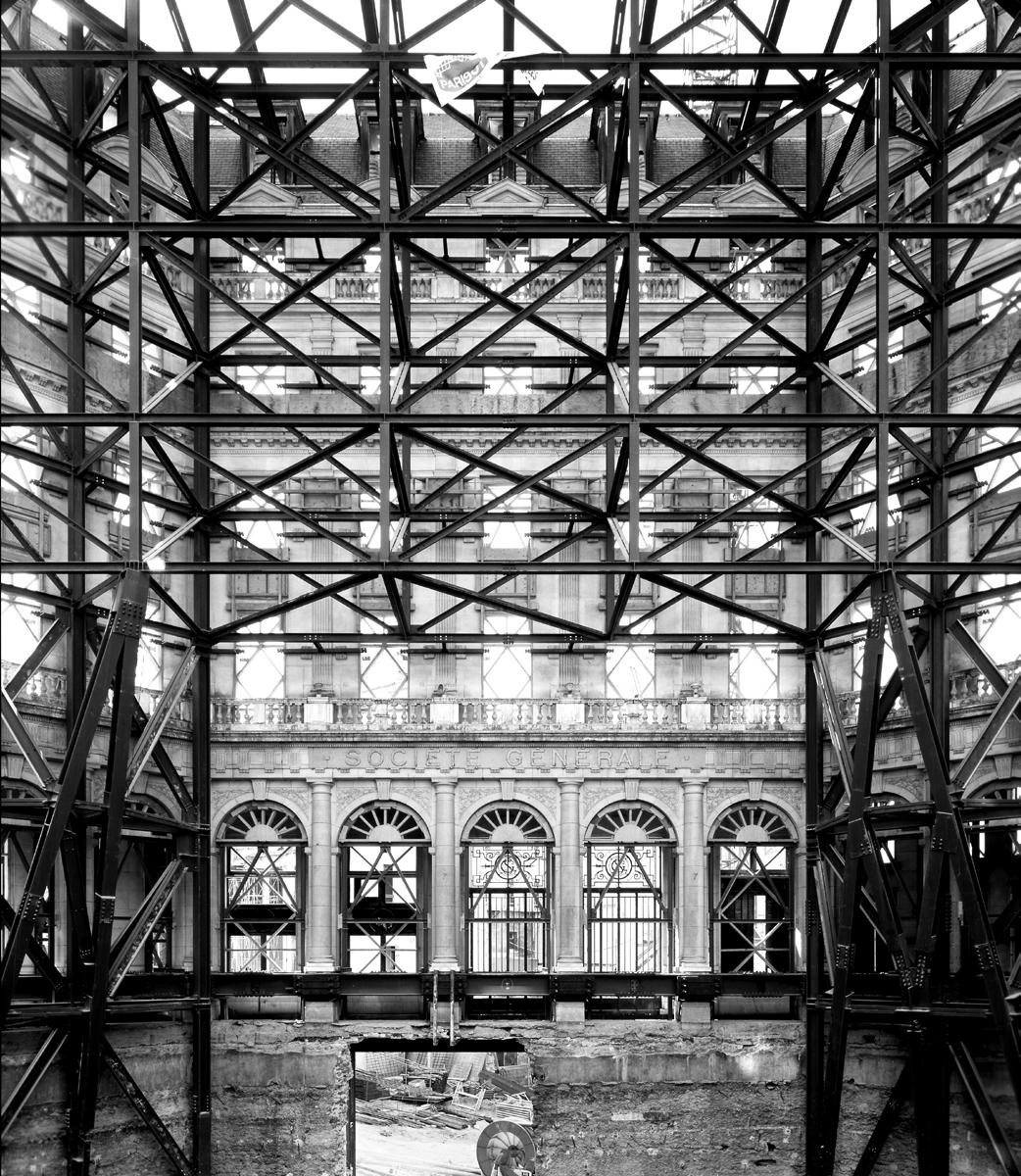
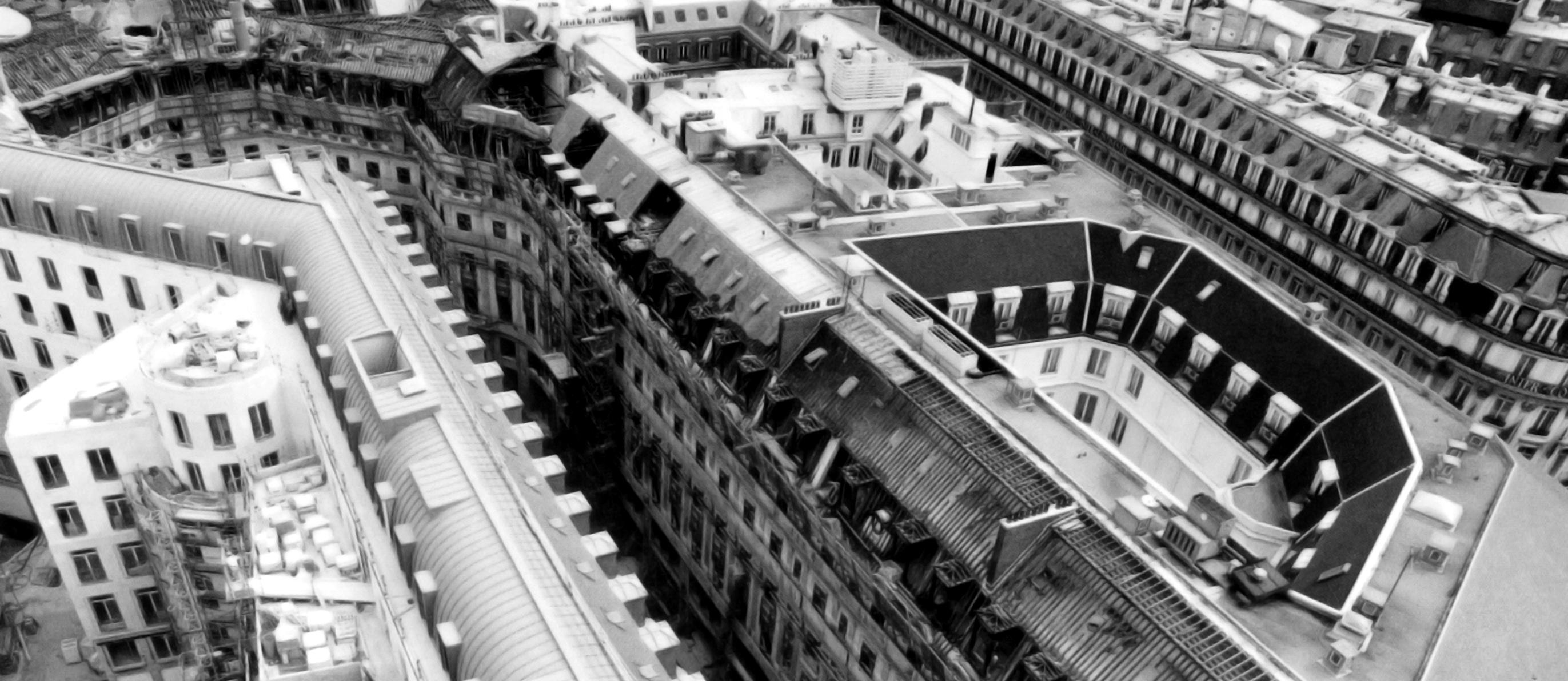
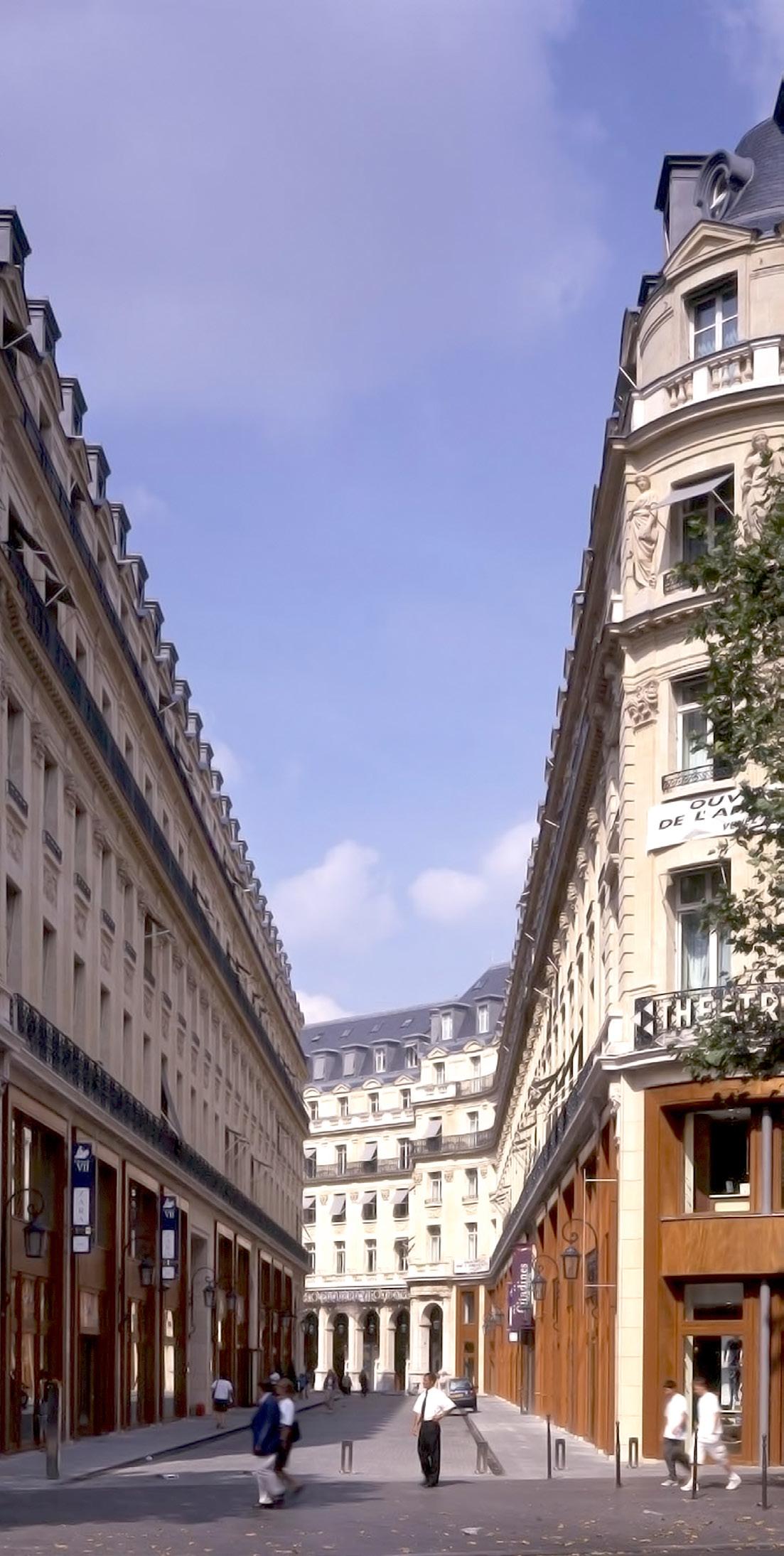
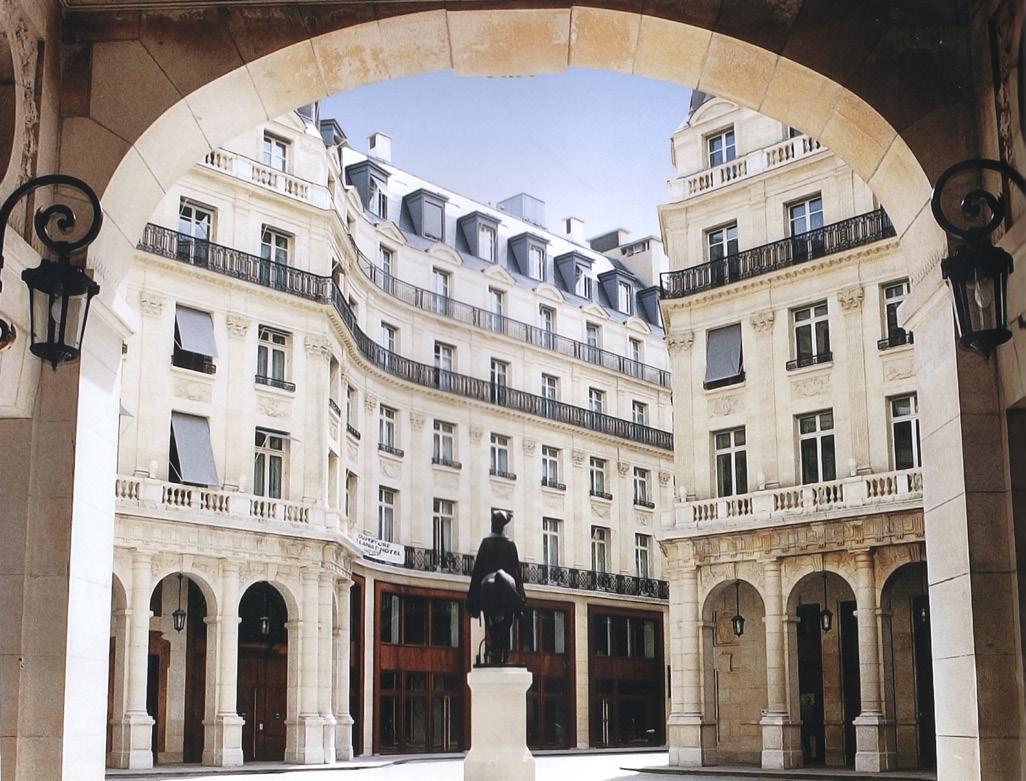
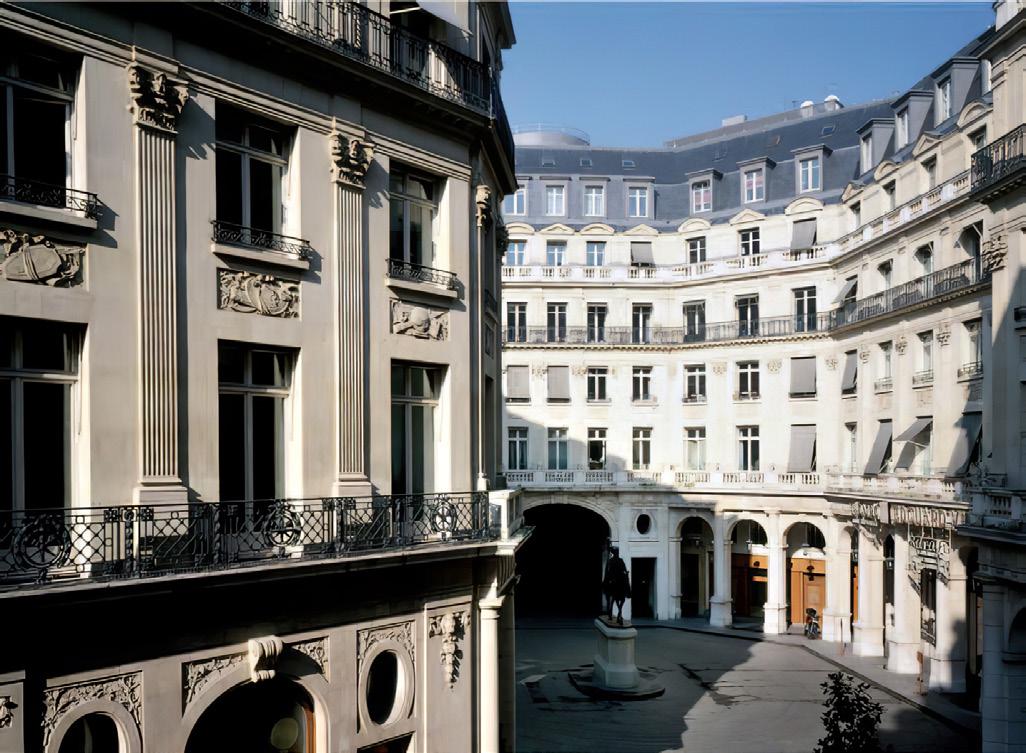

La reconstruction de l’Olympia ne constitue qu’une partie du projet global de réhabilitation de l’îlot Edouard VII
The reconstruction of the Olympia theater is only part of the overall rehabilitation project for the Edouard VII neighborhood

L’Olympia est un lieu mythique dont les murs sont chargés de mémoire. Assurer sa renaissance passait par beaucoup de respect et d’humilité. Aussi fallait-il offrir au lieu ce qui lui manquait, mettre à son service les techniques et les connaissances d’aujourd’hui, mais sans le défigurer ou encore moins le détruire. L’ Olympia est dans la mémoire collective: L’esprit qui l’avait vu naître et qui nous était familier, devait être conservé.
Toutes les innovations qui ont pu être faites, l’ont été avec le seul souci de mettre en valeur les courbes existantes.
The Olympia is a mythical place whose walls are loaded with history. Ensuring its rebirth required deep respect and humility. It was also necessary to install what it lacked in order to integrate modern technologies, but without disfiguring or even destroying it. The Olympia is rooted deep in the collective memory of France. The spirit which and soul of the building had to be preserved.
All the innovations that were introduced to the theater were made with the primary concern of enhancing the existing curves.


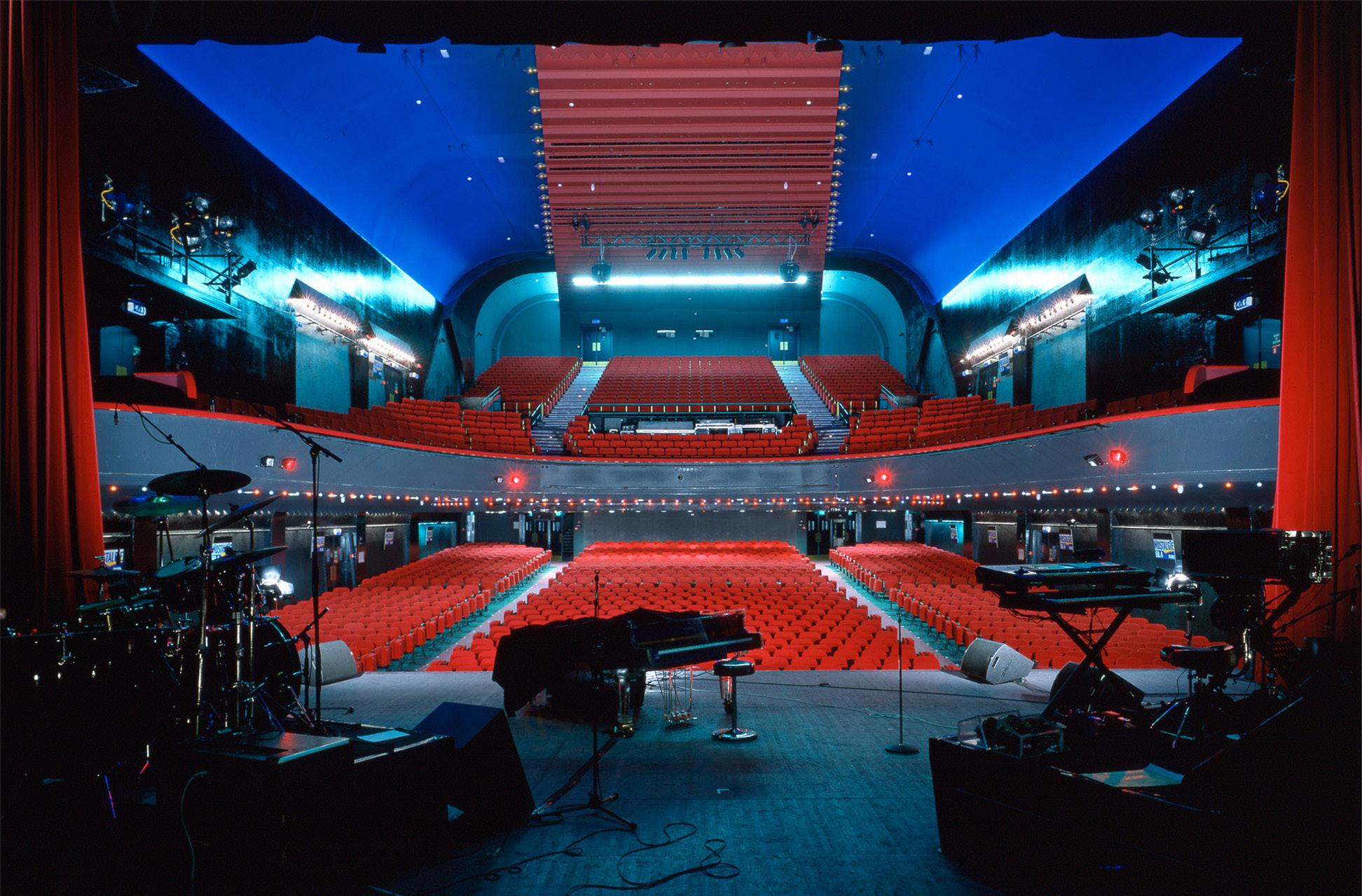
Client / Client : Sogeprom • Lieu / Location : Paris, France • Programme / Program : Reconstruction de l’Olympia / Reconstruction of the Olympia • Architectes / Architects : Bechu & Associés • Architecture d’intérieur / Interior Architecture : Volume ABC • Superficie / Surface Area : 6 500 m² + aire de livraison de 500 m² / 6,500 m² + delivery area of 500 m² • Statut / Status : Livré 2017 / Delivery in 2017
Flexibilité et intergration de la ville
Flexibility and integration of the city
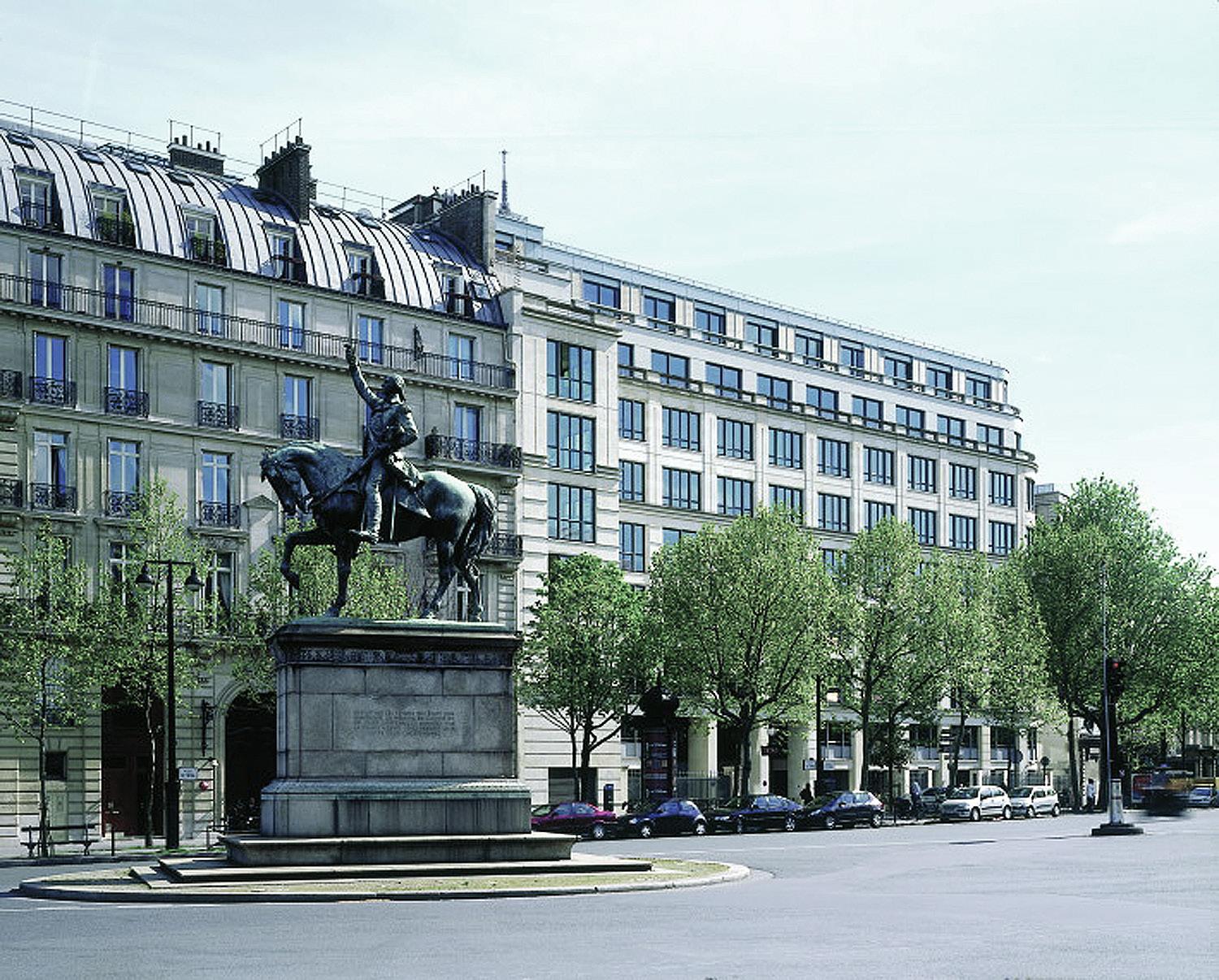
L’imposant ensemble immobilier opposait auparavantun accident aux deux panoramas urbains auxquelsappartenait chacune de ses deux façades : la placed’Iéna avec le Conseil économique et social des frèresPerret et la colline de Chaillot dominant la Seine.Côté ville, sa nouvelle modénature réussit à leréconcilier avec le gabarit haussmannien au traversd’un socle sur deux niveaux soutenant un corps de six étages dont les deux derniers en retrait –à parement de pierre grise pour celui du bas, àvolets d’aluminium en vêture pour celui du haut –réinterprètent subtilement les toitures en zincl’environnant. Côté fleuve, une rotule tout de verreparée sert de pivot panoramique entre ce premierbâtiment et son aile en retour. Les trumeaux de leursfaçades sont retraités en piliers s’élançant jusqu’auxcorniches de l’attique. Partiellement sérigraphiées,leurs grandes baies vitrées sont recoupées par ledessin des menuiseries métalliques extérieures en de très parisiennes ouvertures. La nouvelle ossatureen acier libère dorénavant ses plateaux de tout poteaupour leur conférer une réelle flexibilitéd’usage.Le nouveau siège social de AT Kearney réintègrela ville en s’ouvrant à la lumière et à l’avenir.
The original imposing property development was ablight on the two urban panoramas to which itsfaçades belonged, namely the place d’Iéna with thePerret Brother’s Conseil Economique et Social andthe Chaillot hill overlooking the Seine. On the town side, its new façade compositionreconciles the building with the Haussmannianoutline silhouette thanks to its two-levelled basesupporting a body of six floors, the top two of whichare set back – the lower one with grey stone facing,the top one clad with aluminium shutters – in asubtle reinterpretation of the surrounding zincroofing. On the river side, the entirely glass-frontedbuilding that forms a ball-joint serves as a panoramicpivot between this first building and its wing set atright-angles. The pier buttresses on their façadesresemble pillars soaring up to the top floor cornices. The design of the metal frames around the large,partially silk-screen printed bay windows turnsthem into typically Parisian openings. The new steelframework rids the floors of all their posts offeringthem a real degree of flexibilityin their usage. The new AT Kearney headquarters thus fitback intothe town whilst opening up to the light and the future.



Client / Client : VINCI Immobilier • Lieu / Location : 7, place d’Iena, 75016 PARIS • Programme / Program : Réhabilitation d’un immeuble de bureaux. / Rehabilitation of an office building • Architectes / Architects : Bechu & Associés • Superficie / Surface Area : 13 000 m² • Statut / Status : Livré 2001 / Delivery 2001
Renouer avec un patrimoine prestigieux
Reconnect with a site’s prestigious architectural heritage

Derrière la façade endommagée de l’hôtel du 18 place Vendôme s’étaient confusément développées dans letemps plusieurs constructions allant jusqu’à la placedu Marché Saint-Honoré. La parcelle nécessitait unerestructuration lourde que l’arrivée de la maison decouture Chanel rendait enfin possible.Grâce à la restitution de sa façade d’origine avec saporte cochère encadrée de deux boutiques, l’hôtelVendôme renoue avec le prestigieux patrimoinearchitectural des lieux. La réactivation de l’ancienparcellaire redessine naturellement deux cours depart et d’autre du bâtiment central entièrementreconstruit et assurant la transition avec l’immeubleexistant en fond de parcelle. Traitées en pierre dansun esprit contemporain inspiré du classique, leursfaçades – intérieures et côté Marché Saint-Honoré –entretiennent un aimable dialogueavec l’histoireenvironnante. Dès lors, une rue intérieure bordée de vitrines dessertavec convivialité les différents métiers du couturier(école de maquillage, musée…), les entrées desimmeubles de bureaux et le restaurant d’entreprisespartagé.
Several constructions haphazardly emerged over the years behind the degraded façade of the 18 placeVendôme mansion all the way along to the place du Marché Saint-Honoré. The plot required majorrestructuring works, which at last became possiblewhen the Chanel fashion house took over the building.The original façade’s restoration with its portecochere flanked by two shops reconnects theVendôme town house with the site’s prestigiousarchitectural heritage. By reactivating the originalsite plan, two courtyards have been naturallycreated on either side of the entirely reconstructedcentral building, thereby ensuring a smooth transitionwith the existing building at the back of the plot. Done in a classically-inspired contemporary spirit,their interior stone façades and those along theMarché Saint-Honoré create a convivial dialoguewith the surrounding history. An interior window-lined street now convivially leads to the couturier’sdifferent enterprises (cosmetics school, museum,etc.), the entrances to the office buildings, and thestaff restaurant.

Client / Client : Chanel • Lieu / Location : 18 place Vendôme, 25 place du Marché Saint-Honoré 75001 PARIS • Programme / Program : Réhabilitation d’un immeuble / Rehabilitation of a building • Architectes / Architects : Bechu & Associés • Superficie / Surface Area : 6 350 m² • Statut / Status : Livré 1997 / Delivery 1997
de 4 opérations d’envergure au coeur de Paris dans le quartier de l’Europe près de la gare Saint-Lazare
Set of 4 large-scale operations in the heart of Paris in the Europe district near Saint-Lazare station
Sur une ancienne zone marécageuse asséchée, les Porcherons firent ériger en 1310 une forteresse entre ce qui deviendra bien plus tard les 75 et 91 rue de Londres. La famille Lecoq, anoblie en 1363,y développe autour un fief sur lequel elle règne jusqu’à la Révolution. Dès 1804, l’endroit donne naissance, sous l’impulsion d’Haguerman et Mignon, au quartier de l’Europe où sont percées des artères aux noms de villes européennes, telles en 1826 les rues de Londres ou de Tivoli (rebaptisée d’Athènes en 1881). À partir de l’inauguration en 1843 de l’actuelle gare Saint-Lazare, les sociétés ferroviaires remplacent progressivement les établissements de bains et le jardin de Tivoli.
En 1866, la Compagnie des Chemins de Fer de Paris à Lyon et à la Méditerranée bâtit sur un hectare son siège social dont le monumental porche du 88 rue Saint-Lazare, flanqué de deux immeubles de rapport, cadre la composition symétrique de la cour d’honneur. Séduit par la pertinente et noble hiérarchie du bâti originel, l’architecte restitue l’ensemble dans son intégrité en le débarrassant des constructions parasites et en reconstruisant à l’identique l’aile est côté jardin sous laquelle il glisse un auditorium. Occupant la moitié de la parcelle, l’espace vert est recomposé en terrasses dans l’esprit de Tivoli pour révéler avec raffinement sa déclivité nord/sud. D’un côté, la salle du conseil et les salons de la présidence retrouvent leur faste d’antan et les décorations disparues sont rétablies ici et là. De l’autre, tous les bâtiments sont remis aux normes autour d’un jardin régulant les dénivelés suivant un tracé géométrique rigoureux.
Tout en respectant la forte identité culturelle des lieux, le projet lauréat d’Anthony Bechu les adapte à leur destination à venir en en faisant un outil performant au service de l’entreprise d’aujourd’hui. Réaxée par rapport à la splendide cour d’honneur vue en transparence au travers des triples arcades du hall d’accueil au rez-dechaussée, la cour intérieure est latéralement délimitée par deux corps symétriques dont la moderne arcature sur deux niveaux supporte l’ancienne façade restituée.
On a former drained marshy area, the Porcherons erected a fortress in 1310 between what would later become 75 and 91 rue de Londres. The Lecoq family, ennobled in 1363, developed a stronghold around it over which they reigned until the Revolution. From 1804, the place gave birth, under the impulse of Haguerman and Mignon, to the district of Europe where arteries were pierced with the names of European cities, such as in 1826 the streets of London or Tivoli (renamed from Athens in 1881). From the inauguration in 1843 of the current Gare Saint-Lazare, the railway companies gradually replaced the bathing establishments and the Tivoli garden.
In 1866, the Compagnie des Chemins de Fer de Paris à Lyon et à la Méditerranée built its head office on one hectare, whose monumental porch at 88 rue Saint-Lazare, flanked by two apartment buildings, frames the symmetrical composition of the courtyard. ‘honor. Seduced by the relevant and noble hierarchy of the original building, the architect restores the whole in its integrity by ridding it of the parasitic constructions and by reconstructing identically the east wing on the garden side under which he slides an auditorium. Occupying half of the plot, the green space is recomposed in terraces in the spirit of Tivoli to reveal with refinement its north/south slope. On one side, the council chamber and the presidential lounges have regained their former splendor and the missing decorations have been restored here and there. On the other hand, all the buildings have been brought up to standard around a garden regulating the unevenness following a rigorous geometric layout.
While respecting the strong cultural identity of the places, Anthony Bechu’s winning project adapts them to their future destination by making them a powerful tool at the service of today’s business. Reoriented in relation to the splendid main courtyard seen transparently through the triple arcades of the reception hall on the ground floor, the interior courtyard is laterally delimited by two symmetrical bodies whose modern arcature on two levels supports the old facade restored.
Leurs salles de réunions et conférences donnent sur trois jardins thématiques enchâssés dans un pourtour en teck donnant à ce parterre central des allures de béguinage contemporain. Le haut soubassement à bossage de pierre du 15 bis rue de Clichy a été ouvert suivant la modénature de la partie supérieure afin d’éclairer les bureaux. Au 3 rue d’Athènes, le gommage de la façade ayant révélé un inattendu décor à la manière vénitienne, sa marqueterie de marbre, ses feuilles d’acanthe, ses masques de faunes et mufles de lion ont méticuleusement été restaurés.
Des cinq hôtels particuliers bâtis entre 1826 et 1831à l’emplacement des actuels 16, 16 bis et 18 rue de Londres et 7 et 5 rue d’Athènes, seul subsiste le corps de bâtiment principal de ce dernier maladroitement surélevé en 1950. Ceux de la rue de Londres ont été reconstruits respectivement en 1880, 1898 et 1926dont le premier pour le Crédit de France est un intéressant exemple d’architecture bancaire de la fin du XIXe siècle. De cessions en rachats successifs, les parcelles furent réunies et l’existant rehaussé tandis que cours et jardins disparurent au profit d’un bâtiment de sept étages en cœur d’îlot. Dorénavant propriété de Generali, l’ensemble nécessitait une reprise complète visant à valoriser l’héritage architectural le méritant et à recoudre les styles et les échelles quitte à démolir l’irréparable pour mieux reconstruire.
Le 5 rue d’Athènes retrouve sa morphologie d’origine et, à l’arrière, une terrasse sur un parterre planté. Son salon d’apparat est restauré, tout comme la salle du conseil et l’escalier d’honneur en stuc du 16 rue de Londres dont le magnifique hall se voit prolongé côté jardin par un restaurant et des espaces de réunion qui rejoignent la surprenante galerie (1930) du numéro 18 dont la couverture en pavés de verre est entièrement rénovée. Complètement redistribué, le 7 rue d’Athènes développe – par une cour bordée d’une passerelle harmonisant les niveaux – un bâtiment de jonction en métal et verre qu’une terrasse vient couronner. Une rotonde– concentrant les circulations verticales – l’articule au reste des constructions qu’elle unifie tout en les dynamisant.
Their meeting and conference rooms overlook three thematic gardens set in a teak perimeter giving this central parterre the appearance of a contemporary beguinage. The high stone base of 15 bis rue de Clichy was opened following the molding of the upper part in order to light the offices. At 3 rue d’Athènes, the scrubbing of the facade having revealed an unexpected Venetian-style decor, its marble marquetry, its acanthus leaves, its masks of fauns and lion’s muzzles have been meticulously restored.
Of the five mansions built between 1826 and 1831 on the site of the current 16, 16 bis and 18 rue de Londres and 7 and 5 rue d’Athènes, only the main building of the latter remains, awkwardly raised in 1950. Those of the rue de Londres were rebuilt in 1880, 1898 and 1926 respectively, the first of which for Crédit de France is an interesting example of banking architecture from the end of the 19th century. From disposals to successive buyouts, the plots were brought together and the existing one enhanced, while courtyards and gardens disappeared in favor of a seven-storey building at the heart of the block. Now the property of Generali, the whole required a complete recovery aimed at enhancing the architectural heritage deserving it and at stitching up the styles and scales even if it meant demolishing the irreparable in order to rebuild better.
5 rue d’Athènes has regained its original morphology and, at the back, a terrace on a planted bed. Its ceremonial salon has been restored, as has the council room and the stucco main staircase at 16 rue de Londres, whose magnificent hall is extended on the garden side by a restaurant and meeting spaces that join the surprising gallery (1930) of number 18 whose glass block roofing has been completely renovated. Completely redistributed, 7 rue d’Athènes develops – through a courtyard bordered by a footbridge harmonizing the levels – a connecting building in metal and glass crowned by a terrace. A rotunda – concentrating the vertical circulations – articulates it with the rest of the constructions which it unifies while energizing them.
Client / Client : Generali, Financière Rive Gauche Scor Auber et Unimo • Lieu / Location : Paris, France • Programme / Program : Ensemble de 4 opérations d’envergure au cœur de Paris / Set of 4 large-scale operations in the heart of Paris • Architectes / Architects : Bechu & Associés • Superficie / Surface Area : 81 000 m² • Statut / Status : Livré en 2014 / Delivered in 2014
Troisième partie d’un ensemble de 4 opérations d’envergure au coeur de Paris dans le quartier de l’Europe près de la gare Saint-Lazare. Third part of a set of 4 large-scale operations in the heart of Paris in the Europe district near the Saint-Lazare station.
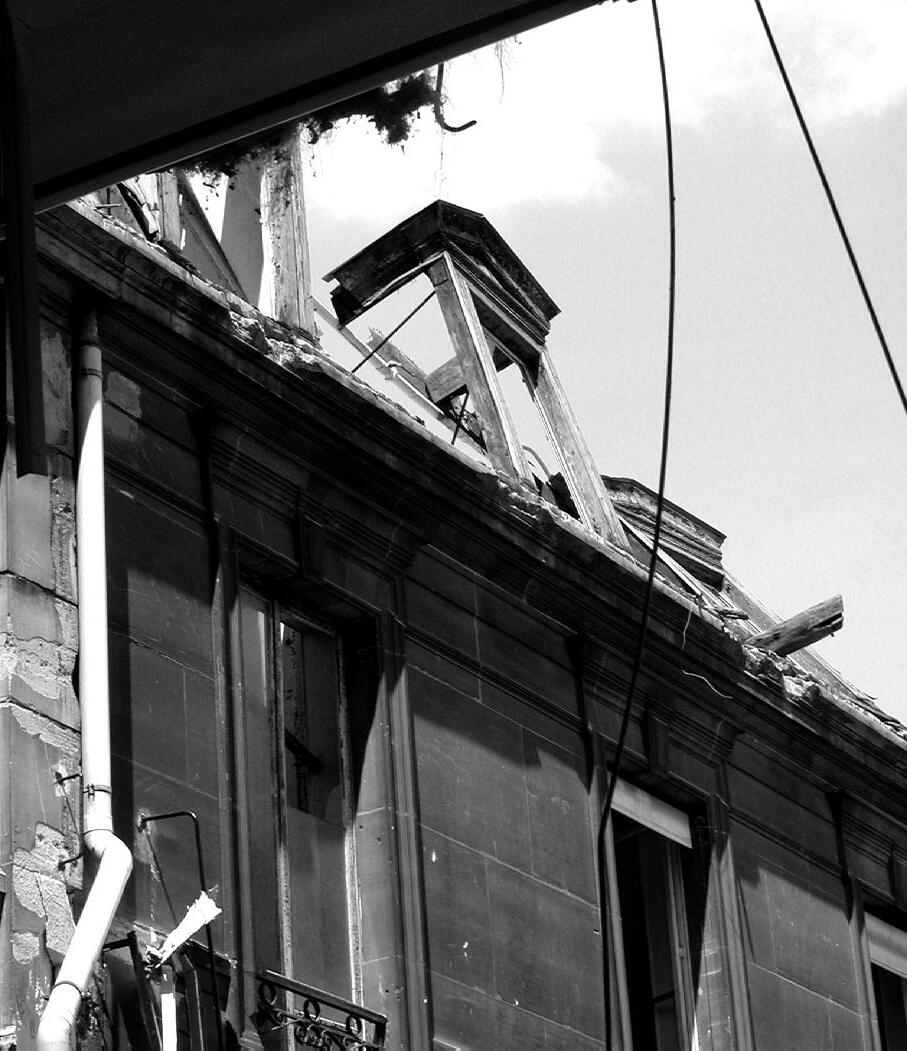

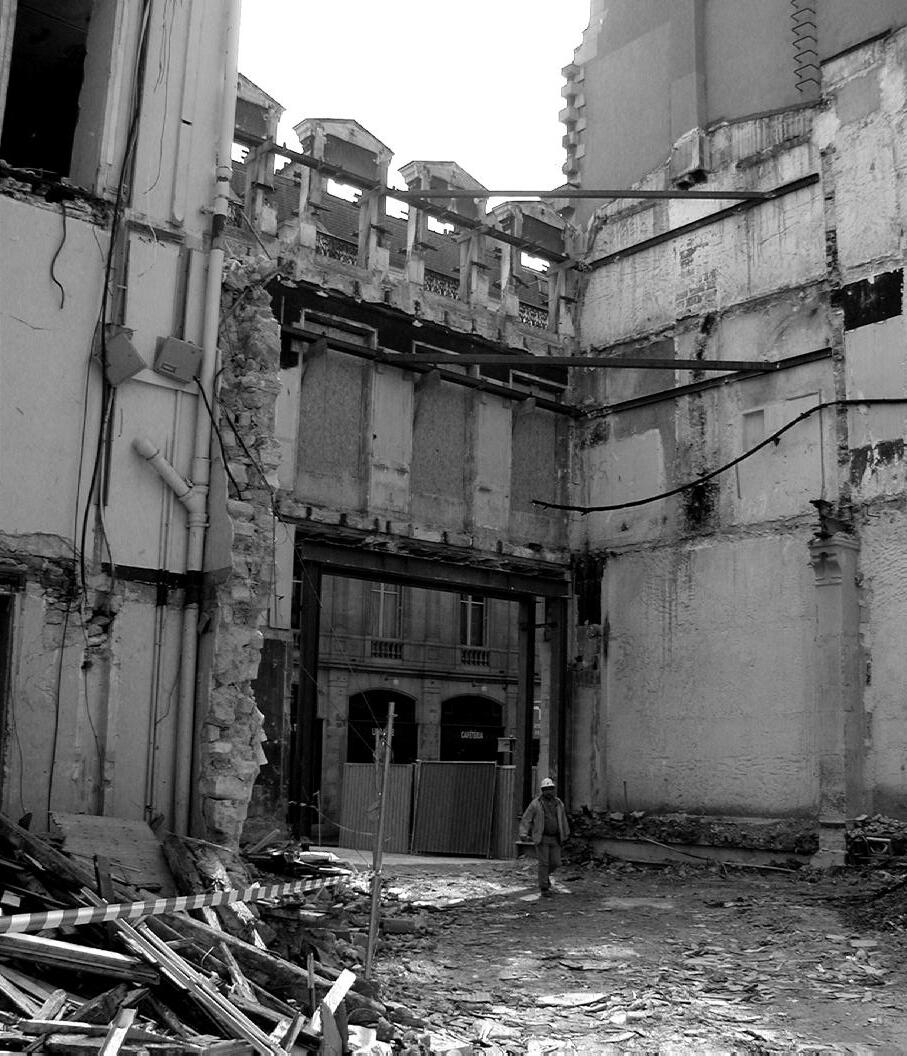

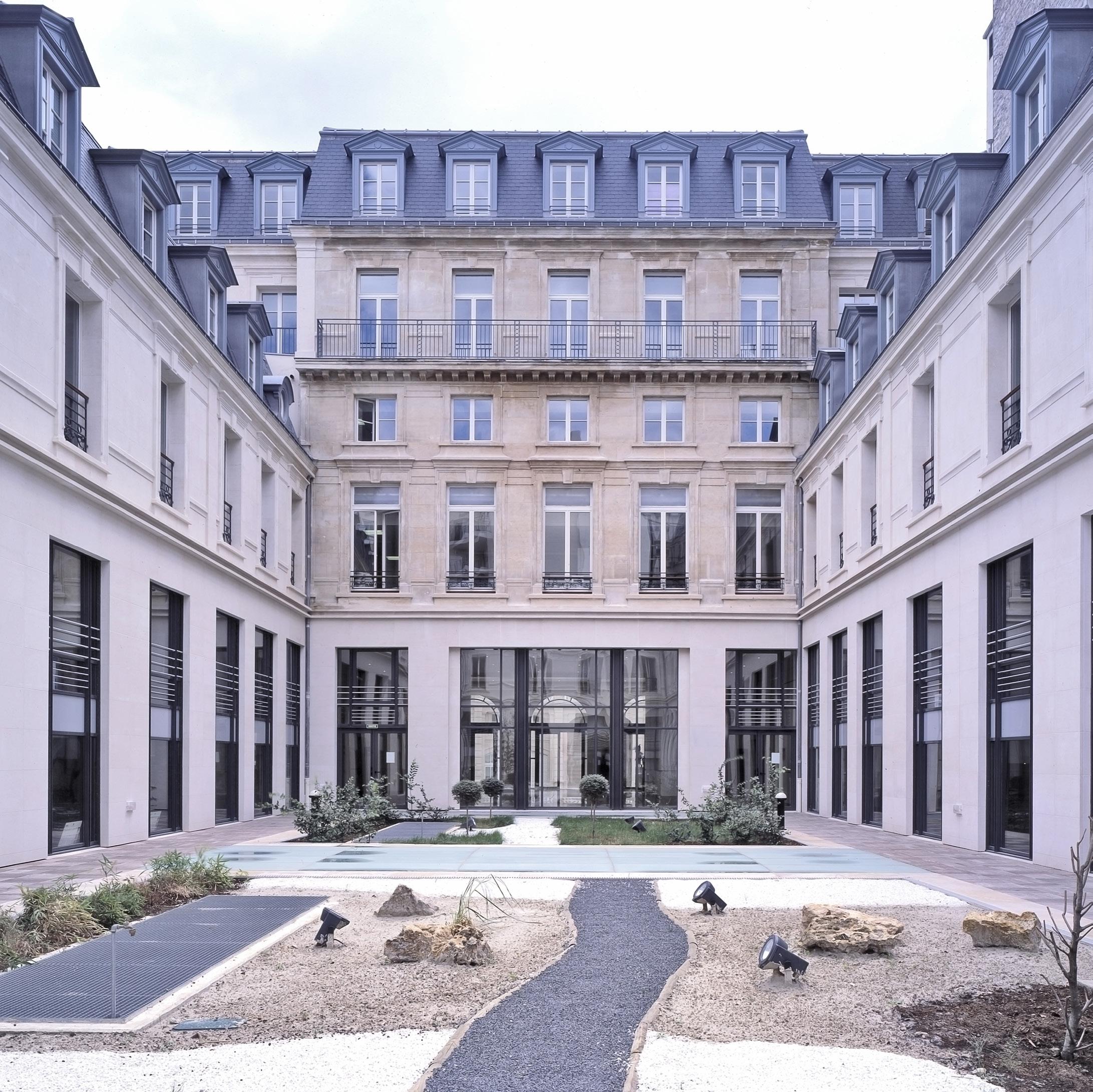
Client / Client : Financière Rive Gauche • Lieu / Location : rue de Londres et rue d’Athènes Paris 9°, France • Programme/ Program : Réhabilitation d’un immeuble de bureaux,commerces et logements / Rehabilitation of an office building, shops and housing • Architectes / Architects : Bechu & Associés • Superficie / Surface Area : 14 200 m² • Statut / Status : Livré en 2003 / Delivered in 2003
Quatrième partie d’un ensemble de 4 opérations d’envergure au coeur de Paris dans le quartier de l’Europe près de la gare Saint-Lazare. Fourth part of a set of 4 large-scale operations in the heart of Paris in the Europe district near the Saint-Lazare station.


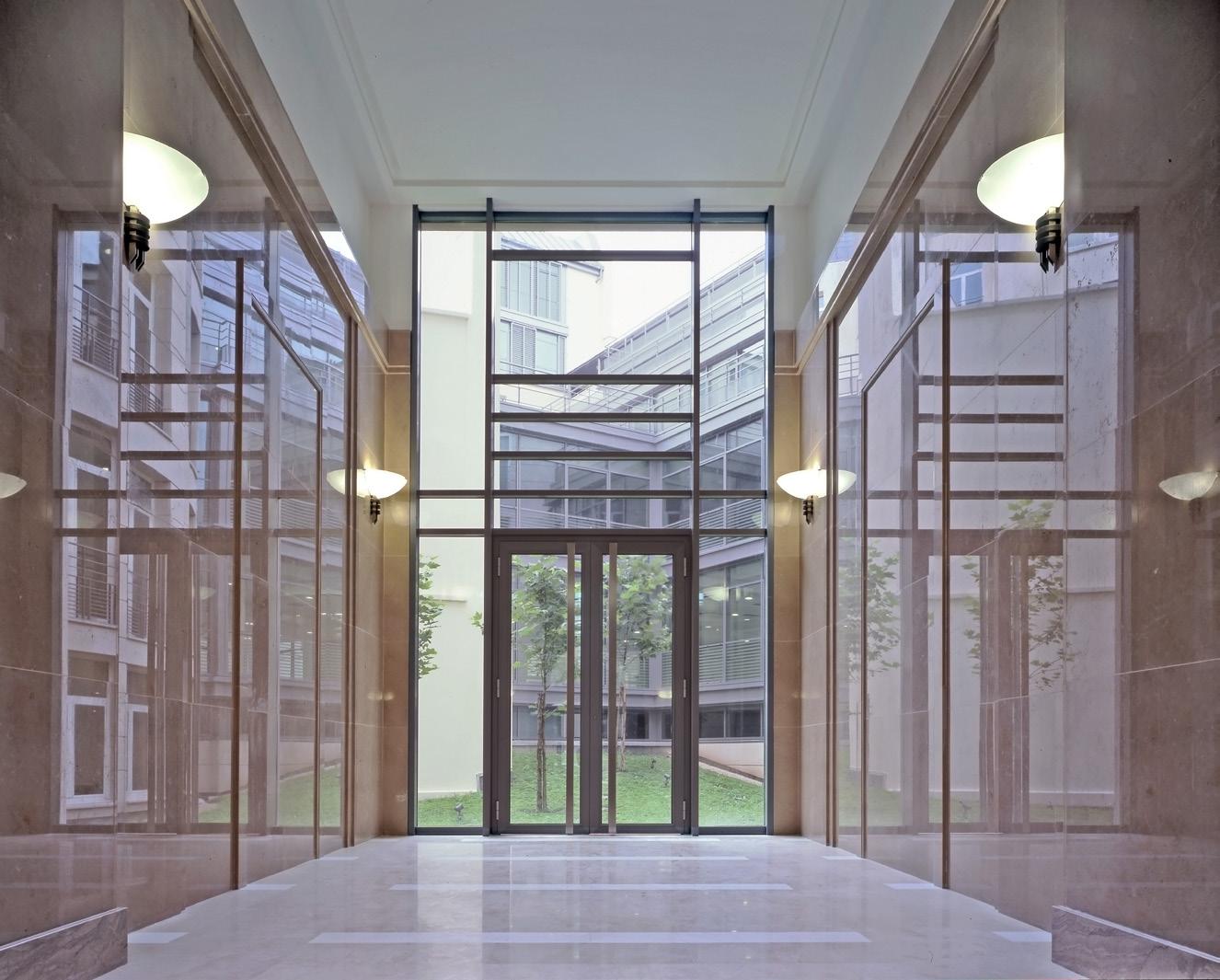

Client / Client : Générali Immobilier • Lieu / Location : Paris, France • Programme / Program : Réhabilitation d’un immeuble de bureaux/ Rehabilitation of an office building • Architectes / Architects : Bechu & Associés • Superficie / Surface Area : 17 615 m² • Statut / Status : Livré en 2004 / Delivered in 2004
Première partie d’un ensemble de 4 opérations d’envergure au coeur de Paris dans le quartier de l’Europe près de la gare Saint-Lazare
First part of a set of 4 large-scale operations in the heart of Paris in the Europe district near Saint-Lazare station
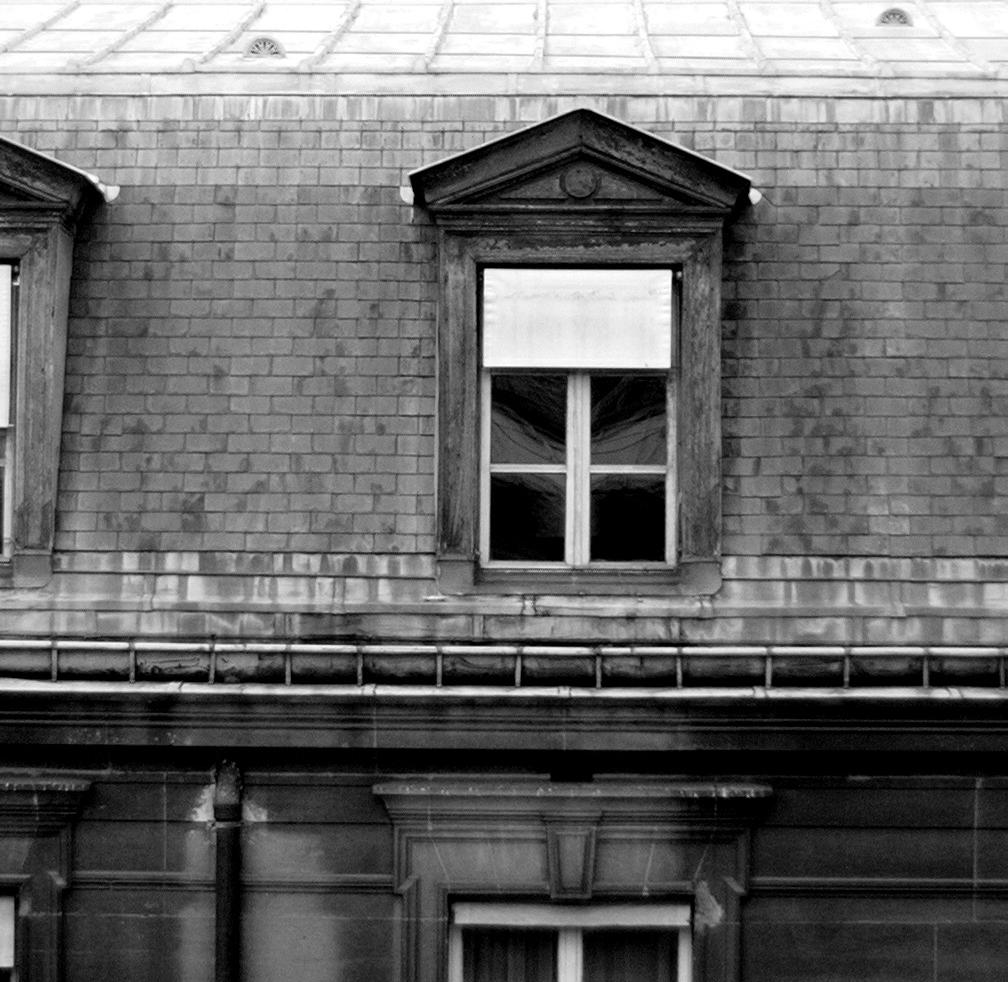

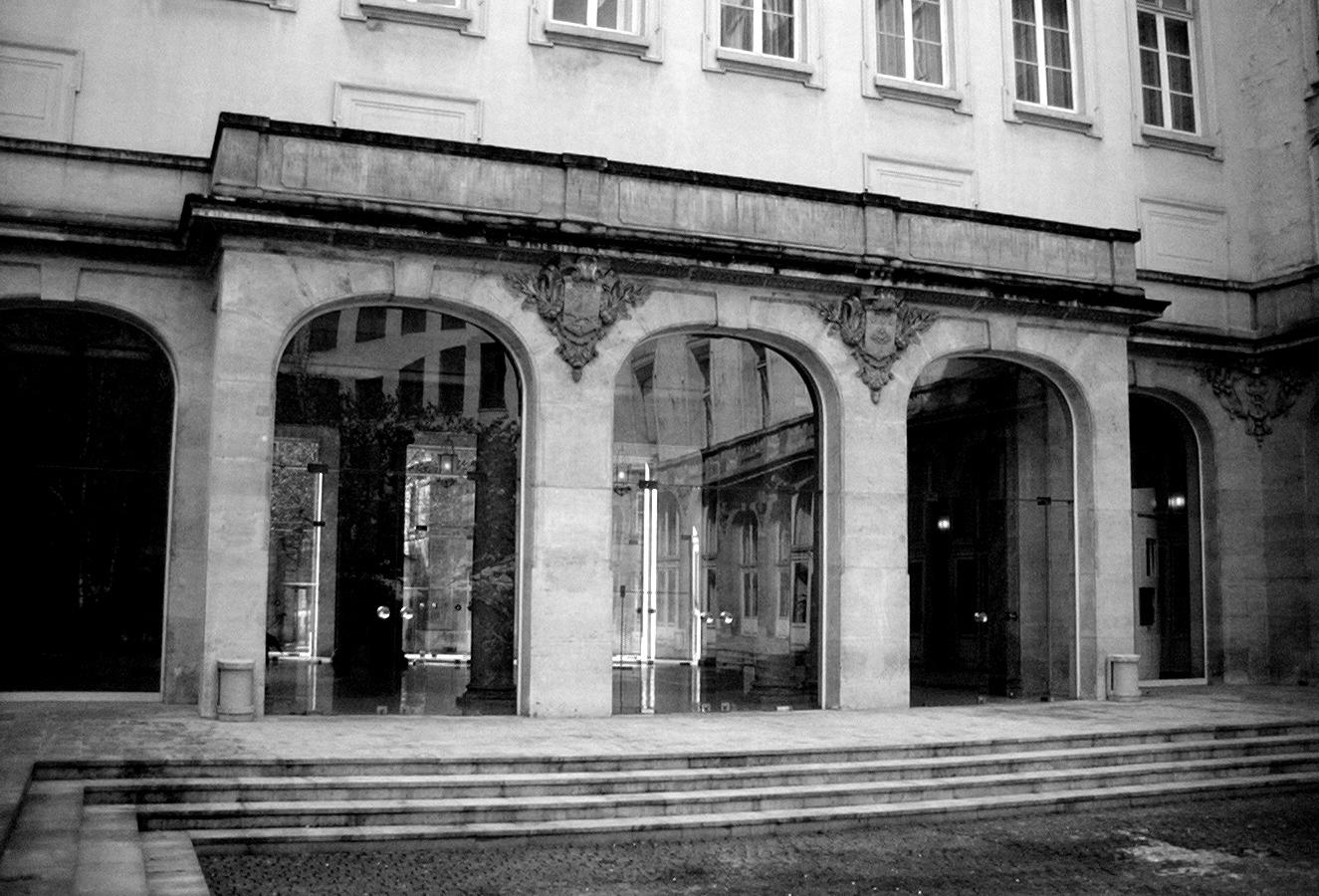


Client / Client : Unimo • Lieu / Location : rue de Londres et rue Saint-Lazare Paris 9° • Programme / Program : Réhabilitation d’un immeuble de bureaux et commerces / Rehabilitation of an office and retail building • Architectes / Architects : Bechu & Associés • Superficie / Surface Area : 27 400 m² • Statut / Status : Livré 2003 / Delivered 2003
Redonner vie à un bâtiment historique en lui offrant la performance HQE Reviving a historic building that is Bergère, The Former Headquarter of BNP Bank by offering HQE performance

L’ancien siège du Comptoir National d’Escompte de Paris, conçu à l’origine par l’architecte Edouard-Jules Corroyer à la fin du 19ème siècle, est bâtiment classé des monuments historiques pour lequel la priorité première a été de faire des travaux dans le respect du spirituel, du culturel et de l’historique patrimonial de l’édifice.
L’architecture contemporaine du projet revisite le style haussmannien parisien établi par Corroyer, et propose une nouvelle conception de «pierre et d’acier» pour l’adapter aux nouveaux modes de vie contemporains.
Le design intérieur a été complètement repensé pour optimiser le volume, l’espace, et la circulation, et pour offrir le maximum de lumière naturelle. Ce projet est le premier bâtiment rénové à Paris à avoir obtenir la certification HQE.
The former Comptoir National d’Escompte de Paris headquarters, originally designed by the architect Edouard-Jules Corroyer in the end of the 19th century, is an acknowledge registered Historic Monuments for which the refurbishement’s top priority was the respect of the spiritual, cultural and historical heritage of the building.
The project’s contemporary architecture revisites the parisian Haussmannian style drawn up by Corroyer and proposes a new design of « stone and steel » to adapt it to new contemporary life styles.
The interior design was completely rethought in order to optimize the volumes, space, and circulation to offer the most natural light. The project is the first refurbished building in Paris to have obtain the HQE certification.


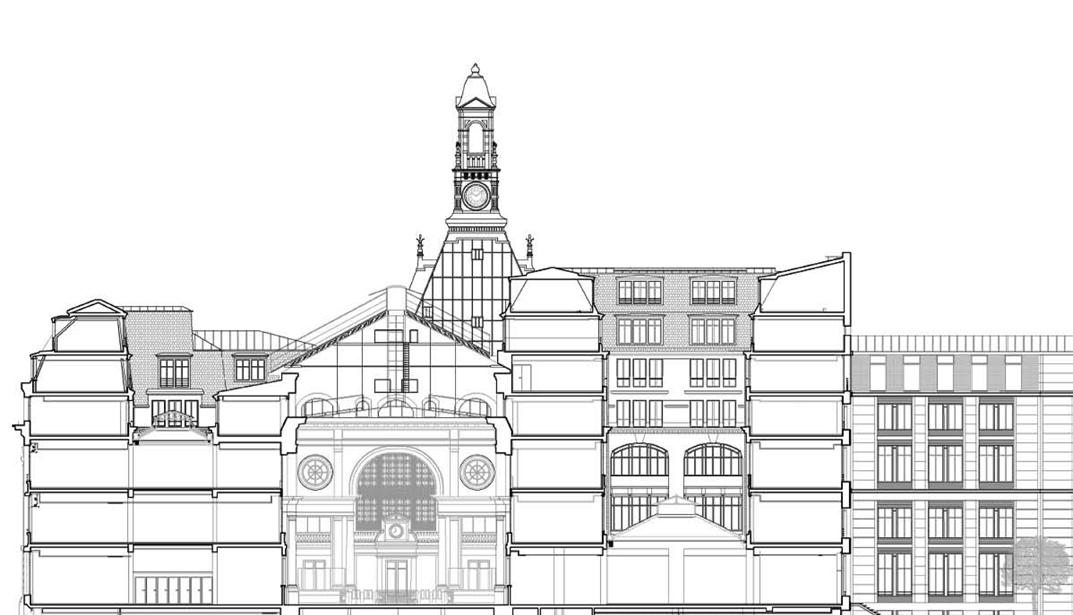

Client / Client : BNP Paribas • Lieu / Location : Paris, France • Programme/ Program: Restructuration d’un immeuble de bureaux Classé MH / Restructuring of an office building Classified MH • Architectes / Architects : Bechu & Associés • Architecture d’intérieur / Interior architecture : Volume ABC • Superficie / Surface Area : 33 800m² • Statut / Status : Livré en 2009 / Delivered in 2009 >> Developpement durable / Sustainable development : Classé MH, demarche HQE/ HQE approach, classified historical monument
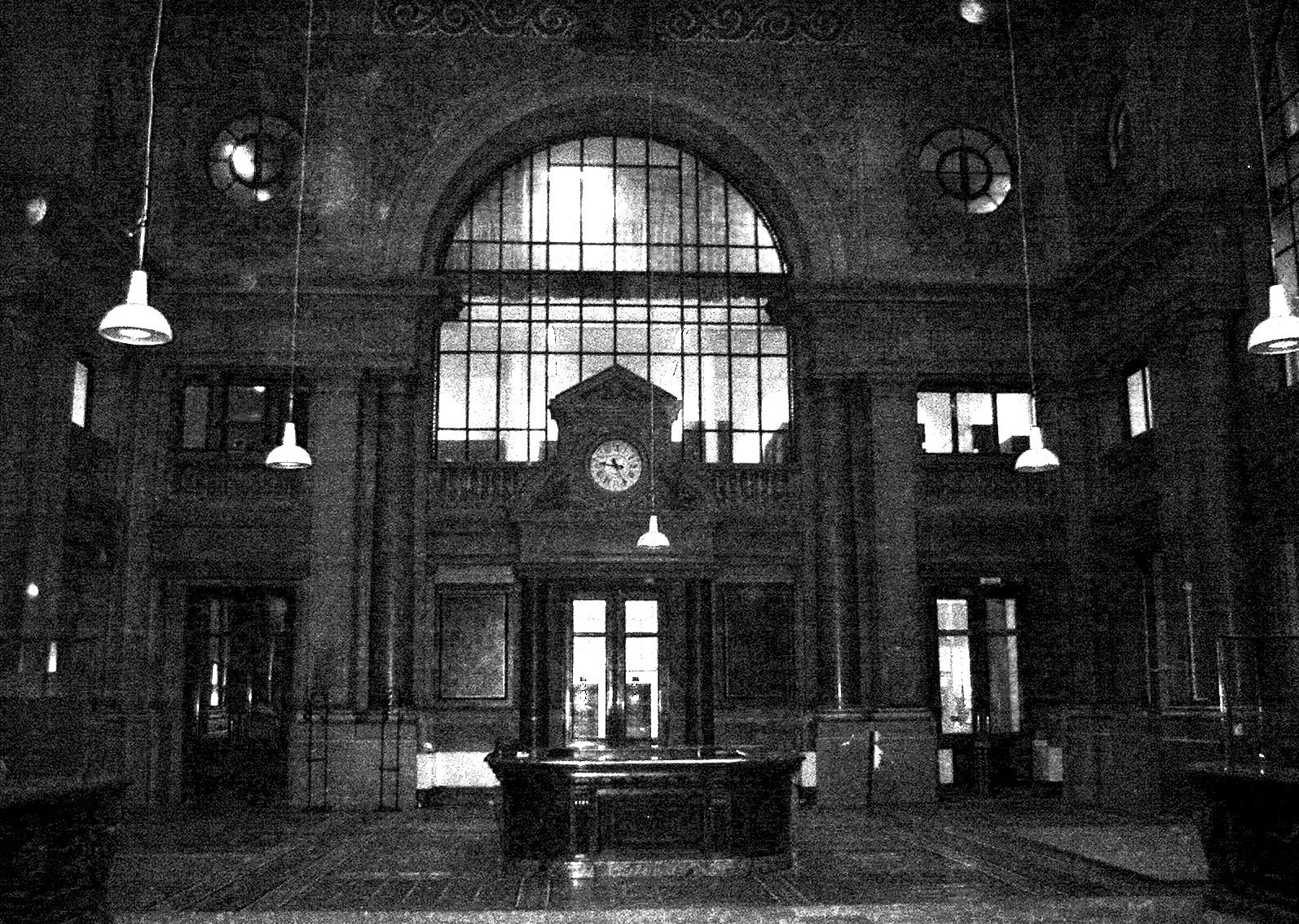
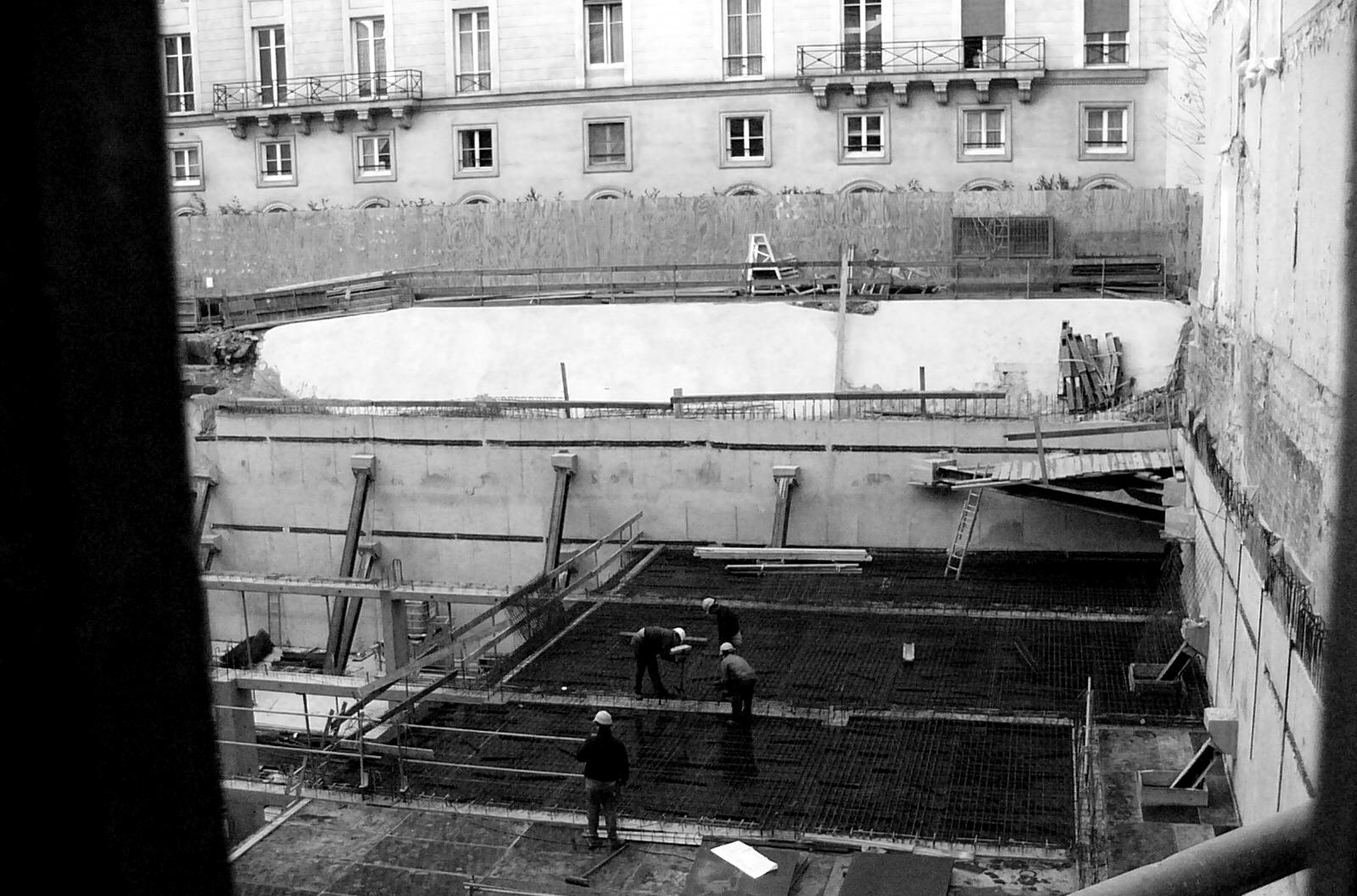
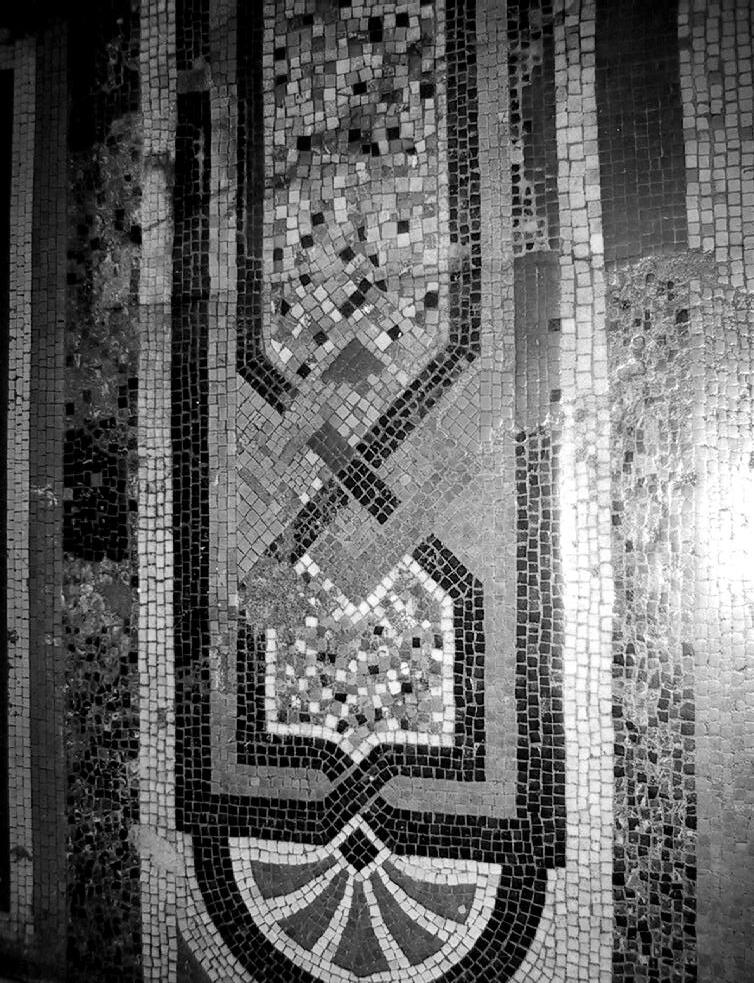
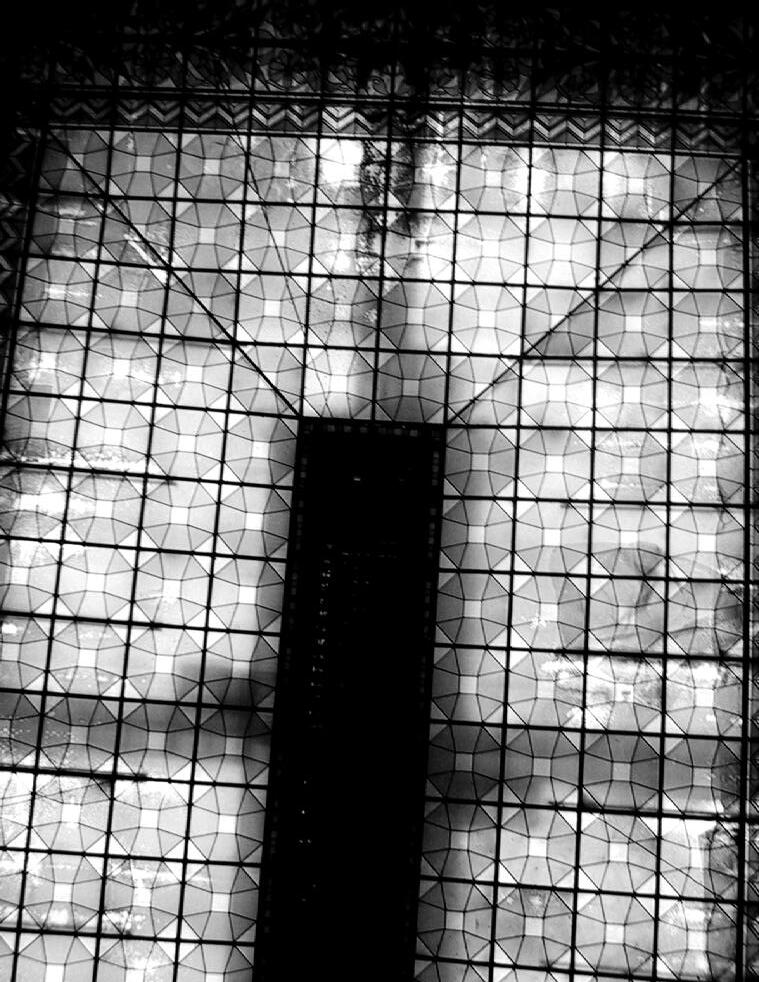


Restructuration de l’Ilot Vendôme-Cambon-Capucines
Restructuring of the Ilot Vendôme-Cambon-Capucines
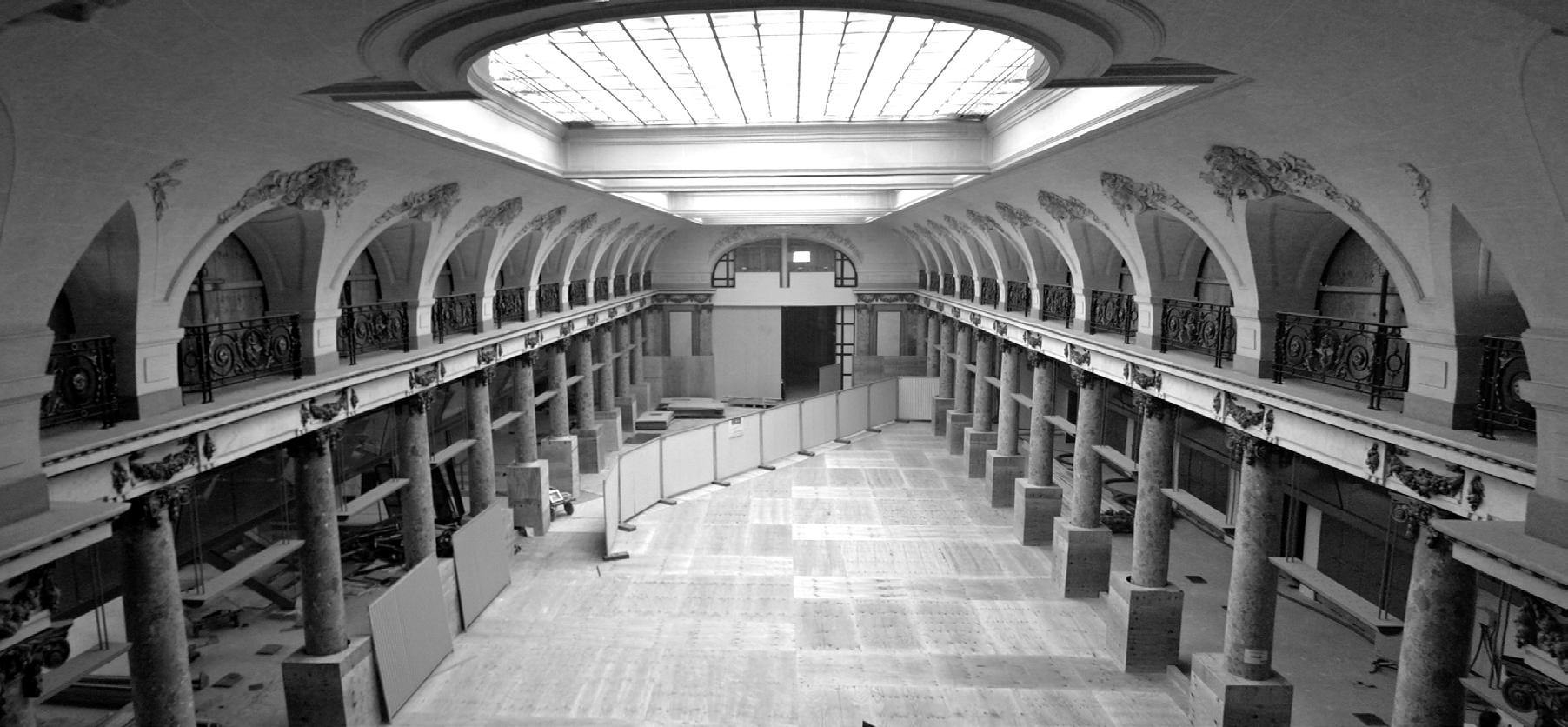

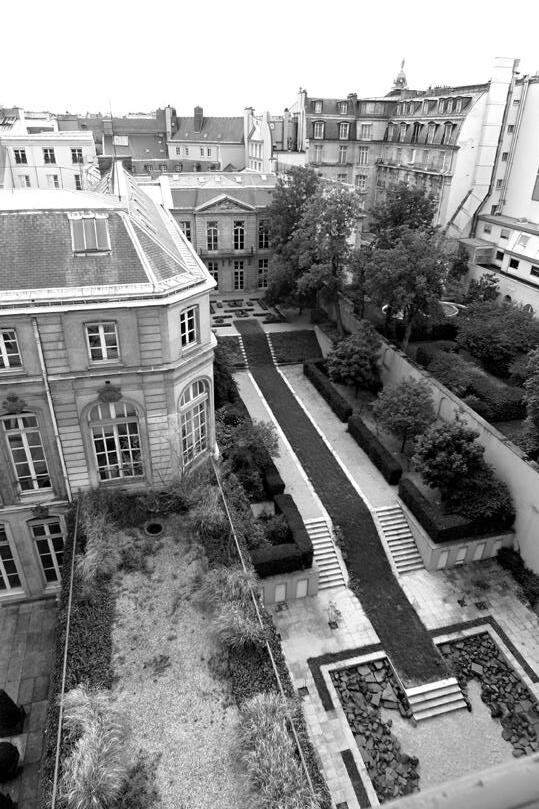
Cette restructuration comprend l’Hôtel d’Evreux, l’Hôtel des Vieux & l’Hôtel Castanier sur l’Ilôt Vendôme Cambon Capucines.
Les compétences de nos équipes en matière de réhabilitation de lieux historiques et de leur transformation intérieure au service de l’expérience humaine d’aujourd’hui, nous ont permis de mener à bien ce projet; témoin du XVIIIème siècle, a été inauguré en 2015 et continue depuis à écrire son histoire.
This restructuring includes the Hôtel d’Evreux, the Hôtel des Vieux & the Hôtel Castanier on Ilôt Vendôme Cambon Capucines.
The skills of our teams in the rehabilitation of historic places and their interior transformation in the service of the human experience of today, enabled us to carry out this project; witness of the 18th century, was inaugurated in 2015 and has since continued to write its history.
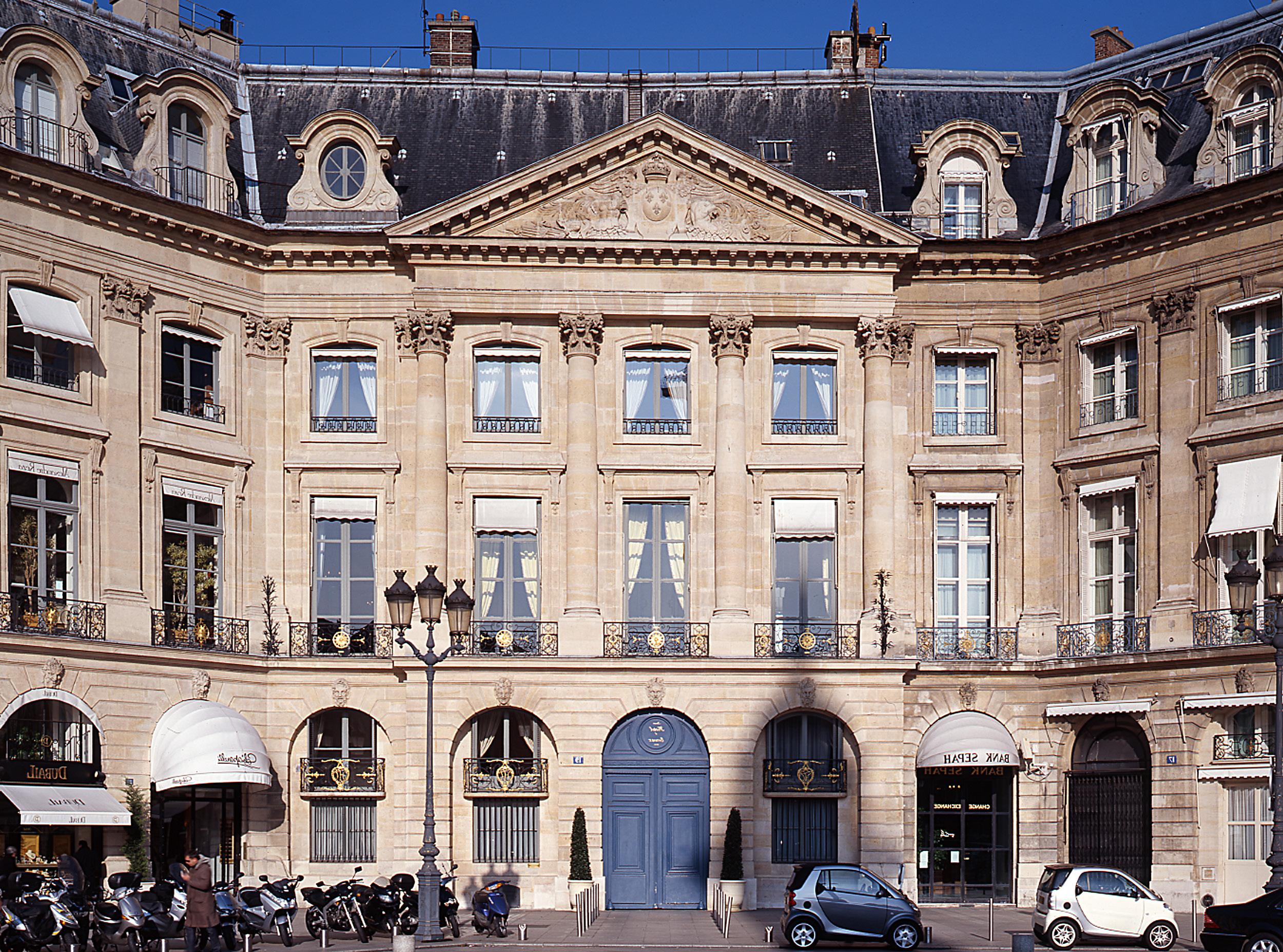
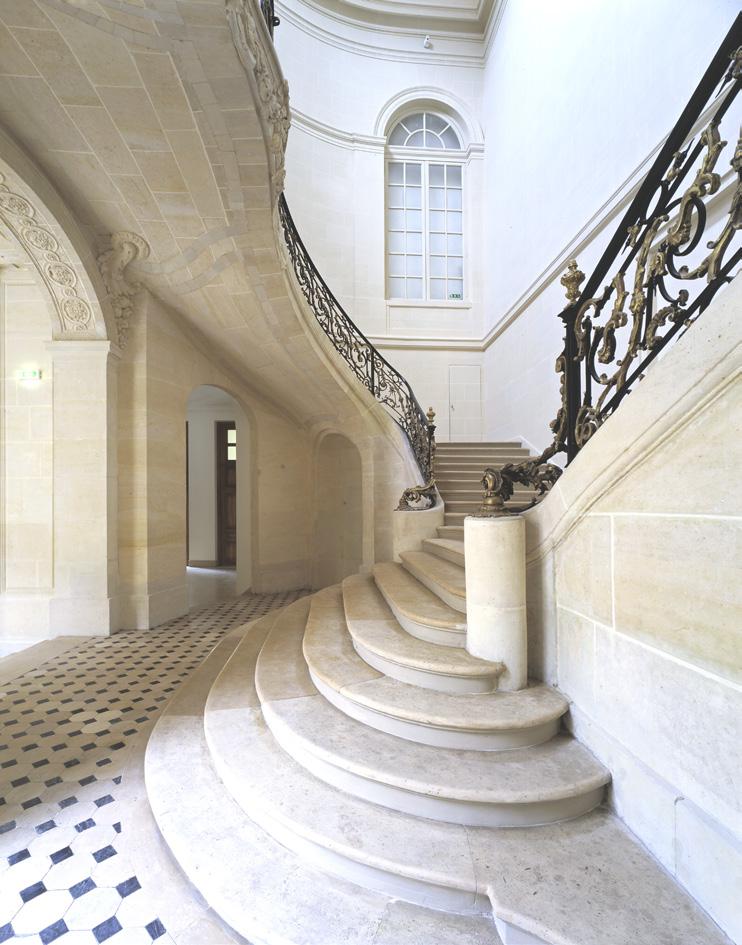

Client / Client : Galaxie Vendôme • Lieu / Location : Paris, France • Programme/ Program : Restructuration du bâtiment Cambon, de l’Hôtel d’Evreux inscrit MH, de l’Hôtel des Vieux & de l’Hôtel Castanier inscrit MH / Restructuring of the Hôtel d’Evreux registered MH, the Hôtel des Vieux & the Hôtel Castanier • Architectes / Architects : Bechu & Associés • Superficie / Surface Area : 60.000 m² • Montant des travaux / Cost of work : 86 millions euros • Statut / Status : Livré 2007 / Delivered in 2007
>> Classé Monumes Historique / Classified Historical Monument
Un projet d’exception, avenue Montaigne
An exceptional project, avenue Montaigne

Réorganisation d’un immeuble résidentiel avec réfection et prolongation d’ascenseurs,une boutique sur l’avenue, la création des parkings sous l’îlot ainsi que la cour commune extérieure. Le tout a été effectué en milieu occupé avec des exigences particulières liées aux horaires.
Reorganization of a residential building with repair and extension of elevators, a shop on the avenue, the creation of parking lots under the block as well as the outdoor common courtyard. Everything was done in a busy environment with particular demands related to schedules.
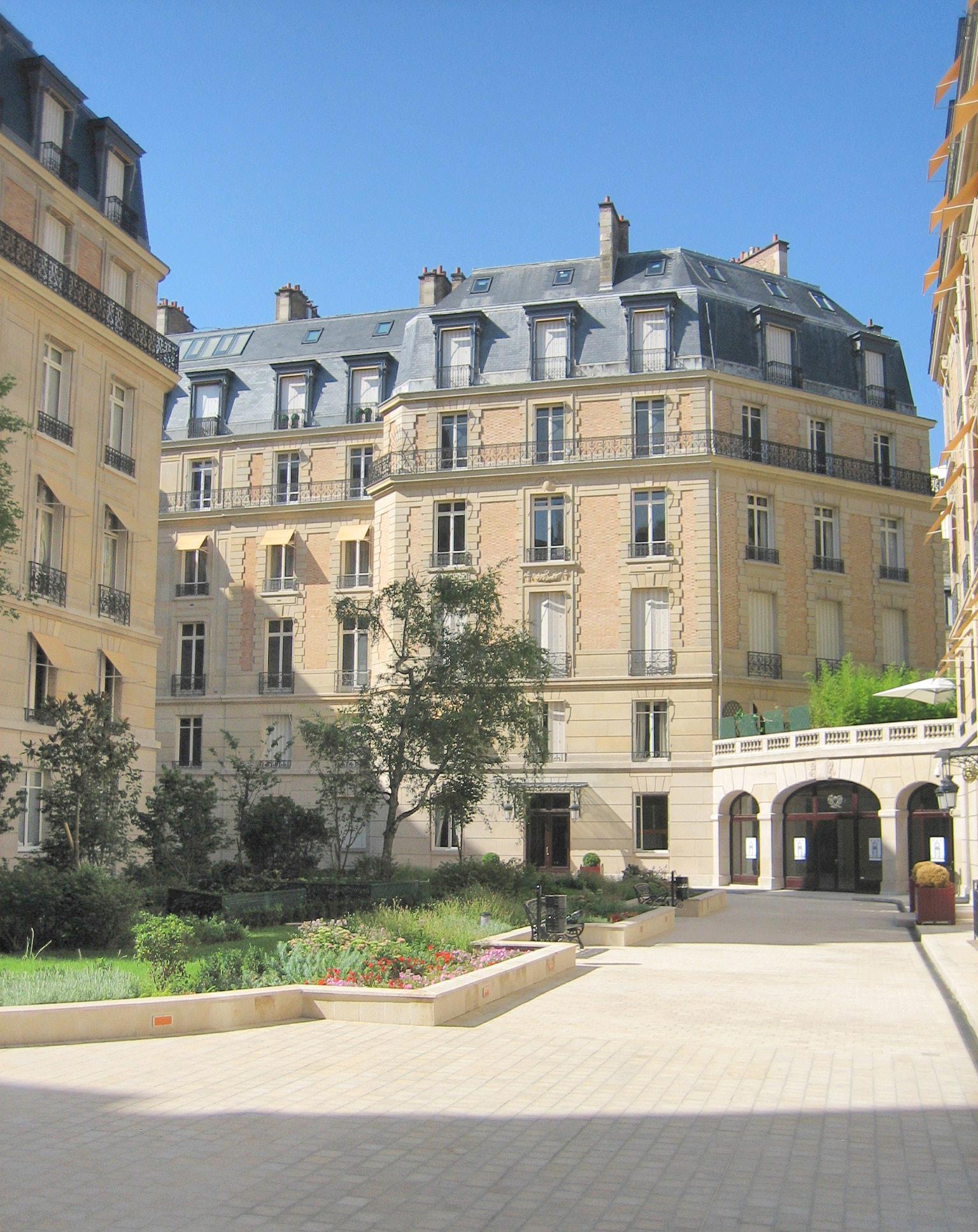
Client / Client : Société d’Angeli Redilco • Lieu / Location : 51/55 avenue Montaigne, 75008 Paris • Programme / Program : Complexe d’habitation et commerce / Housing complex and shop • Architectes / Architects : AAAB • Architecte d’interieur / Interior architecture : Volume ABC (partially) • Superficie / Surface Area : 30 000 m² • Statut / Status : Livré 2008 / Delivered 2008
Une rénovation historique
A historic renovation




Commandité en 1852 par le directeur du cirque d’Été des Champs-Élysées, le cirque d’Hiver est construit par Jacques Hittorf en à peine huit mois. Son histoire est faite de changements d’affectation et d’exploitants qui conduiront à de multiples travaux de modernisation et de décoration successifs. L’exploitant depuis 1934 avant de s’en rendre propriétaire vingt ans plus tard, la famille Bouglione engage sa rénovation complète.
Lieu emblématique par son architecture et son passé, l’intervention retenue cherche à restituer l’édifice au plus près de son dessin originel en restaurant à l’identique les structures, staffs et peintures tout en veillant à mettre en oeuvre des matériaux pérennes et à anticiper les technologies indispensables à la nécessaire évolution des arts du cirque.
Commissioned in 1852 by the director of the Champs-Élysées Summer Circus, the Winter Circus was built by Jacques Hittorf in barely eight months. Its history is made of changes of use and operators that will lead to many successive modernization and decoration works. The operator since 1934 before becoming its owner twenty years later, the Bouglione family is undertaking its complete renovation.
An emblematic place in terms of its architecture and its past, the chosen intervention seeks to restore the building as closely as possible to its original design by restoring the structures, staffs and paintings to the same, while ensuring the use of long-lasting materials and anticipating the technologies essential to the necessary evolution of the circus arts.
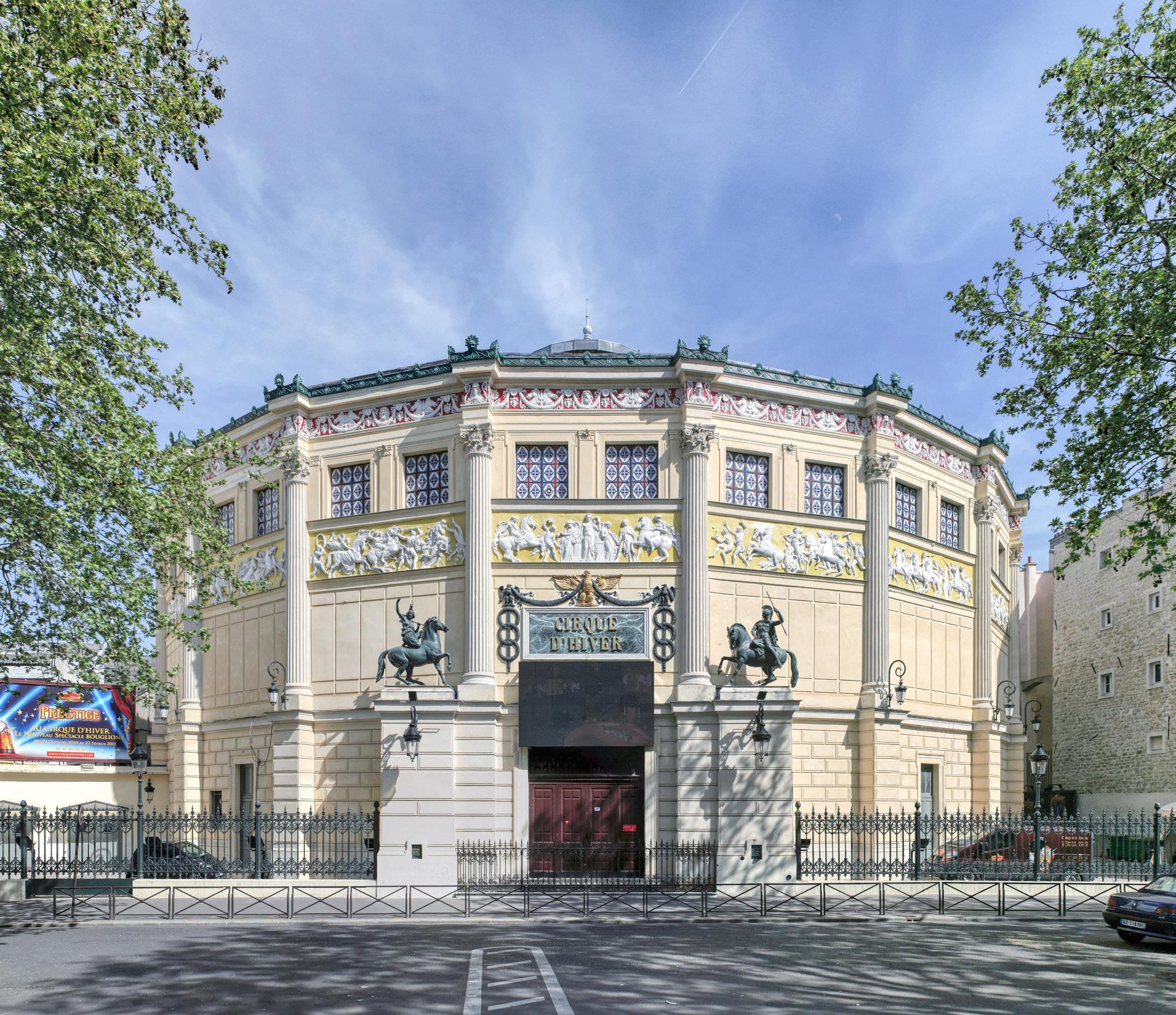

Client / Client : Famille Bouglione • Lieu / Location : Paris, France • Programme / Program : Rénovation du Cirque d’Hiver initialement construit par Jacques Ignace Hittorff en 1852 et mené sous l’égide de la : Direction Régionale des Affaires culturelles, la ville de Paris et le Conseil Régional / Renovation of the Cirque d’Hiver initially built by Jacques Ignace Hittorff in 1852 and carried out under the aegis of : Regional Directorate of Cultural Affairs, the city of Paris and the Regional Council • Architectes / Architects : Bechu & Associés • Statut / Status : Livré en 2007 / Delivered in 2007
Maison Foncia : une hymne à l’architecture
The Foncia House : a hymn to architecture

Le nouveau siège de Foncia à Anthony joue une partition en plots de deux à trois étages aux allures de pavillons. Ces maisons de ville s’articulent autour de jardins à thème répondant au parc de Sceaux près duquel elles se trouvent.
Leur lecture fractionnée est accentuée par la modénature diversifiée de leur parement en pierre lasurée et de leurs percements, et soulignée au-dessus d’une corniche discontinue par le traitement des attiques alternant toitures-terrasses et galbe en cuivre prépatiné coiffant des volets bois coulissants. Une porte monumentale en marqueterie de cuivre s’ouvre sur un patio sous verrière distribuant la Maison Foncia !
Foncia’s new headquarters in Anthony play a score of two- to three-storey pavilion-like blocks. These town houses are articulated around thematic gardens that echo the nearby Parc de Sceaux.
Their fragmentary presentation is accentuated by the diverse composition of their tinted stone cladding and borings, and highlighted above the discontinuous cornice by the treatment of the top floors, which alternate roof terraces and curved pre-patinated copper roofing above the sliding wooden shutters. A copper marquetry monumental door opens onto a glass-covered patio that sets out Foncia’s new home!
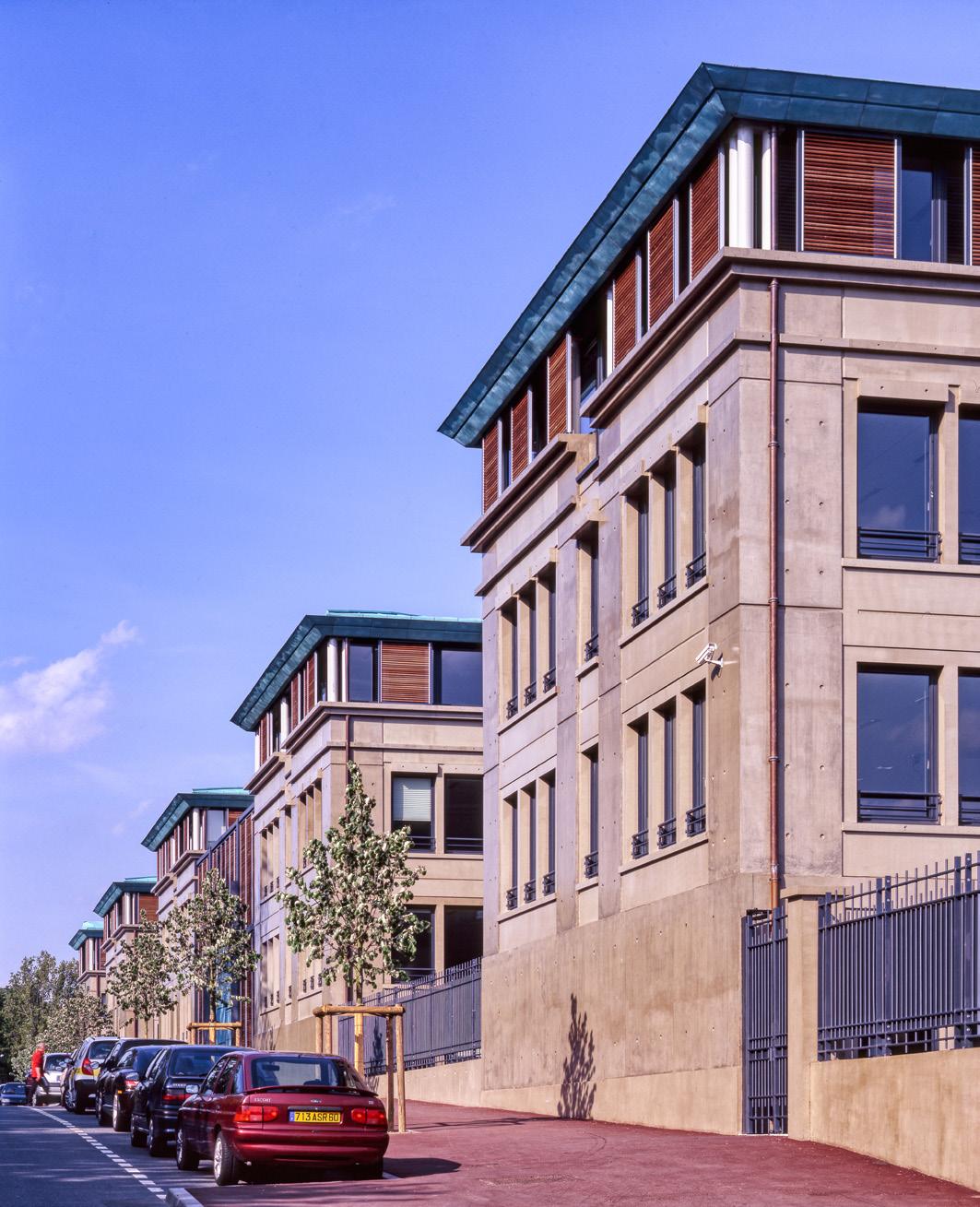
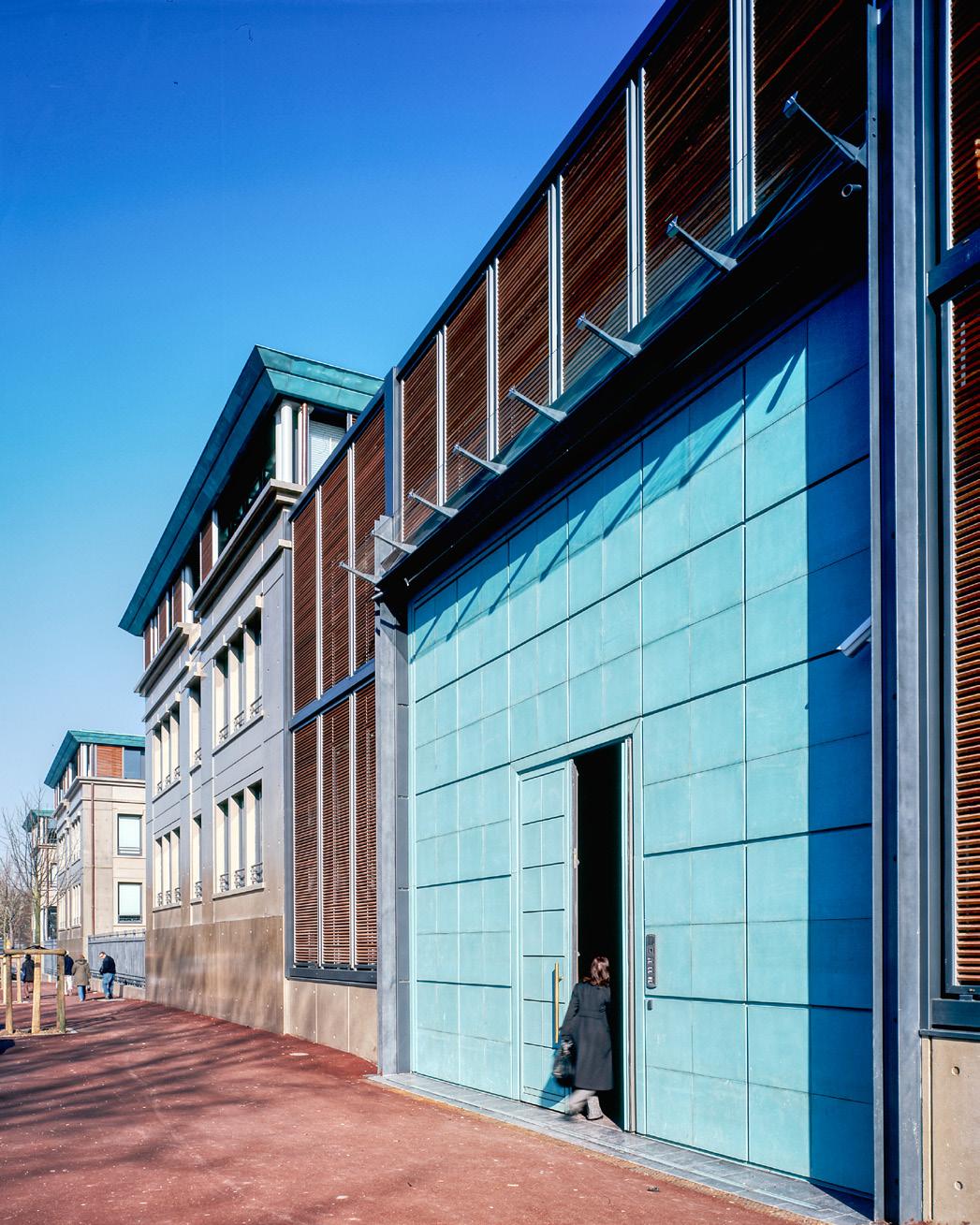

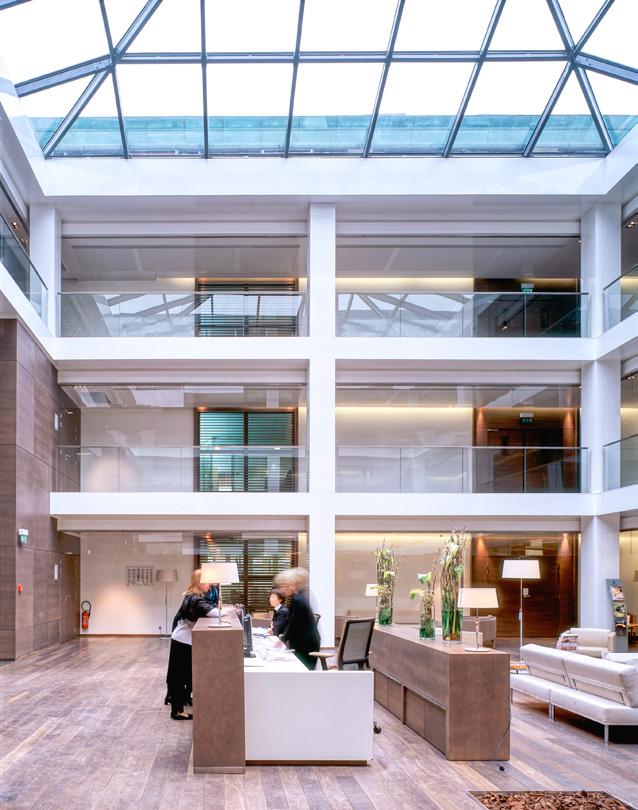

Client / Client : Foncia • Lieu / Location : 11-13 Avenue Le Brun, 92160 ANTONY • Programme / Program : Bureaux / Offices • Architectes / Architects : Bechu & Associés • Superficie / Surface Area : 12 000 m² • Statut / Status : Livré en 2005 / Delivery in 2005
Longeant à l’ouest la Gare de l’Est, la rue d’Alsace accueille un grand nombre d’immeubles construits le long de cette rue honorant l’architecture industrielle et ferroviaire de la seconde moitié du XIXe siècle. C’est le cas de l’immeuble situé des numéros 11 à 23 qui occupe la parcelle jusqu’à la rue du Faubourg-Saint-Denis. Jusqu’à récemment, il était entièrement utilisé comme bureaux par la SNCF mais a depuis fait l’objet d’une restructuration et d’une revitalisation en profondeur. Alors que le Centre National d’Exploitation Ferroviaire s’est à nouveau doté d’un siège, une partie des bureaux rénovés (et décloisonnés) sont désormais loués à d’autres entreprises.
Outre les nouveaux appartements donnant sur le quartier environnant, les anciennes archives ont été transformées en lofts et les meubles existants en placards et rayonnages. Deux des anciennes cours intérieures ainsi que l’ancien restaurant central ont été pourvus de grandes verrières dont l’une très élégamment cintrée et inspirée des voûtes sans colonnes (wuliang dian) des palais chinois accessibles en train depuis la Gare de l’Est via le Trans-Europe-Express, le Transsibérien et le Transmandchourien.
Ces toitures cristallines ont créé des espaces lumineux de détente et de services dans les cours qui organisent les différents pôles d’activités et leur articulation. Les entrées de ces cours ont été augmentées grâce à la création d’une rue intérieure au niveau supérieur et d’une rue transversale reliant deux rues existantes ouvertes au public pendant la journée. Les grands murs pignons qui surplombent la rue transversale ont été plantés par Patrick Blanc. Cette vaste parcelle à usage mixte, désormais utilisable par le public, crée un haut niveau d’urbanité et réintègre le bâtiment dans le tissu urbain, en adoptant une approche moderne qui valorise également son patrimoine.
Running alongside the west of the Gare de l’Est main line station, Rue d’Alsace welcomes a large number of the buildings built along this street honour the industrial and railway architecture of the second half of the 19th century. This is the case of the building located from numbers 11 to 23 which occupies the plot right the way through to Rue du Faubourg-Saint-Denis. Until recently, it was fully used as offices by the French railway authorities (SNCF) but has since been subject to an in-depth restructuring and revitalising exercise. While the national centre of railway operations has once again been provided with a headquarters, a proportion of the renovated (and decompartmentalised) offices are now leased to other companies.
In addition to the new apartments giving onto the surrounding district, the former archives have been converted into lofts and the existing furniture units into cupboards and shelving. Two of the former interior courtyards as well as the old central restaurant have been provided with large glazed roofs, one of which very elegantly curved and based on the column-free vaults (wuliang dian) of the Chinese palaces which can be reached by train from the Gare de l’Est via the Trans-Europe-Express, the TransSiberian and the Trans-Manchurian routes.
These crystalline roofs have created luminous relaxation and services spaces in the courtyards that organise the various activity poles and the way they interlink. Entrances to these courtyards have been increased through the creation of an upper level indoor street and a cross-street linking two existing streets that are open to the public during the day. The large gable walls rising up over the cross-street have been planted by Patrick Blanc. This vast mixed use plot, now usable by the public, creates a high level of urbanity and reincorporates the building into the urban fabric, taking a modern approach that also enhances its heritage.

Client / Client : ING Atemi • Lieu / Location : Paris, France • Programme / Program : Réhabilitation d’un immeuble industriel en bureaux et logements / Offices and housing • Architectes / Architects : Bechu & Associés • Architecture d’intérieur / Interior architecture : Volume ABC • Superficie / Surface Area : 25 458 m² • Statut / Status : Livré 2009 / Delivered 2009 >> Developpement durable / Sustainable developpment : Démarche HQE / HEQ approach





Rénovation d’un ensemble immobilier de bureaux, de logements et d’une surface commerciale. Construit initialement par Jacques Félix Duban. L’ensemble est inscrit MH.
Renovation of a real estate complex of offices, housing and a commercial area. Originally built by Jacques Félix Duban. The set is registered MH.

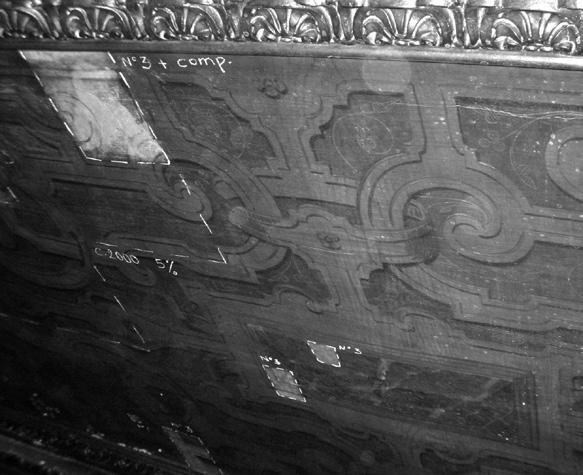
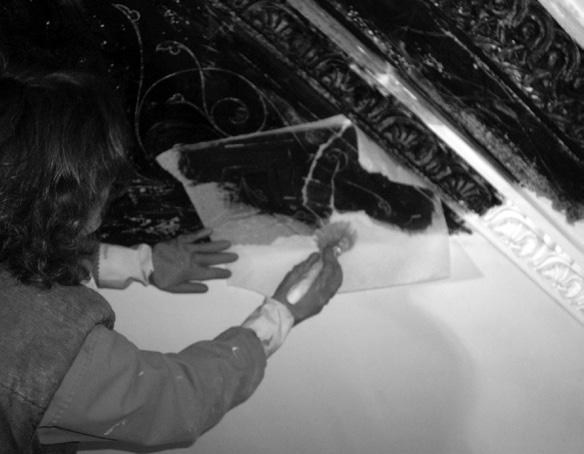
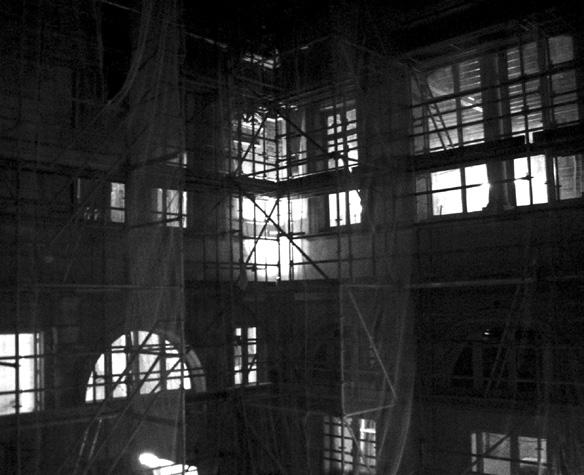


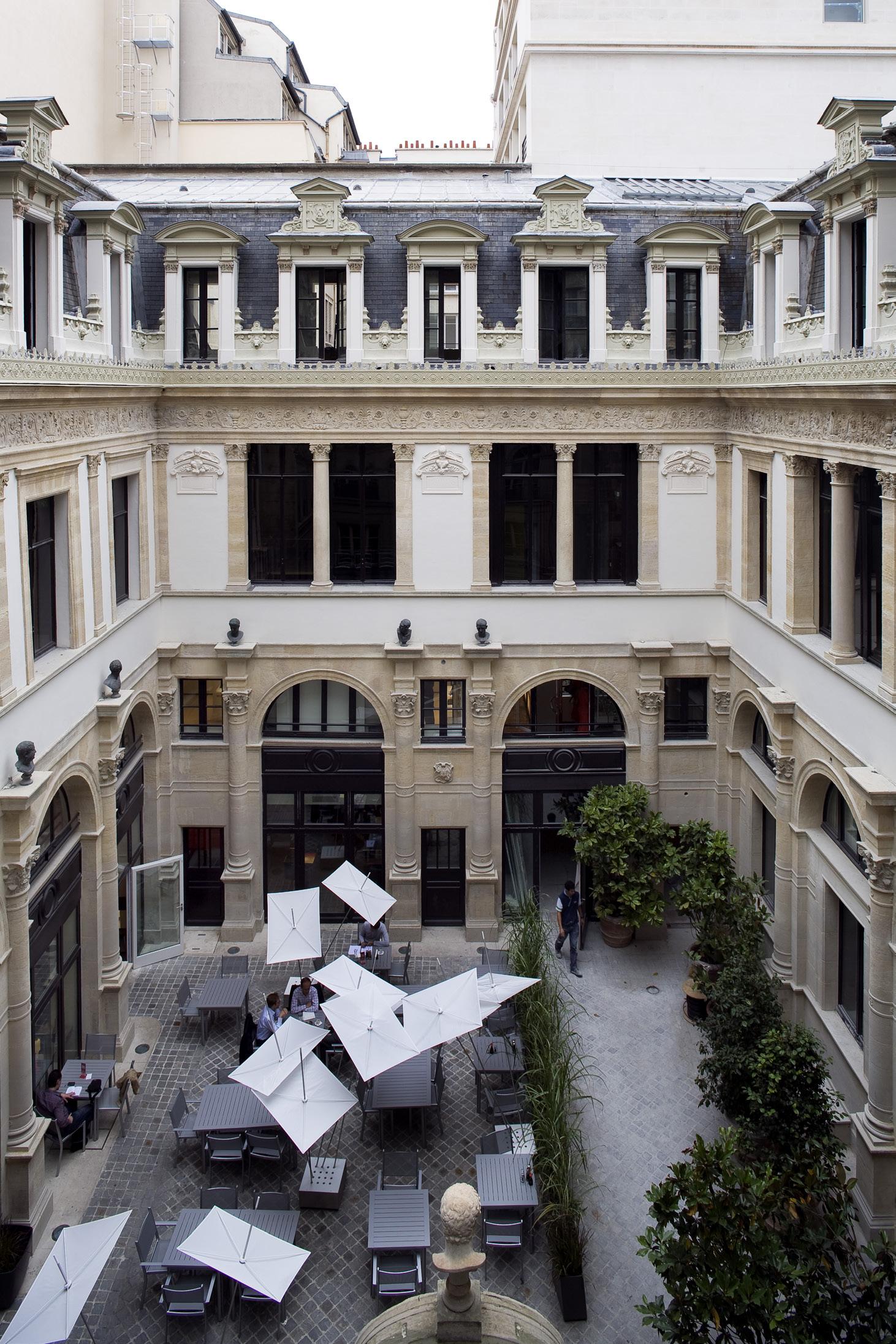
Client / Client : SARL Pourtales • Lieu / Location : 7/9 rue Tronchet 75009 Paris, France • Programme/ Program : Rénovation d’un ensemble immobilier de bureaux, de logements et d’une surface commerciale. Construit initialement par Jacques Félix Duban / Renovation of a MH Listed real estate complex of offices, housing and retail space. Originally built by Jacques Félix Duban • Architectes / Architects : Bechu & Associés • Superficie / Surface Area : 3 800 m² • Statut / Status : Livré en 2008 / Delivered in 2008
>> Developpement durable / Sustainable developpment : Inscrit MH / Registered historical monument
Un morceau de l’histoire du spectacle parisien

Les Trois Baudets ont été créés à la fin des années 40 par Jacques Canetti, pour combler l’absence de salles parisiennes où les jeunes artistes, le plus souvent inconnus, pourraient facilement se produire devant un public. C’est dans cette salle que plus qu’une centaine d’artistes dont Jacques Brel et Serges Gainsbourg vont démarrer leur prodigieuse carrière de scène.
Cet établissement est situé au pied de la butte Montmartre dans le quartier de Pigalle. Depuis 1925, date de sa construction par l’architecte Charles Lemaresquier, les locaux niveau rue du bâtiment n’ont cessé d’évoluer et de changer de propriétaires. Utilisant le système de la « boîte dans la boîte », le théâtre s’inscrit sur deux étages totalisant 250 places assises. Au premier étage on trouve une salle de restauration avec des cuisines et des bureaux de gestion du théâtre. Le dessin de la nouvelle façade s’appuie par rapport aux trames verticales et horizontales existantes.
Horizontales par rapport à la continuité du garde corps, verticales par rapport aux descentes des poteaux de structure existants. La nouvelle façade du théâtre des 3 baudets redonne un visage plus urbain et plus didactique au quartier permettant ainsi de glisser entre une architecture des années 1930 et contempo-raine.
Les Trois Baudets was created at the end of the 1940s by Jacques Canetti, to fill the lack of Parisian venues where young artists, mostly unknown, could easily perform in front of an audience. It is in this room that more than a hundred artists, including Jacques Brel and Serges Gainsbourg, began their prodigious stage careers.
This establishment is located at the foot of the Butte Montmartre in the Pigalle District. Since 1925, when it was built by architect Charles Lemaresquier, the street-level premises of the building have continued to evolve and change owners. Using the ‘box in the box’ acoustic insulation system, the theater is on two floors with a total seating capacity of 250. On the first floor there is a dining room with kitchens and theater management offices.
The design of the new facade is based on the existing vertical and horizontal frames - horizontal in relation to the continuity of the guardrail, vertical in relation to the existing structural posts. The new facade of the Théâtre des 3 Baudets gives the neighborhood a more urban and informational face that allows it to slip between the architecture of the 1930s and today.
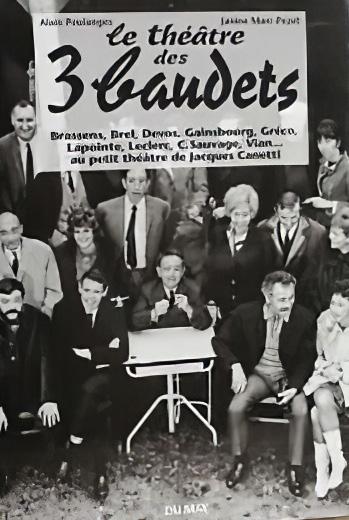



Client / Client : SGIM • Lieu / Location : Paris, France • Programme / Program : Réhabilitation du théatre des 3 Baudets / Rehabilitation of the 3 Baudets theater • Architectes / Architects : Bechu & Associés • Architecture d’intérieur / Interior
Architecture : Volume ABC • Superficie / Surface Area : 1 000 m² • Statut / Status : Livré 2009 / Completed in 2009
Un Immeuble HQE qui pose les fondements d’une architecture raisonnée, au service de l’homme et de la planète
An HQE Building that lays the foundations for reasoned architecture, at the service of man and the planet
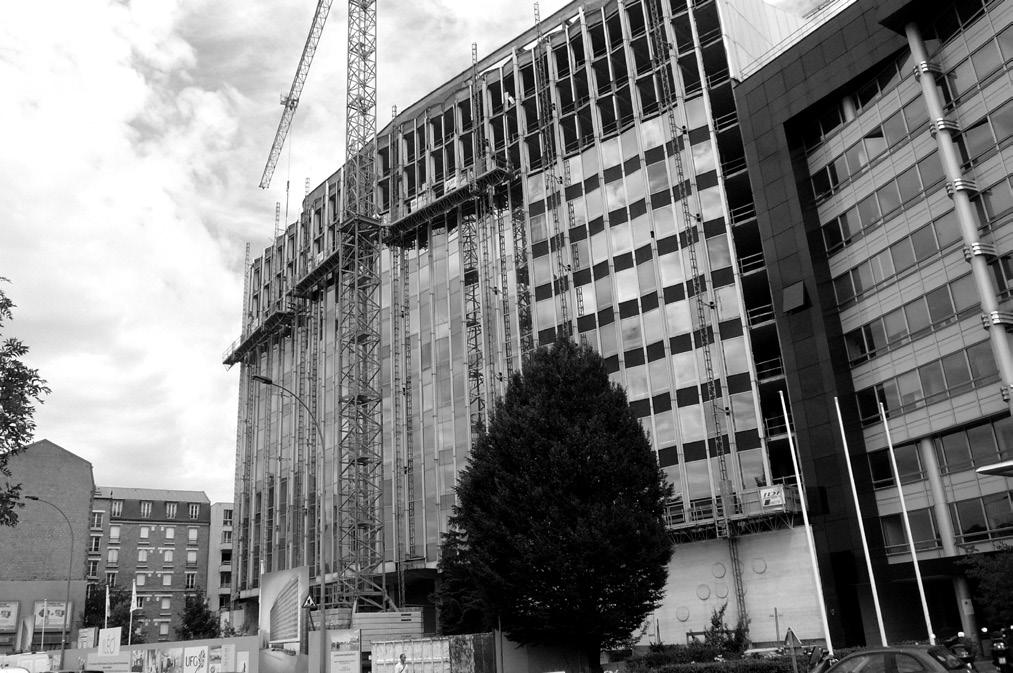
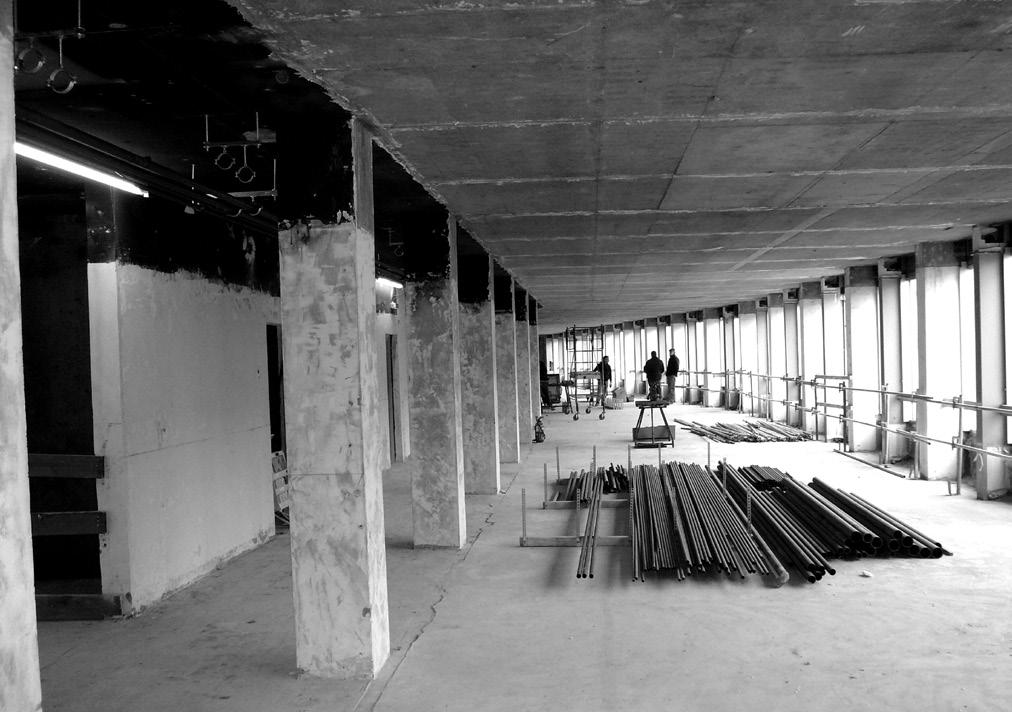


Sa façade de haute technicité permet de maîtriser les dépenses d’énergie du bâtiment tout en requalifiant son image dans la ville par une esthétique affirmée jusque dans son architecture d’intérieur.
Celle-ci met en scène la structure du bâtiment en béton brut, dans une inspiration « navale » qui le relie à la Seine et invite au voyage, à travers une décoration à l’esthétique épurée et au confort chaleureux.
The high-tech façade allows to control the energy expenditure of the building while reclassifying its image in the city by an aesthetic affirmed even in its interior architecture. It depicts the structure of the building in raw concrete, in a “navy” inspiration that connects it to the Seine and invites you to travel, through a decoration with a clean aesthetic and warm comfort
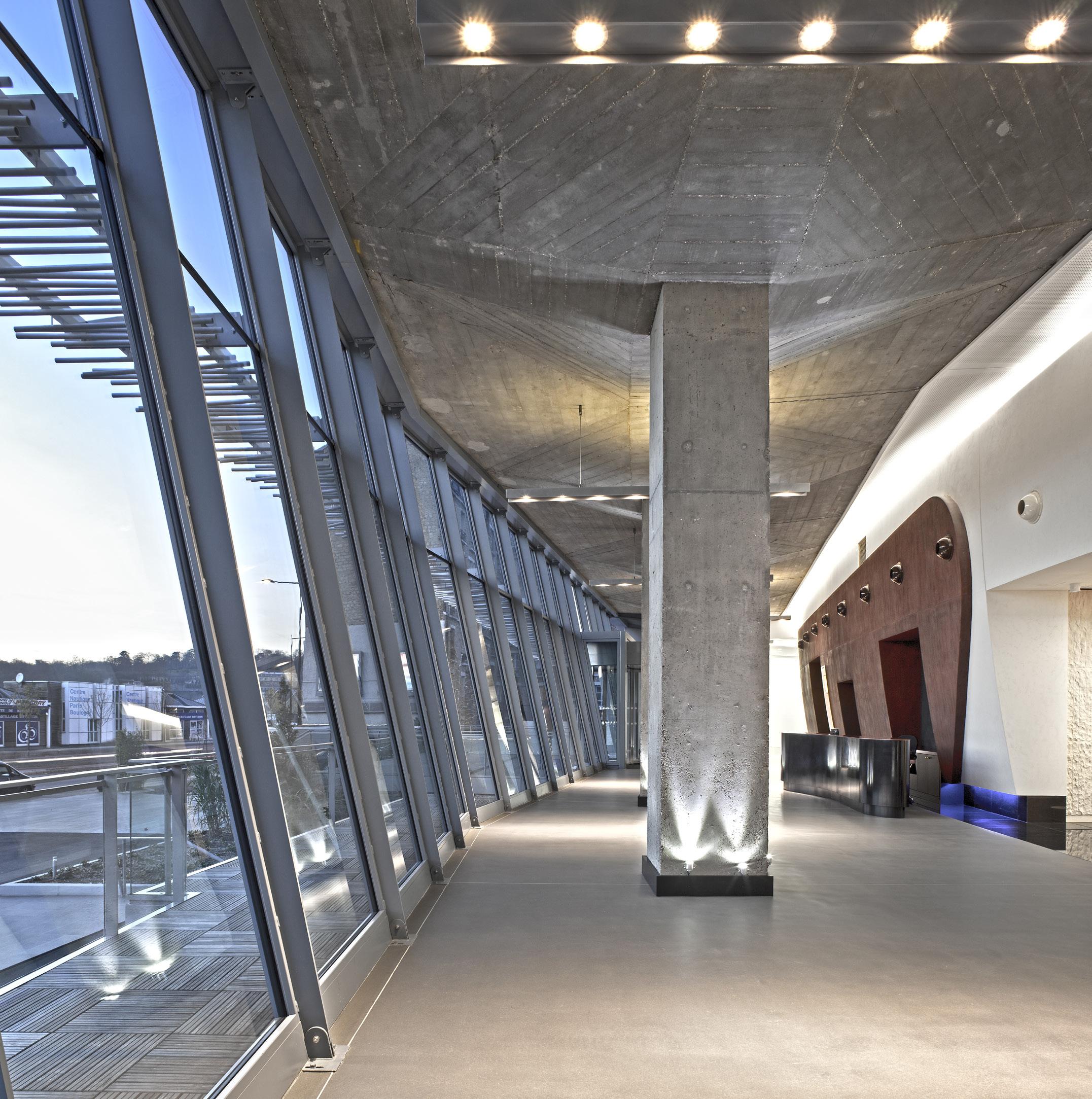
Client / Client : REM • Lieu / Location : Quai Le Gallo Boulogne Billancourt • Programme / Program : Réhabilitation d’un ensemble de bureaux en conception et exécution / Rehabilitation of a set of offices in design and execution • Architectes/ Architects : Bechu & Associés • Architecture d’intérieur / Interior architecture : Volume ABC • Superficie / Surface Area : 18 600 m² • Statut / Status : Livré en 2011 / Delivered in 2011 >> Developpement durable / Sustainable developpment: HQE, BBC, Effinergierénovation, BREEAM, WELL / HQE, BBC, Effinergie-rénovation, BREEAM, WELL
Un projet qui offre 33 % d’économie en matière de consommation d’énergie primaire le projet est certifié Leed et Breeam. A Heritage valorization in the heart of Paris that offers 33% savings in primary energy consumption the project is Leed and Breeam certified.

L’hôtel particulier de Jules-Émile Boivin fût bâti au 19èm siècle, ses deux ailes furent surélevés et deux immeubles, signés par Pierre Dufau, vinrent s’y accoupler dans les années 1960. L’agence Béchu substitua aux deux dernières constructions un bâtiment contemporain ayant pour objectif de « faire miroir » aux architectures mitoyennes (haussmanniennes et art déco).
Le dessin des nouvelles façades décline le nombre d’or dans des rythmes musicaux en contrepoint de celles de l’hôtel, à l’image du patio venant dialoguer avec l’ancienne cour pavée. Trumeaux en pierre, structures et menuiseries métalliques, allèges et bowwindows engendrent une subtile modénature tout en creux et bossages. Le plancher en caillebotis des boîtes en verre favorise le rafraîchissement des plateaux juste en laissant leurs baies intérieures ouvertes.

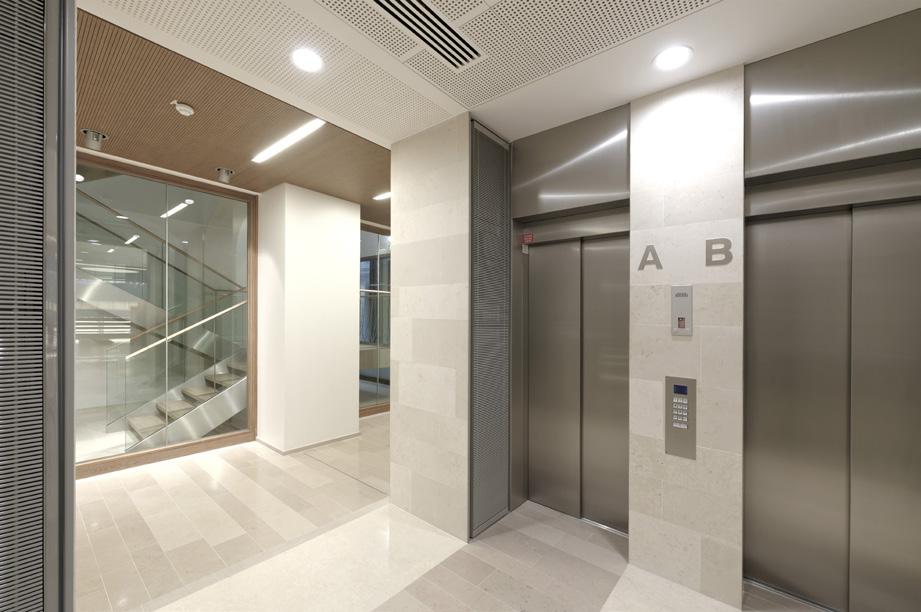
Jules-Émile Boivin’s private mansion was built in the 19th century, its two wings were raised and two buildings, signed by Pierre Dufau, came to couple there in the 1960s. The Béchu Agency replaced the last two constructions with a building contemporary with the aim of “mirroring” adjoining architectures (Haussmann and Art Deco).
The design of the new facades declines the golden number in musical rhythms in counterpoint to those of the hotel, like the patio coming into dialogue with the old paved courtyard. Stone overmantels, metal structures and joinery, spandrels and bow-windows create a subtle molding all in hollows and bosses. The slatted floor of the glass boxes promotes the cooling of the trays just by leaving their interior bays open.
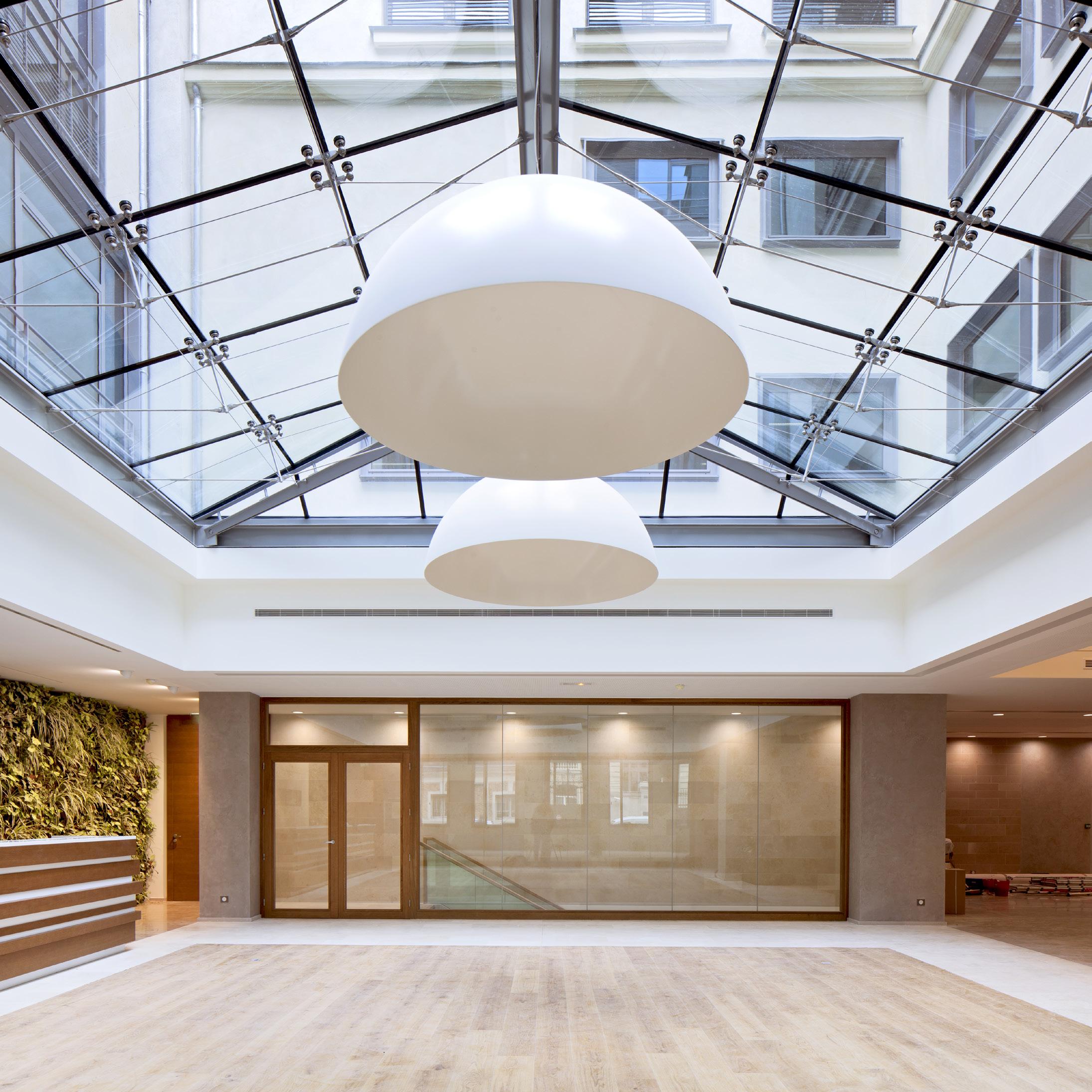
Client / Client : Gecina • Lieu / Location : 62-64 rue de Lisbonne / 13-17 rue Murillo 75008 Paris • Programme / Program : Réhabilitation d’un immeuble de bureaux / Rehabilitation of an office building • Architectes / Architects : Bechu & Associés • Architecture d’intérieur / Interior architecture : Volume ABC • Superficie / Surface Area : 9 400 m² • Statut / Status : Livré en 2012 / Delivery in 2012 >> Developpement durable / Sustainable development : BREEAM very good, certifié LEED / BREEAM very good, LEED certified



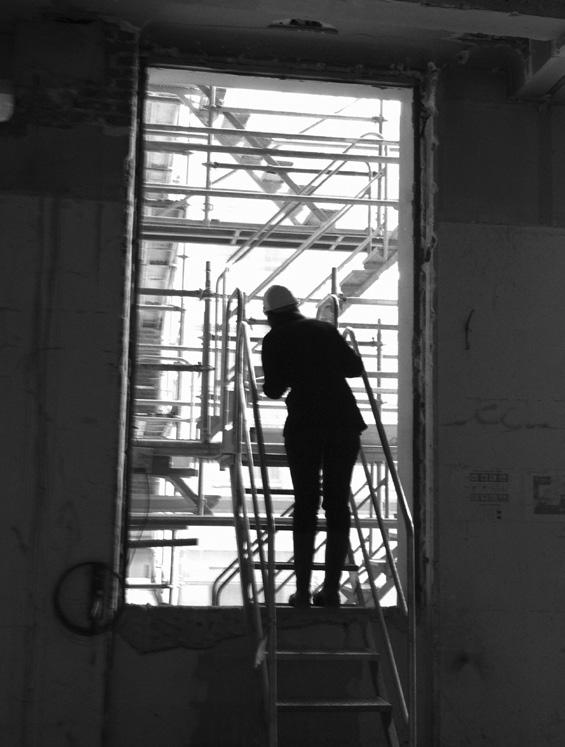





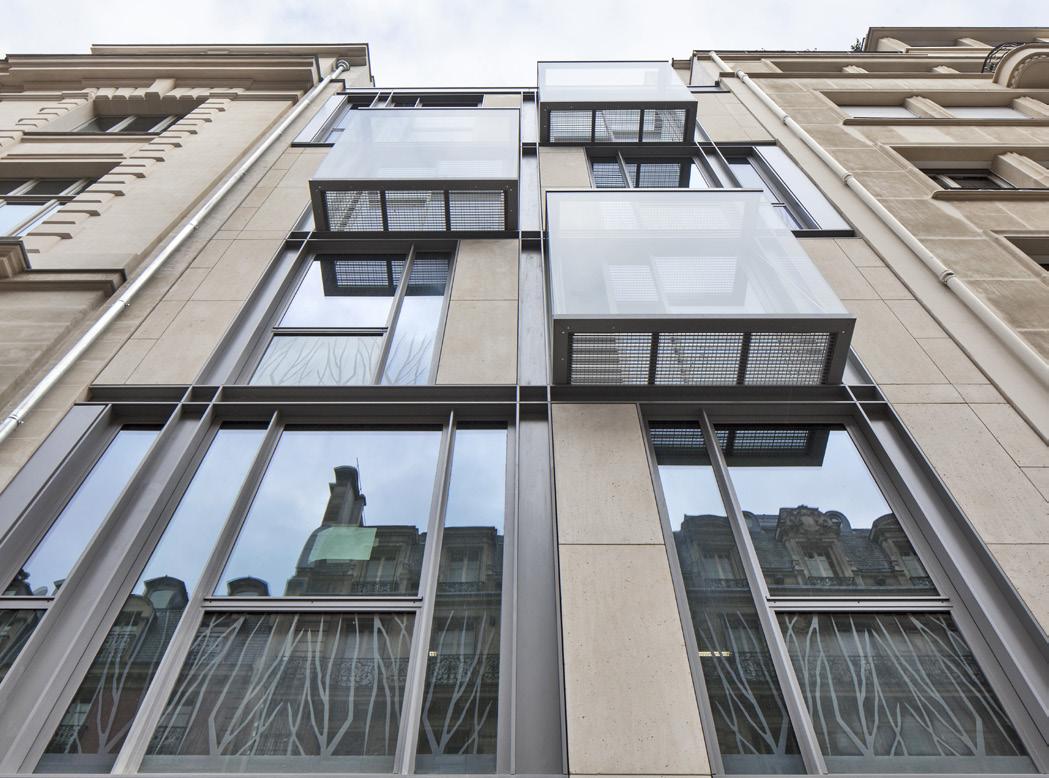
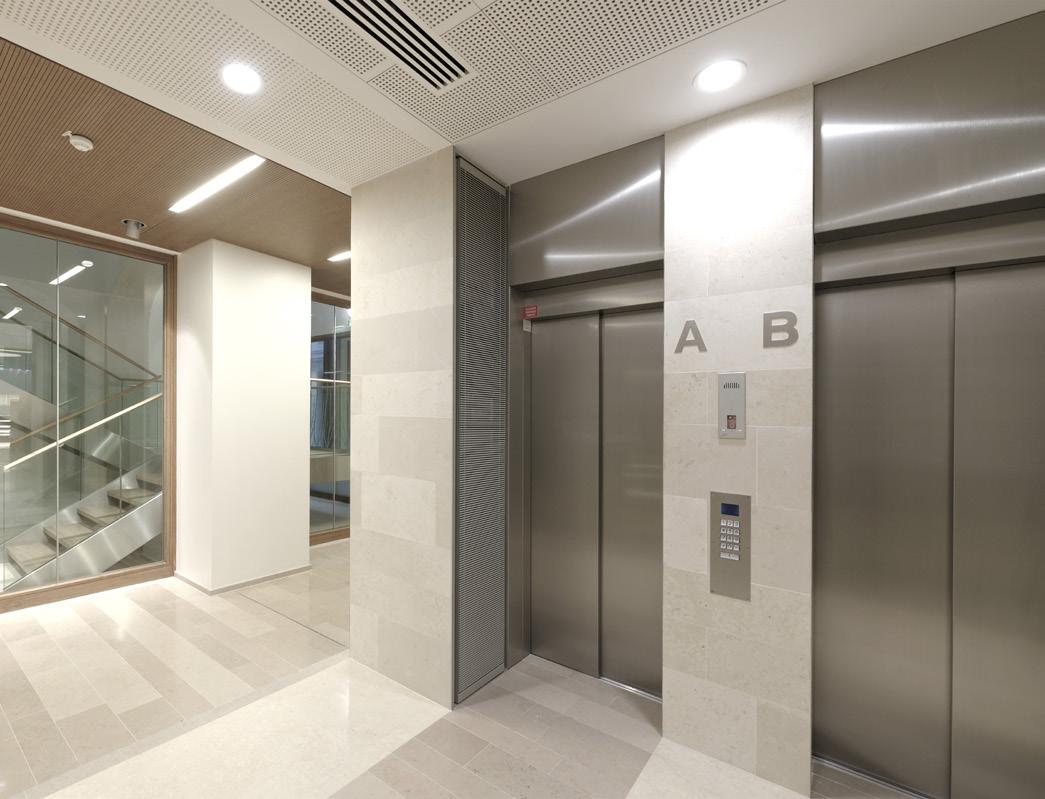

Une transformation HQE.
An HEQ transformation.




Ce projet consiste en la transformation de bureaux obsolètes et mono-orientés en 107 unités d’habitations pour étudiants,dotées de parties communes et de services.
Le bâtiment HQE, coiffé d’une toiture végétalisée, autorise une mixité d’usages (locations et colocations à travers duplex et triplex) grâce à la flexibilité des lieux. Le camaïeu de couleur et la morphologie des bureaux ont été conservés, mais l’agence a développé le jeu de couleurs et ajouté des miroirs pour permettre que les jardins des alentours se reflètent sur la résidence étudiante et que la proximité de la nature confère aux lieux une atmosphère calme, propice pour étudier.
The project consists in converting an obsolete office block into 107 student housing units equipped with common areas and services.
The environmentally-certified building, topped by a green roof, provides a number of mixed uses (duplex and triplex rentals and flat sharing) thanks to the flexibility of the spaces. The variety of colours and the morphology of the offices have been retained, but the agency has further developed the interplay of colours and added mirrors to allow neighbouring gardens to be reflected on the student residence. At the same time, the presence of nature provides the building with a quiet atmosphere, encouraging a reflective setting in which to study.


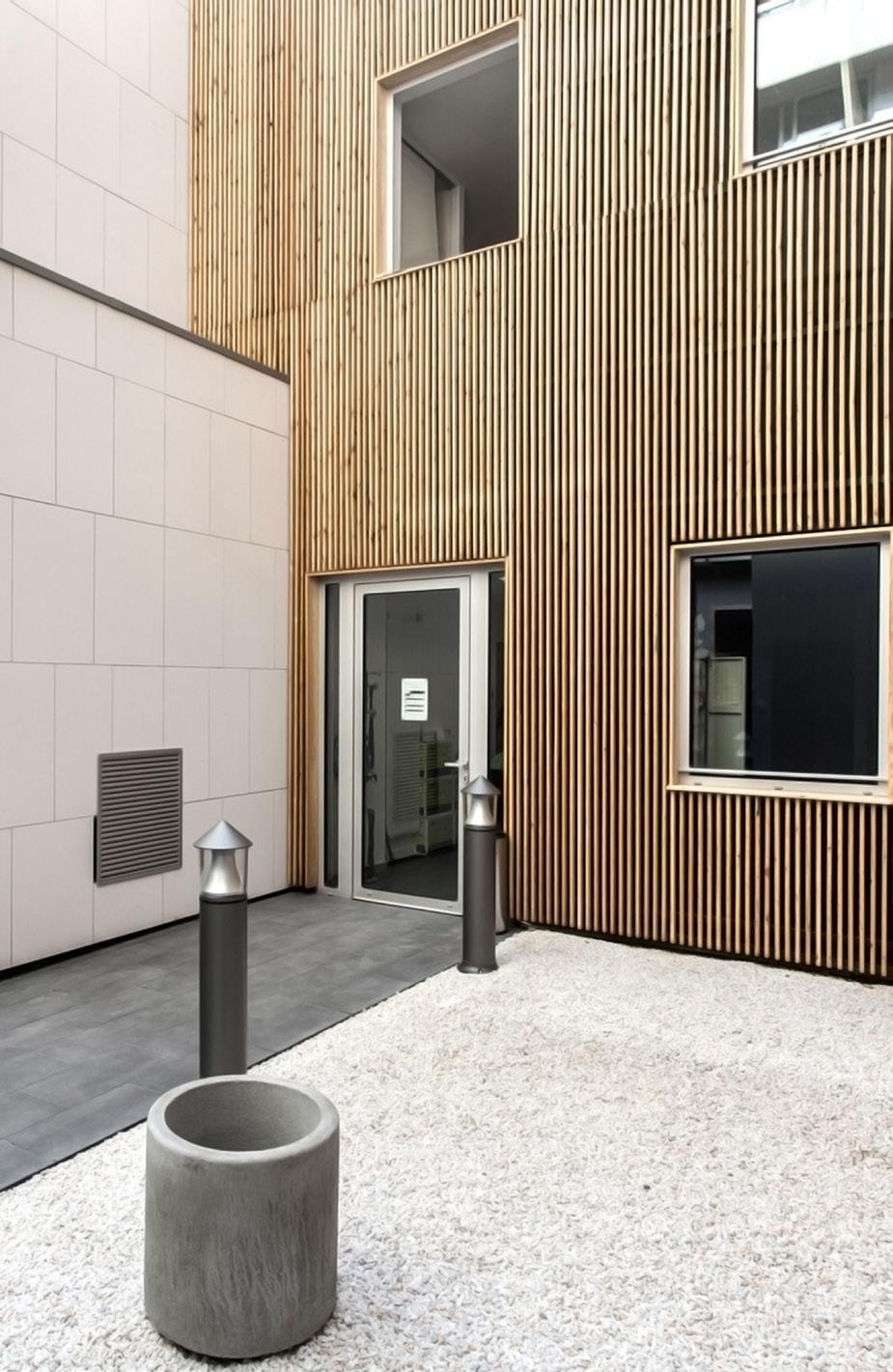
Client / Client : Groupe Gecina, GEC7 • Lieu / Location : Paris, France • Programme / Program : Résidence étudiante / Student residence • Architectes / Architects : Bechu & Associés • Superficie / Surface Area : 4,800 m² • Statut / Status : Livré en 2014 / Completed in 2014 >> Developpement durable / Sustainable developpment : HQE Batiment durable / HQE Sustainable building
Créer un parcours architectural en ouvrant les salons les uns aux autres
The marriage of styles and the creation of an architectural stroll by opening each room to the next
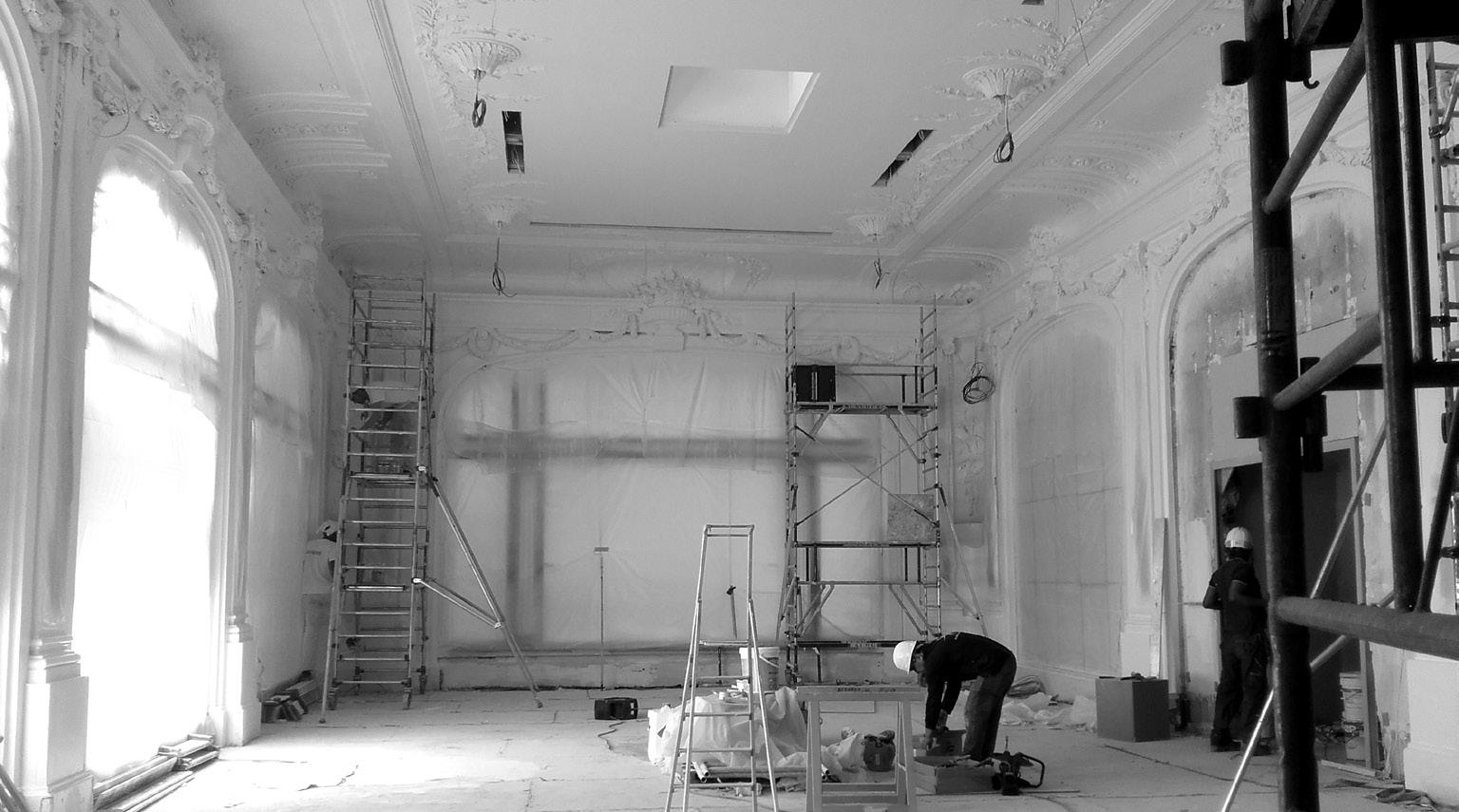
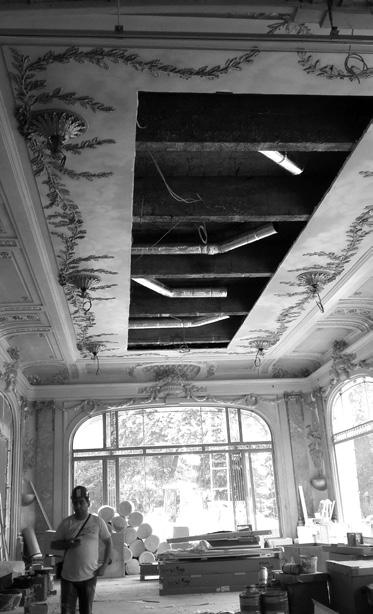

Symbole d’une architecture Belle Epoque à l’extérieur, le Pavillon Dauphine a connu plusieurs vagues de restaurations intérieures le transformant en un bâtiment mariant l’art décoratif au grand style classique revisité, le baignant dans une lumière naturelle altérée.
Le projet de rénovation intérieure s’est donc articulé autour de la lumière et de l’unification des styles afin de redonner une identité au lieu; le tout dans un objectif de grande flexibilité pour accueillir des évènements de différentes envergures.
Symbol of Belle Epoque architecture on the outside, the Pavillon Dauphine has undergone several interior restorations, transforming it into a building that combines decorative art with a revisited classic style, bathing it in filtered natural light.
Thus, the interior renovation project revolved around light and the unification of styles in order to restore an identity to the place, all with the goal of great flexibility to host events of different sizes.

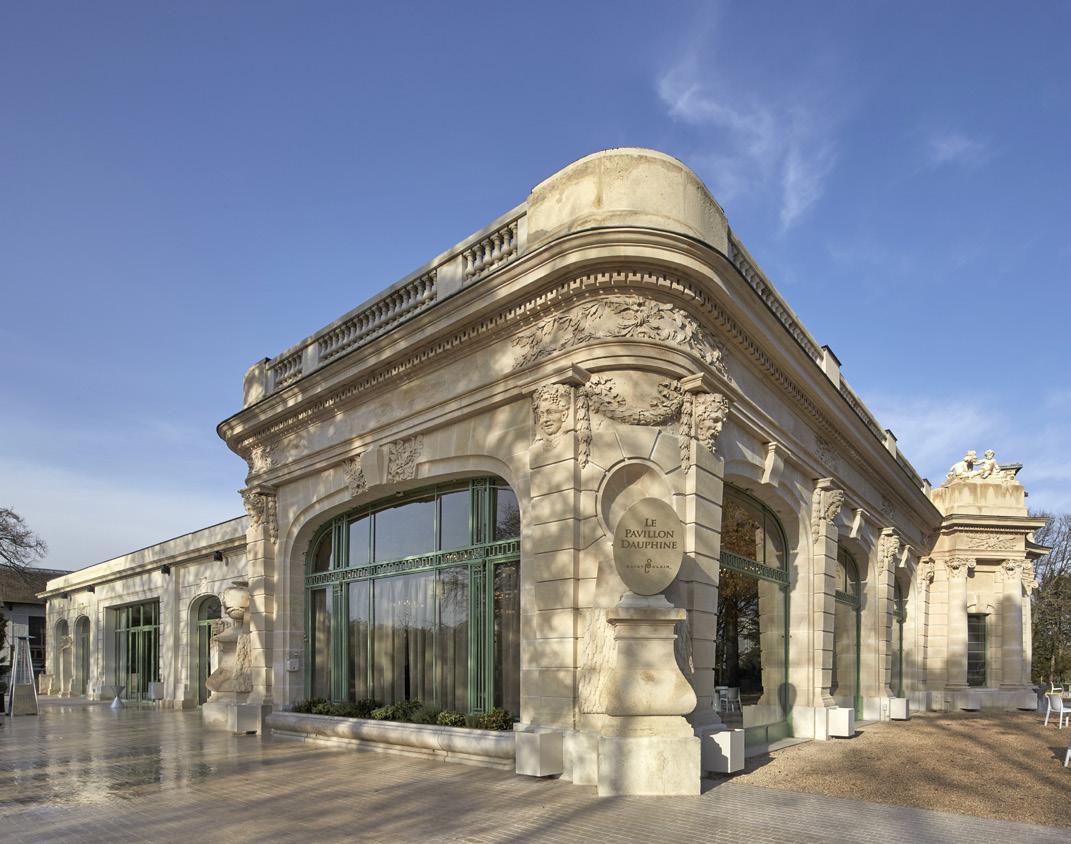

Client / Client : Saint-Clair le Traiteur • Lieu / Location : Paris, France • Programme / Program : Réhabilitation du pavillon Dauphine / Rehabilitation of the Dauphine pavilion • Architectes / Architects : Bechu & Associés • Architecture d’intérieur / Interior Architecture : Volume ABC • Superficie / Surface Area : 4 500m² • Statut / Status : Livré 2016 / Delivery in 2016
Un bâtiment classé patrimoine remarquable au PLU de Paris. Un ensemble de bureaux avec auditorium, grand Hall et Bar caféteria A property classified as remarkable heritage at the PLU in Paris.
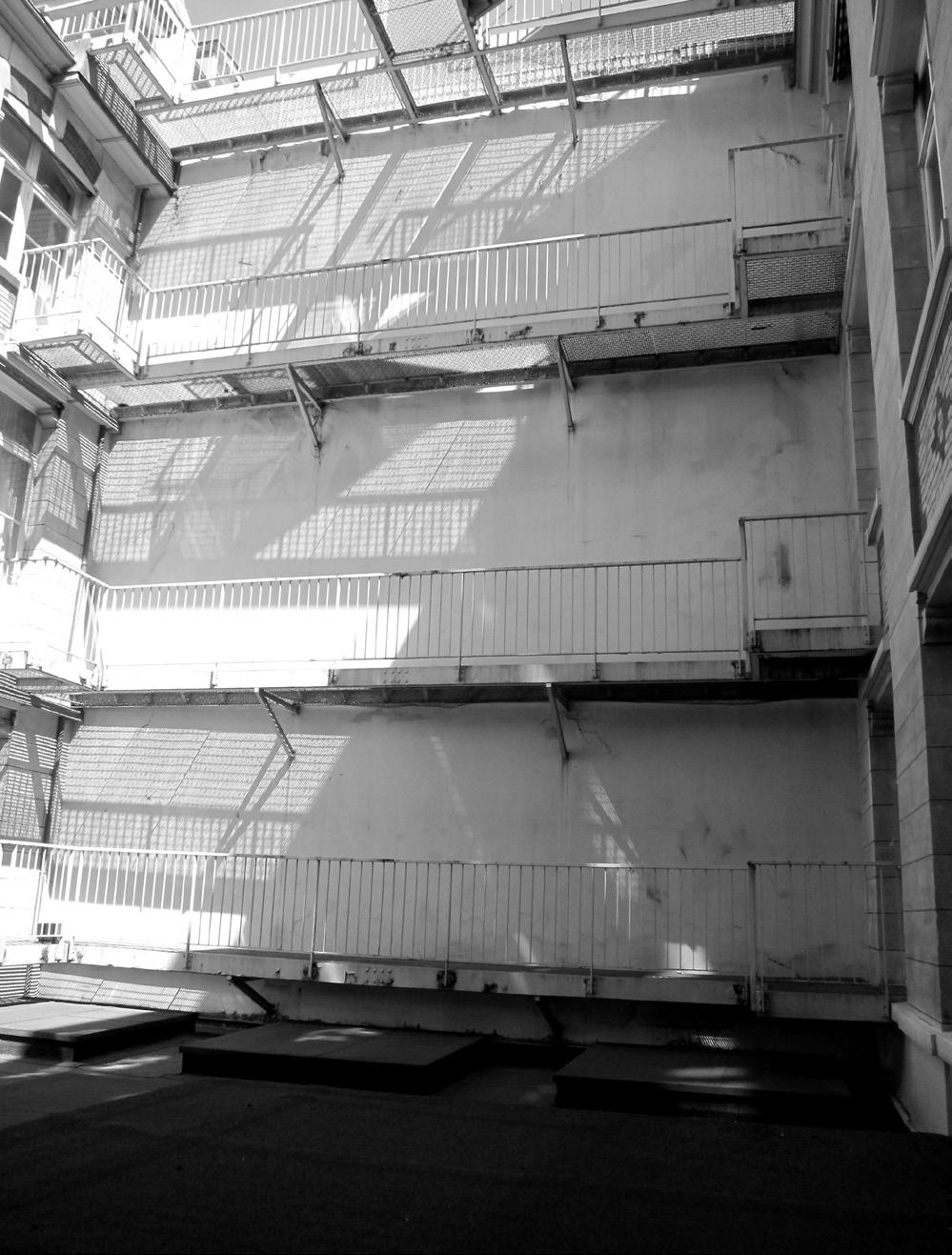
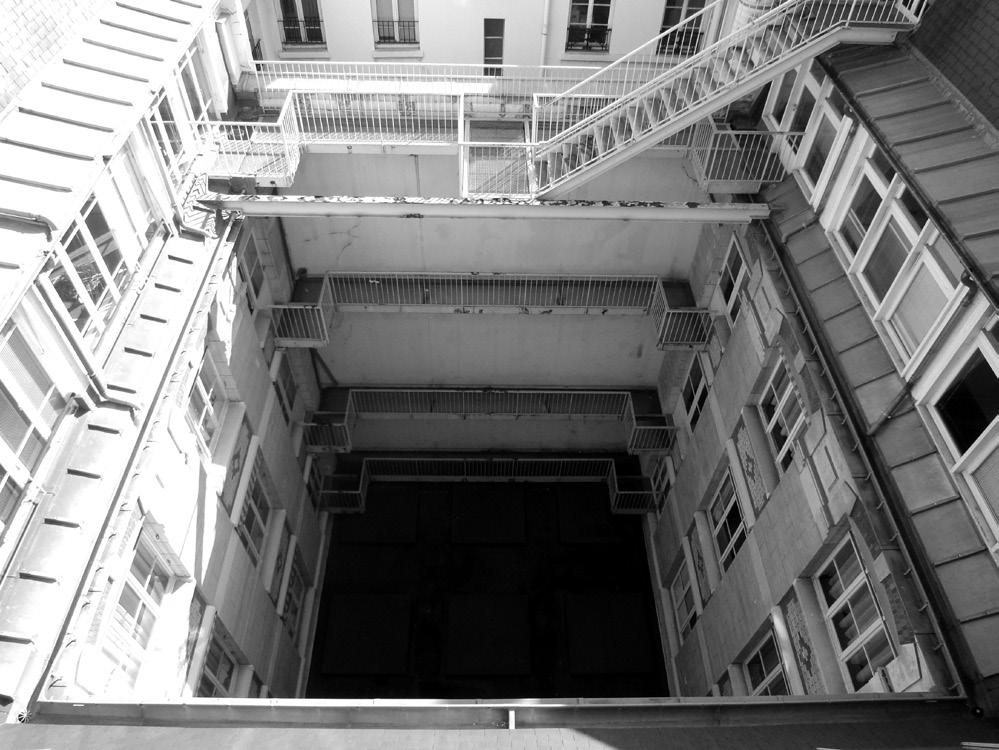

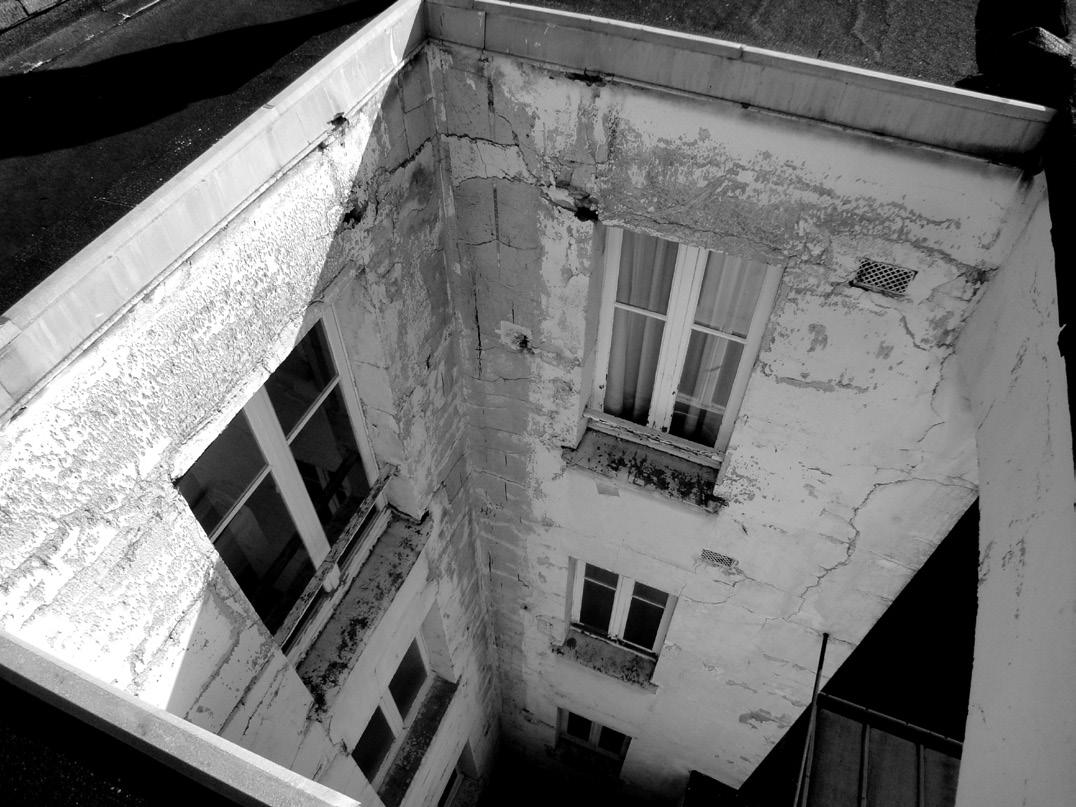

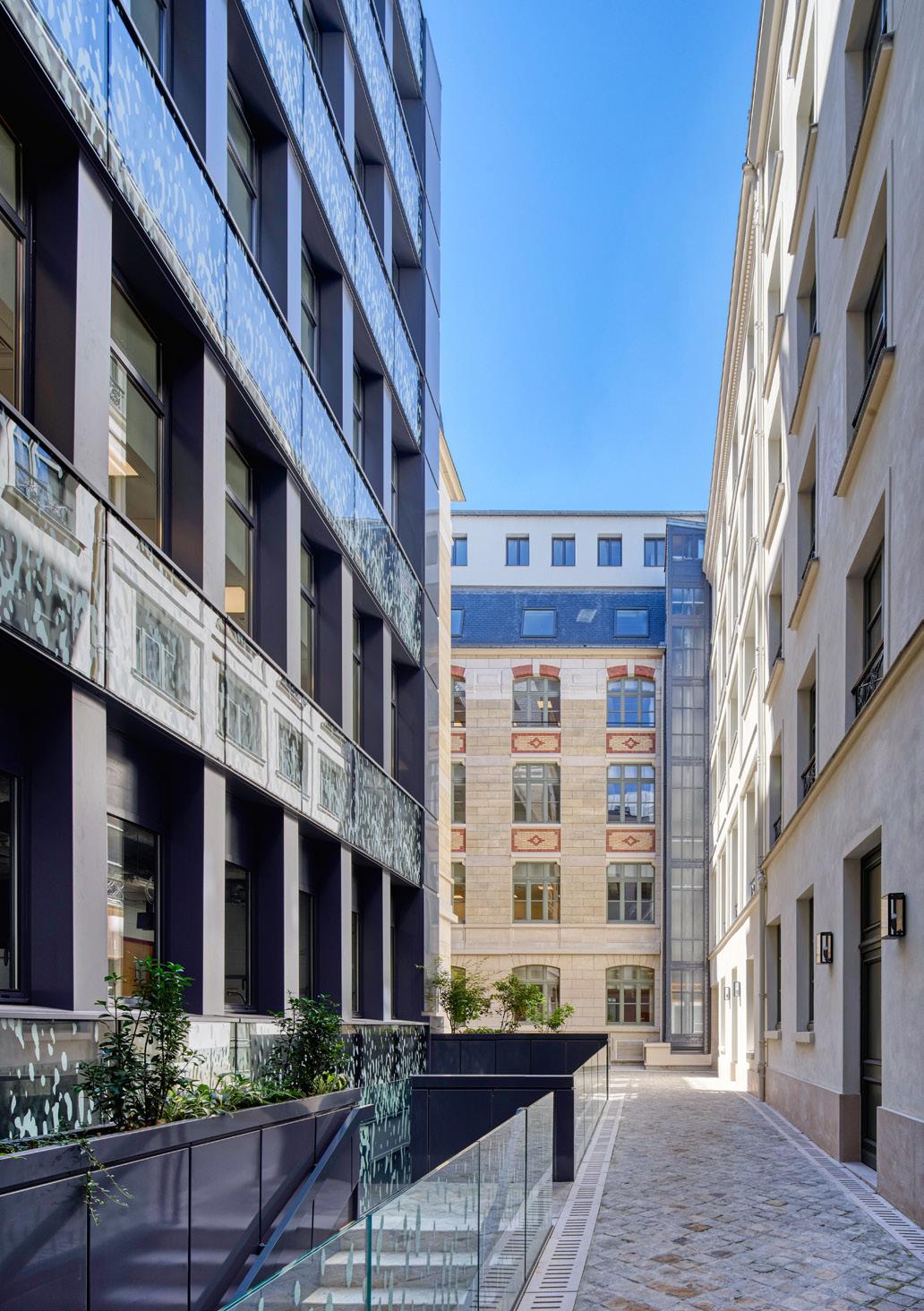



Client / Client : Nexity • Lieu / Location : Paris, France • Programme/ Program: Aménagement d’un ensemble de bureaux / Development of a set of offices
• Architectes / Architects : Bechu & Associés • Architecture d’intérieur / Interior architecture : Volume ABC • Superficie / Surface Area : 11 668 m² • Statut / Status: Livré 2016 / Delivery 2016
>> Developpement durable / Sustainable developpment: Classé Patrimoine remarquable au PLU de Paris / Classified as a remarkable heritage at the PLU de Paris
Aménagement d’un hôtel particulier datant du xviième situé dans le quartier du marais.
Development of a private mansion dating back to the 17th century located in the Marais District of Paris.


Si le bâtiment possède toutes les caractéristiques classiques d’un hôtel particulier parisien, il est toutefois assez simple et dépourvu de décorations extérieures et intérieures.
Notre proposition d’aménagement et de décoration a pour but de faire de cet hôtel particulier un lieu à part en plein cœur de paris en jouant le contraste entre l’ancienneté du bâtiment et le cachet de la rénovation contemporaine. Il s’agit dans un premier temps, de mettre en valeur le charme de l’ancien présent dans cet hôtel lié aux éléments décoratifs : les sols en pierre naturelle, en damier ou en tomette, les garde-corps en ferronnerie, les plafonds moulurés ou leurs poutres en bois. Les éléments seront restaurés, retravaillés et remis en couleur.
L’intervention de rénovation intérieure jouera sur des tonalités foncées afin de mettre en valeur les espaces et y apporter une forte personnalité.
Enfin il faut rappeler que cet hôtel particulier sera organisé autour d’une cour et de deux jardins végétalisés, véritable oasis de tranquillité au cœur de la ville, il nous a paru important de créer un dialogue entre intérieur et extérieur en apportant toutes les allégories et la poésie de la nature. Les éléments décoratifs rapportés évoqueront la végétation. Il s’agit de mettre en valeur l’espace par un vocabulaire rappelant les ornements végétaux classiques, mais également la nouvelle tendance prise sur les quais de Seine.
While the building has all the classic characteristics of a Parisian mansion, it is nevertheless quite simple and devoid of exterior and interior ornament.
Our development and decoration proposal aims to set this mansion apart in the heart of Paris by playing on the contrast between the building’s age and the cachet of a contemporary renovation. The first step is to highlight the charm of the old that present in the mansion, linked to the decorative elements: the natural stone, checkered or terracotta floors, the ironwork railings, the molded ceilings, and the wooden beams. These elements will be restored, reworked and re-colored.
The interior renovation intervention will play on dark tones in order to enhance the spaces and give them a strong personality.
Finally, the mansion will be organized around a courtyard and two vegetated gardens, a true oasis of tranquility in the heart of the city. It was important to us to create a dialogue between the inside and outside by using all the allegories and the poetry of nature. The decorative elements added will evoke vegetation. The goal is to highlight the space with a vocabulary reminiscent of classic plant ornaments, but also the new trends of the banks of the Seine.
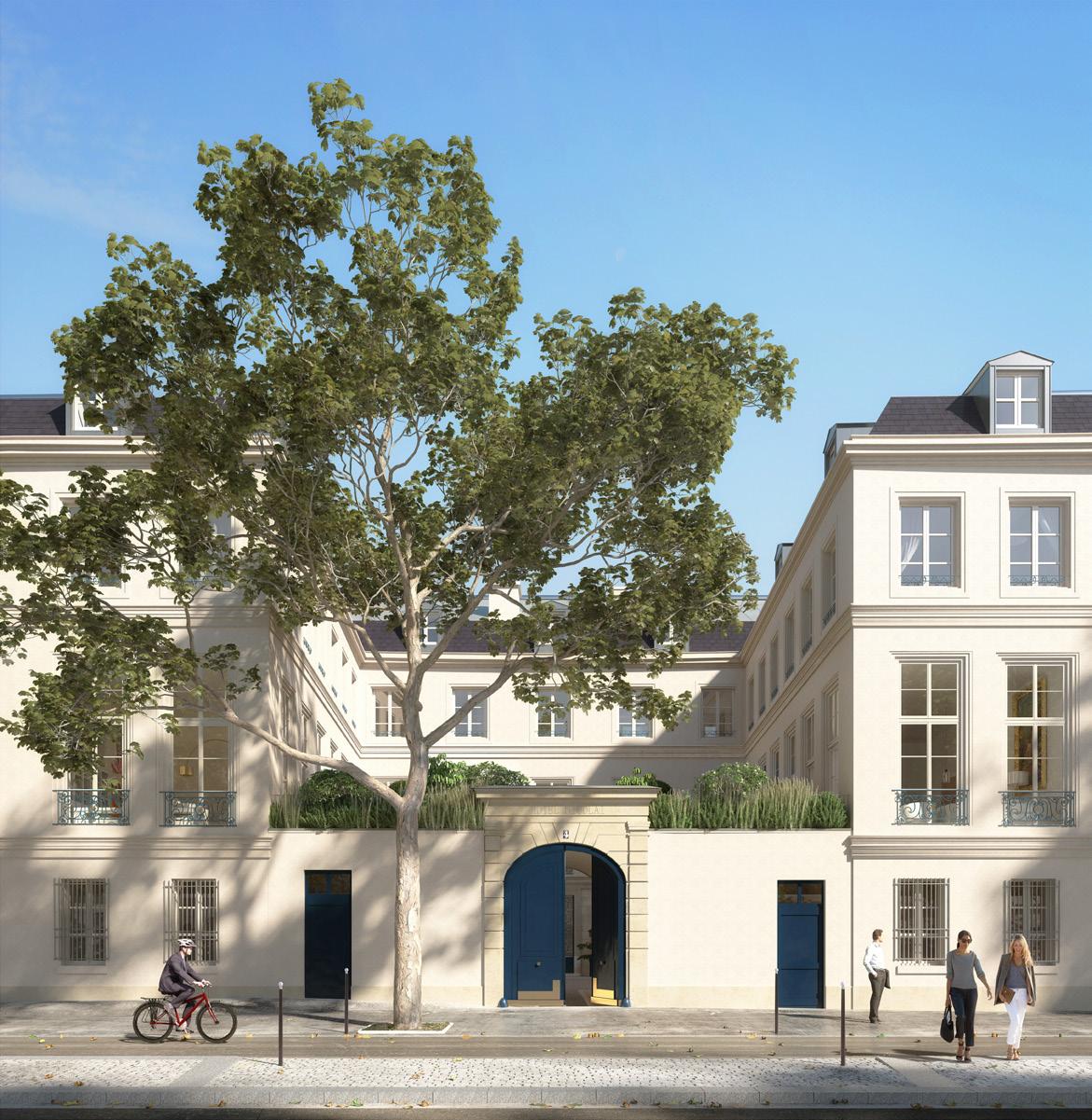


Client / Client : SAS 4 Celestins • Lieu / Location : 4 Quai des Célestins - 75004 Paris, France • Programme / Program : Réhabilitation d’un Hôtel particulier / Rehabilitation of a private mansion • Architectes / Architects : Bechu & Associés • Architecture d’intérieur / Interior Architecture : Volume ABC • Superficie / Surface Area : Masterplan: 1,600 m² • Statut / Status : 2019 - En cours / 2019Ongoing
Réouvrir à la ville par un projet éco-responsable : HQE, BBC EffinergieRénovation, BREEAM, WELL
Reopen to the city with a sustainable project : HQE, BBC Effinergie-Rénovation, BREEAM, & WELL
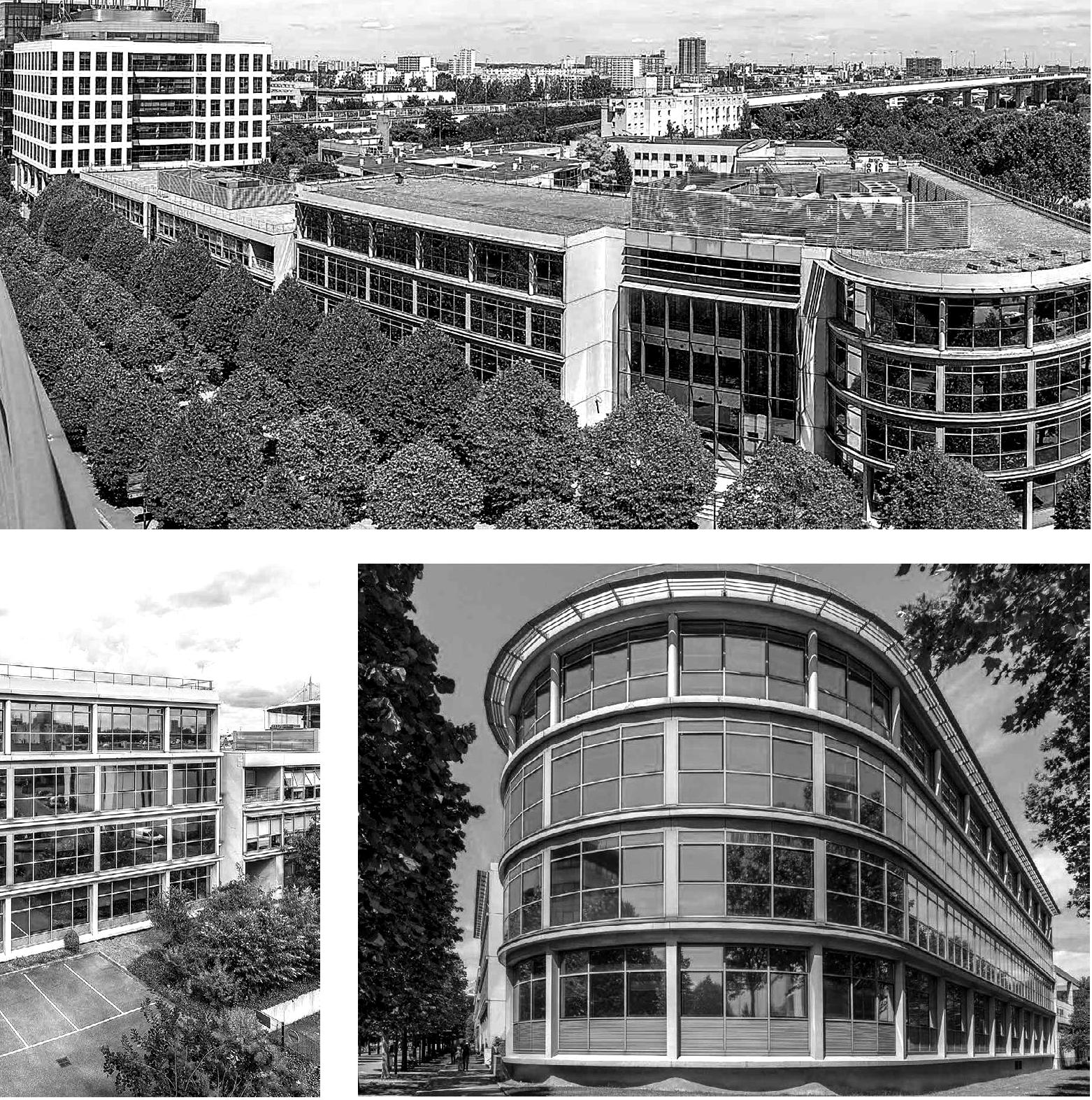
Conçu et livré par nos équipes en 2003 nous avons été missionnés pour restructurer et surélever ce bâtiment de bureaux en le réouvrant à la ville et en doublant sa superficie. Ce projet s’inscrit dans une démarche durable qui vise à «reconstruire la ville sur la ville». Il est un démonstrateur de la capacité de nos équipes à réinventer entièrement un bâtiment en fonction de l’évolution de son écosystème, de l’évolution des techniques, pour optimiser sa valorisation patrimoniale, et garantir une meilleure qualité de vie pour ses occupants.
The original building was designed and delivered by our team in 2003. We were recently commissioned to restructure and increase the height of this office building, reopening it to the city and doubling its size. The project was part of a larger sustainable process that aims to “rebuild the city on top of the city”. It demonstrates our team’s ability to completely reinvent a building based on the evolution of its ecosystem and construction techniques, optimising its asset enhancement and ensuring a better quality of life for its occupants.

Client / Client : GDG • Lieu / Location : Saint Denis, France • Programme / Program : Rehabilitation et extension d’un immeuble de bureaux / Renovation and extension of an office building • Architectes / Architects : Bechu & Associés • Architecture d’intérieur / Interior Architecture : Volume ABC • Superficie d’origine / Original Surface Area : 6,000 m² • Superficie / Surface Area : 13 635 m² • Statut / Status : Livré 2020 / Delivered in 2020

Développement durable / Sustainable developpment : Certifié BREEAM, BBC Effinergie rénovation, HQE, Well / BREEAM, BBC Effinergie rénovation, HQE, Well Certified






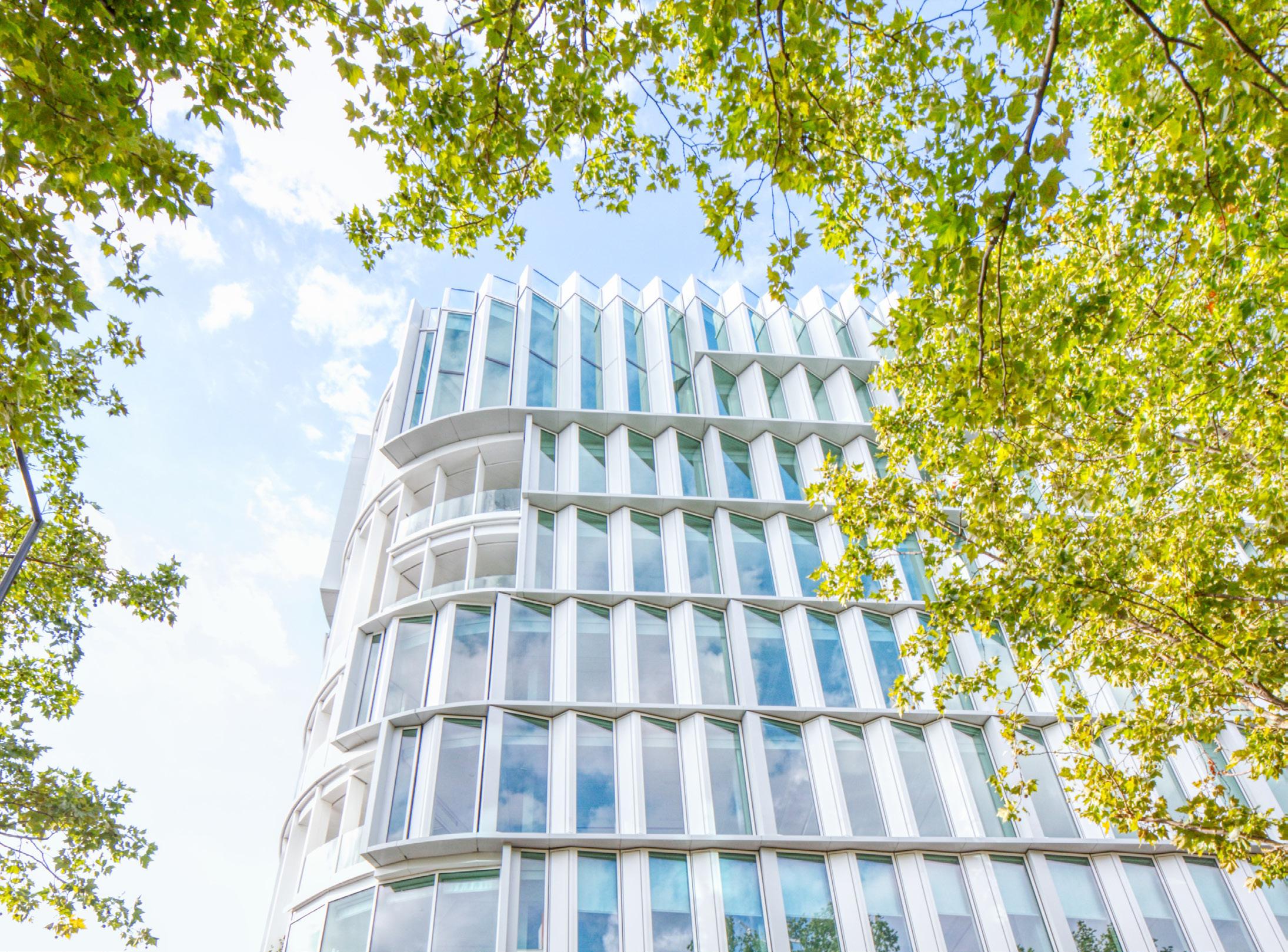
Immeuble de logements que nous avions livré en 1965 et que nous réhabilitons actuellement
Residential building that we delivered in 1965 and that we are currently rehabilitating

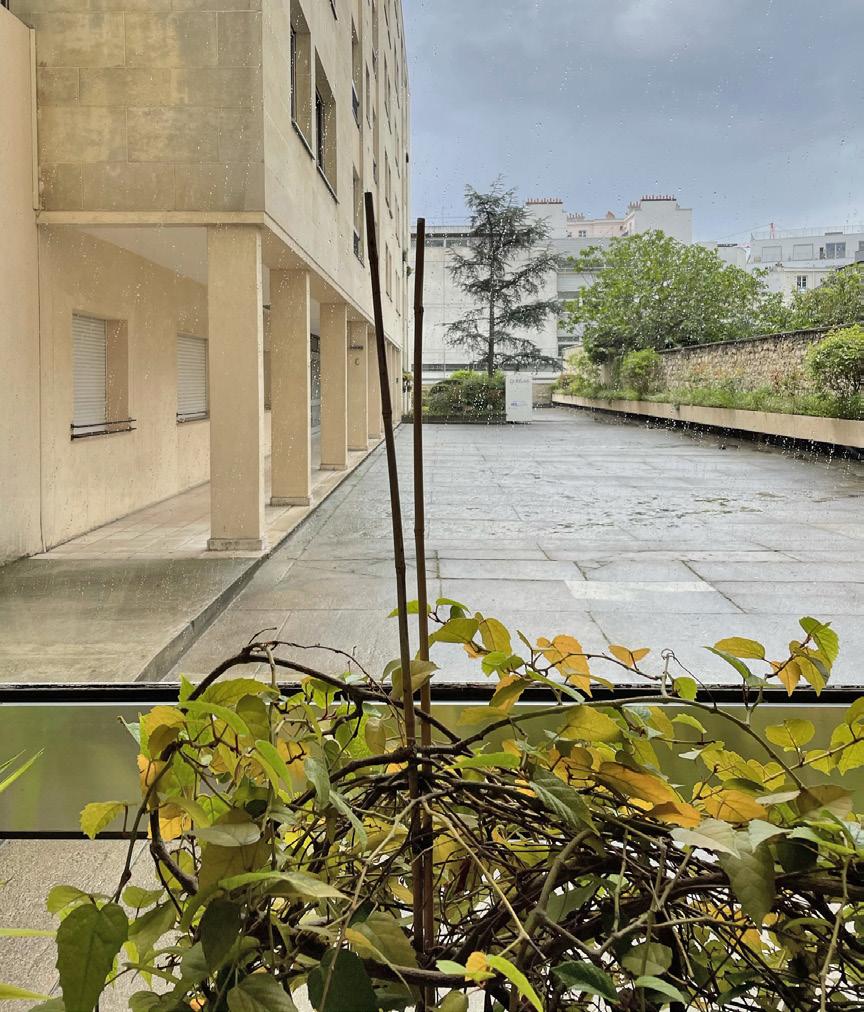
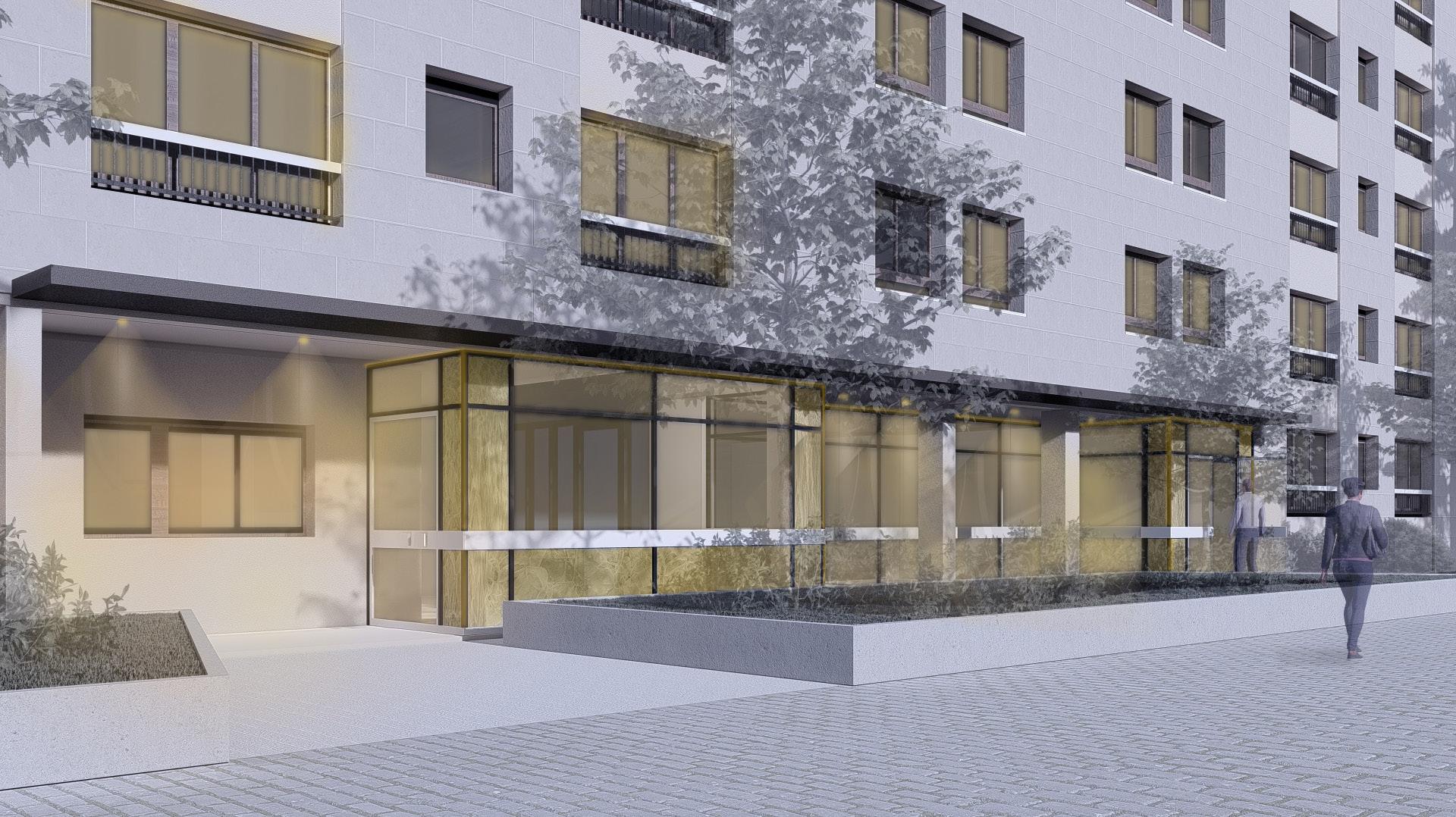
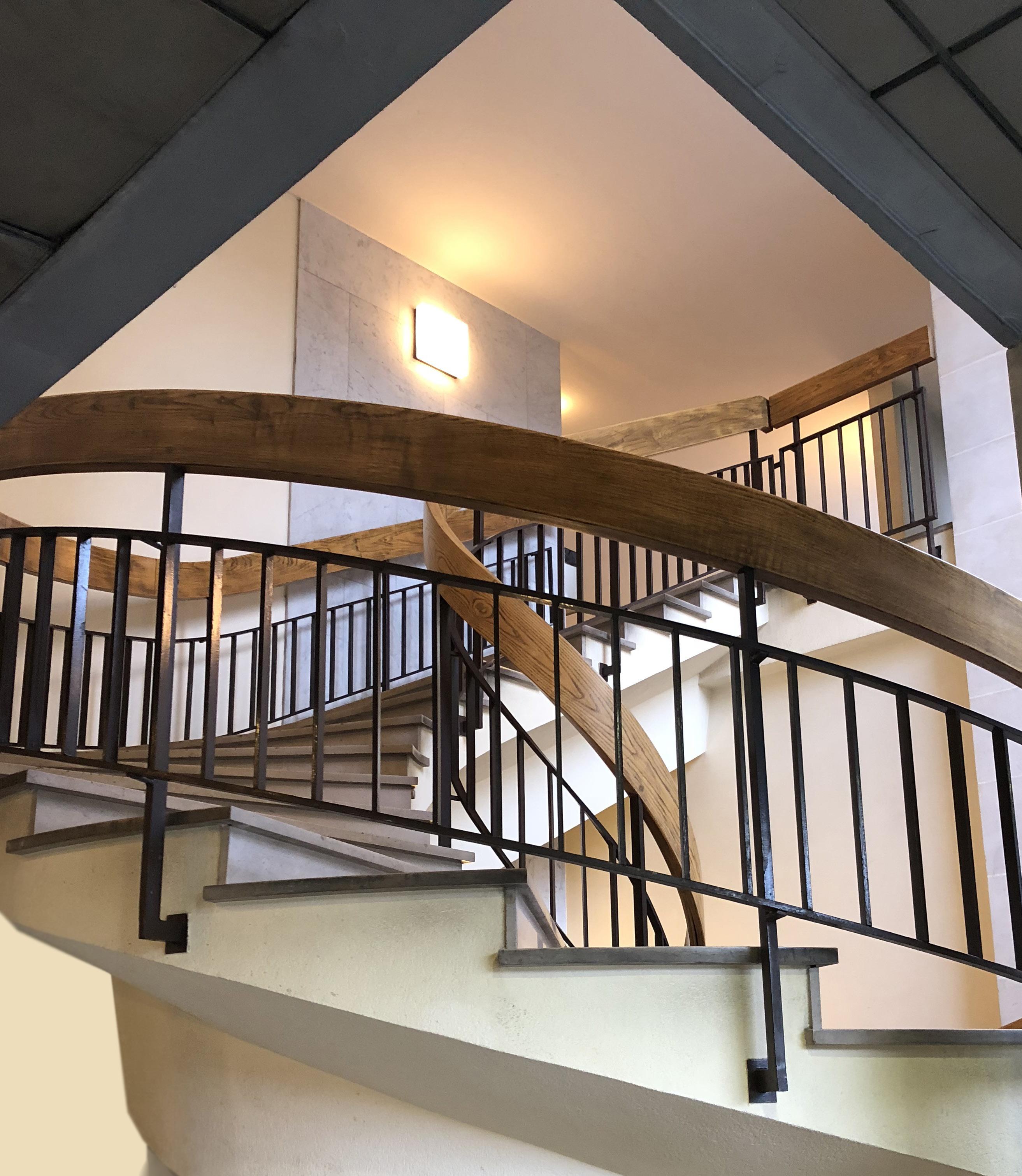
Client / Client : Groupe Gecina • Lieu / Location : 220-222 rue du Faubourg SaintAntoine, 75012 , Paris France • Programme / Program : Immeuble de logements / Housing building • Architectes / Architects : AAAB • Superficie / Surface Area : NC • Statut / Status : Livré en 1965, rénovation des façades en cours / Delivered in 1965, renovation of the facades in progress
Immeuble de logements que nous avions livré en 1967 et que nous réhabilitons actuellement
Residential building that we delivered in 1967 and that we are currently rehabilitating

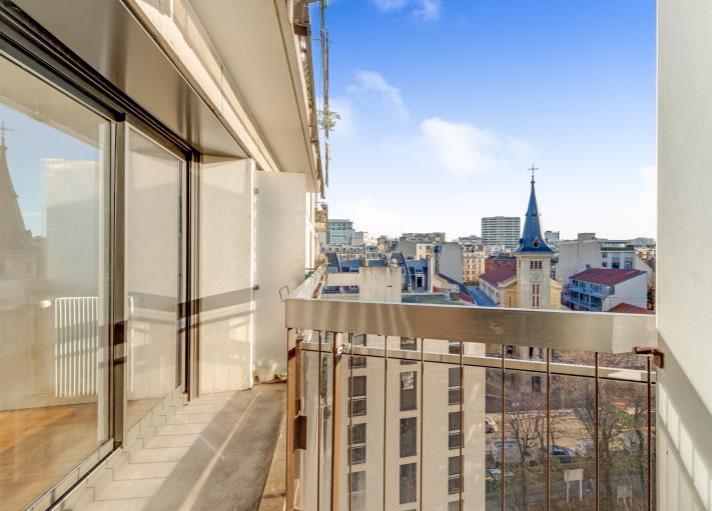
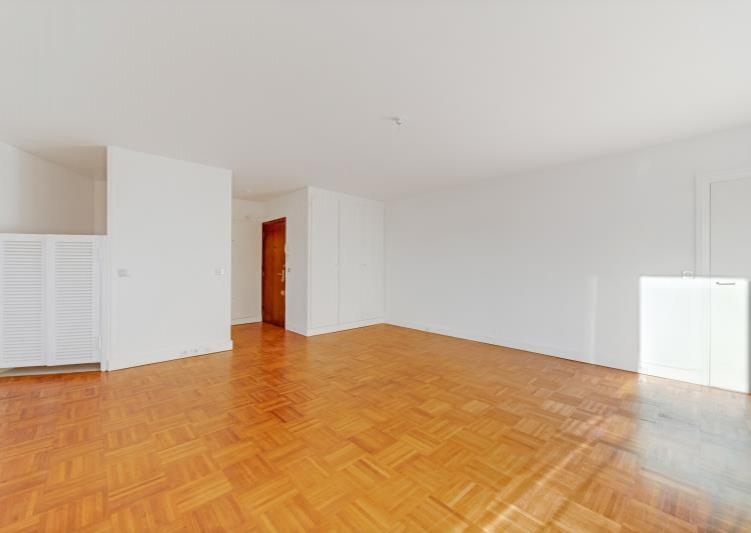
Ensemble de bâtiments comportant 350 logements et 10 000 m² de bureaux, l’opération, qui a demandé 5 années d’efforts de l’architecte et de l’entreprise “Société Nationale de Construction S.N.C.T.” a donné lieu à une novation architecturale: des bâtiments construits sur tripode à rez-de-chaussée dont les éléments de coffrage réalisés par l’entreprise de serrurerie Pourteau ont permis de faire travailler le béton à 200 Kg par m3
Set of buildings comprising 350 homes and 10,000 m² of offices, the operation, which required 5 years of efforts from the architect and the company “Société Nationale de Construction S.N.C.T.” gave rise to an architectural innovation: buildings built on a ground-floor tripod whose formwork elements produced by the locksmith company Pourteau made it possible to work the concrete at 200 kg per m3


Client / Client : Groupe Gecina • Lieu / Location : 10 rue du Dr Roux 75015 Paris, France • Programme / Program : Immeuble de logements et bureaux / Residential and office building • Architectes / Architects : AAAB • Superficie / Surface Area : 10000m² de bureaux et 350 logements • Statut / Status : Livré 1967, rénovation en cours / Delivered in 1967, renovation in progress

Agence d’Architecture
A. Bechu & Associés
82,